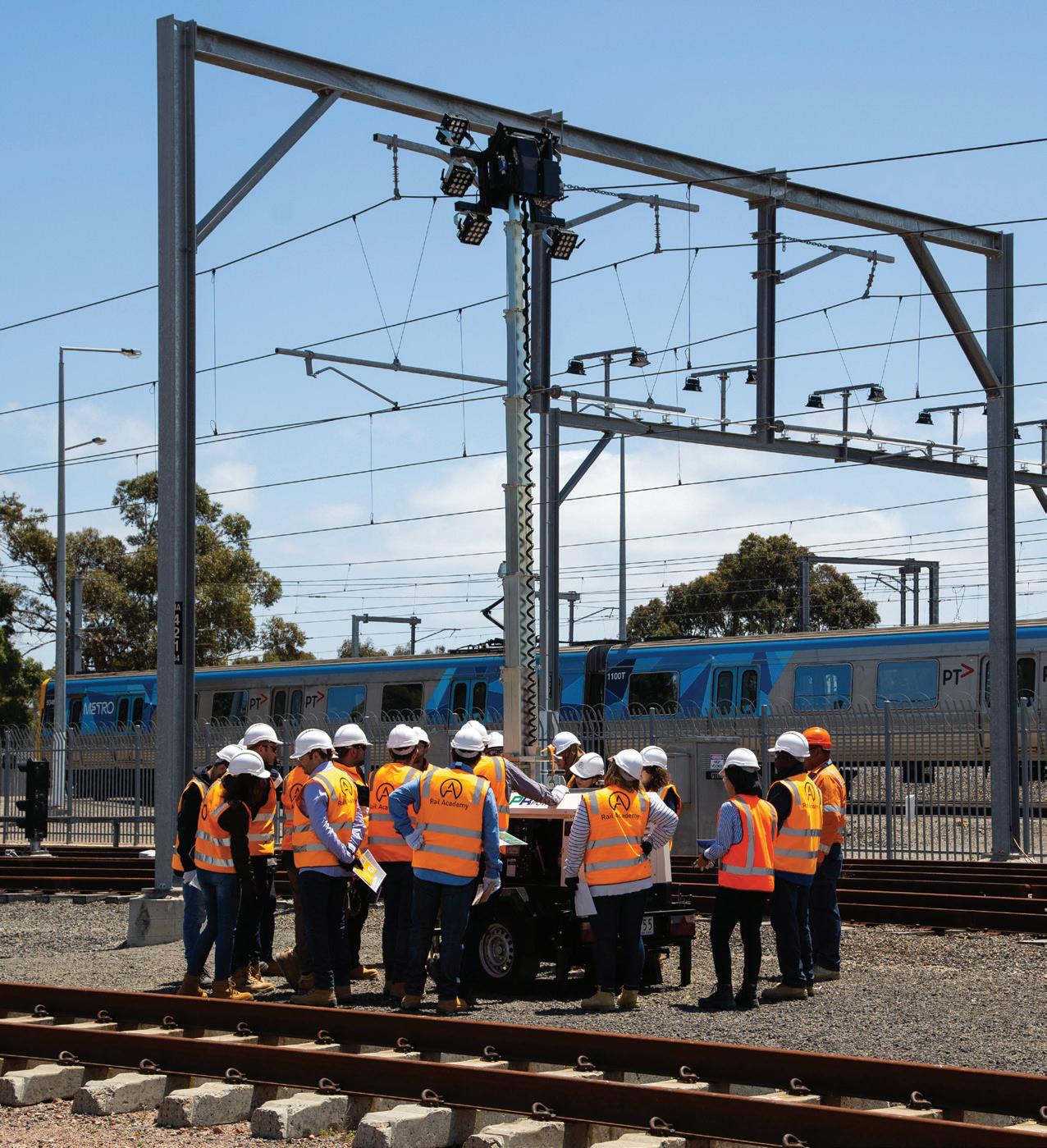
geospatial reference system
Issue 14 March 2020 ROAD - RAIL - AIRPORT - PORT - URBAN - UTILITY
UPGRADING AUSTRALIA’S
LEAPS IN RAIL DIVERSITY, INCLUSIVITY AND TRAINING
2020 AND BEYOND
CONSTRUCTION OUTLOOK:

WE’RE PROUD TO BE THE SPECIALIST EQUIPMENT PARTNER OF THE CONTRACTORS THAT ARE LEADING THE WAY FORWARD. NORTH QUEENSLAND 671 Ingham Road Mount St John QLD 4818 QUEENSLAND 147 Archerfield Road Richlands QLD 4077 NSW & ACT 45 Eastern Creek Drive Eastern Creek NSW 2766 VICTORIA & TAS 415 Fitzgerald Road Derrimut VIC 3026 SOUTH AUSTRALIA 9-11 Hakkinen Road Wingfield SA 5013

Vermeer surface miners and track trenchers have been part of methodologies proven on numerous Australian infrastructure projects. Whether it’s lowering the bench in a road tunnel, a box cut for a train station, or trenching a comms channel, we have the equipment and team to support your project. Contact your local Vermeer team to learn more.
Australia
VERMEER.COM.AU | 1300 VERMEER Vermeer and the Vermeer logo are trademarks of Vermeer Manufacturing Company in the United States and /or other countries. © 2019 Vermeer Equipment Holdings Pty Ltd. All Rights Reserved. . / VermeerAustralia


EDITOR’S WELCOME
Iwant to begin first by acknowledging the devastating start we’ve had to the year. As the infrastructure industry was gearing up for some exciting 2020 plans, most of the country was hit with extreme bushfires like we’ve never seen before.
The fires have sadly seen loss of life, the death of up to one billion native animals, and the widespread destruction of habitats and land, homes and critical infrastructure.
As we send this issue to print, a lot of Australia is still battling intense blazes, while other parts are starting to look at the next step – recovery and rebuilding.

Rail is also moving in leaps and bounds when it comes to making the industry more diverse, and infrastructure more accessible. We take a look at a few particular projects helping to solve these problems, including a program providing job opportunities to engineers from refugee or disadvantaged backgrounds, and findings from ACRI’s Rail travel and disability: An international perspective on accessibility
ABN:
Collingwood VIC 3066
P: (03) 9988 4950
F: (03) 8456 6720
monkeymedia.com.au info@monkeymedia.com.au infrastructuremagazine.com.au news@infrastructuremagazine.com.au
Editor
Imogen
Rhianna
Business
Rima
Governments have announced funding towards rebuilding infrastructure in affected communities including $1 billion over the next two years to help rebuild NSW communities, and $2 billion to coordinate rebuilding communities through the establishment of the National Bushfire Recovery Agency.
It’s also been a time for energy and water utilities, as well as numerous transport infrastructure companies, to deal with huge damages.
Unfortunately we’re not in the clear just yet, and rebuilding vital community infrastructure is going to be a strong focus for the next little while, but it is good to see how Australians and organisations are doing what needs to be done.
On a more positive note, the future of the construction sector in the 2020s more generally looks set to offer substantial growth opportunities, with Adrian Hart from BIS Oxford Economics – whose article appears in this issue – predicting that Western Australia and Queensland will be the strongest performers in growth terms over the next three years. You can read more of Adrian’s industry predictions on page 28.
We’ve also got major projects underway across all sectors, making training and skills capacity an issue that is front of mind in order to meet demand. One sector that is feeling the workforce capability pressures is rail, but it’s also a sector that is putting in place measures to support this, including training programs by the Australasian Railway Association.
Bringing all these issues together, and something that I’m very excited to share with you, is the launch of The Critical Infrastructure Summit. In September, Infrastructure is bringing our Asset Management for Critical Infrastructure and Disaster Management Conferences together, alongside the brand new Construct 2020 event, for The Critical Infrastructure Summit
Held in Brisbane, the Summit will consist of the three co-located events covering the whole infrastructure cycle – construction, asset management, and disaster resilience. You’ll be hearing a lot more about this in the coming months, but if you’re working in or with Australia’s infrastructure industry, this is a not-to-be-missed event. You can find out more information on page 60 or by visiting critical-infrastructure.com.au.
If your specialty is more in the smart cities space, we’re also bringing back Smart Cities, running 28–29 May in Melbourne. See what’s happening this year at smart-cities.com.au/event.
We’re also proud to partner with other industry events for this edition, including Sydney Build Expo, Locate 2020 and CORE2020. We’ll be distributing the magazine at these events and the team will be in attendance, so be sure to say hi. While the last few months have been challenging, there are some exciting things ahead for the industry. Let me know how you’re feeling going into 2020 and what issues you and your sector are facing, as I’m always keen to hear your thoughts.
Jessica Dickers Editor
2 March 2020 // Issue 14 www.infrastructuremagazine.com.au
Drop me a line at jessica.dickers@monkeymedia.net.au or feel free to call me on 03 9988 4950 to let me know what you think. dedicated to ensuring our Moxa portfolio is fully supported with national supply chain, and a team of Moxa certificated Industrial Internet of Things (IIoT) operations, there is also a significant meet the technical security ensures your industrial Strengthen industrial cybersecurity compromising efficiency madison.tech March 2020 ROAD RAIL - AIRPORT PORT URBAN UTILITY UPGRADING AUSTRALIA’S geospatial reference system LEAPS IN RAIL DIVERSITY, INCLUSIVITY AND TRAINING CONSTRUCTION OUTLOOK: 2020 AND BEYOND INFRASTRUCTURE MARCH 2020 Published by
Media Enterprises
Monkey
36 426 734 954 204/23–25 Gipps St
Jessica Dickers
Editor
Ho
Lauren Butler
Assistant
Kim
Journalists
Hartmann
King
Development Managers
Alastair Bryers
Manager
Munafo Design
Buckmaster
Harris Publisher Chris Bland
Editor Laura Harvey ISSN: 2206-7906 8,025 This publication has been independently audited under the AMAA’s CAB Total Distribution Audit. Audit Period: 1 April to 30 September 2019
Alejandro Molano Designers Jacqueline
Danielle
Managing
NOISE & VIBRATION
Acoustic absorption panels for wall and floor applications


• Non combustible systems with zero smoke emissions
• Durable & designed for quick, easy install
• Custom designed panels to suit all applications
• Internationally tested & certified for tunnel applications
• Manufactured in accordance to ISO9001
Pyrotek® provides innovative noise control products and tailored acoustic insulation solutions to designed specifications for global rail and infrastructure markets.
To find out more about Reapor and Viterolite or other products visit pyroteknc.com
PROTECT
Sydney Metro - Northwest Rail Tunnel
IN TUNNELS

HEADING

A WORD FROM INFRASTRUCTURE AUSTRALIA
RESILIENCE AND RESPONDING TO CHANGE: ADAPTING TO UNCERTAINTY
The year 2020 marked the dawning of a new decade, a new year, and with it perhaps the makings of a new normal amongst a veil of smoke across Australia.
INDUSTRY INSIGHTS
IS CONGESTION CHARGING THE ANSWER TO PEAK HOUR?
There may not be many topics on which the New South Wales, Victorian and Australian Governments agree furiously, but congestion charging is one.
GLOBAL INFRASTRUCTURE SECTOR NEEDS A SHAKE UP
HOW AIRPORT INFRASTRUCTURE IS SUPPORTING THE BUSHFIRE EFFORT
CIVIL CONSTRUCTION
INFRASTRUCTURE OUTLOOK: 2020 AND BEYOND
SELECTING THE RIGHT TRENCHING SOLUTION
CHANGES TO WORKPLACE MANSLAUGHTER LEGISLATION IN VICTORIA
GRADER MACHINE CONTROL TECHNOLOGY FOR THE FINAL TRIM

SOFTWARE, COMMUNICATIONS AND CONNECTIVITY
USING LIDAR IN AUSTRALIAN-FIRST ROAD SAFETY TECHNOLOGY
Currently, around one third of lives lost and 44 per cent of serious injuries on Victorian roads happen at intersections. VicRoads is currently trialling groundbreaking new technology that will be able to predict crashes and near misses at intersections –and tell us how to prevent them.
3D MODELLING OF HEADSTOCKS FOR ELEVATED FLINDERS LINK PROJECT
MAKING TICKETING TECH SMARTER
LEVERAGING DIGITAL TRANSFORMATION: INSIGHTS FROM CONSTRUCTION, ENGINEERING AND INDUSTRIAL
AUSTRALIA’S SMART CITIES AND COMMUNITIES LEADERS TO GATHER IN MELBOURNE
RAPID DEPLOYMENT CAMERAS ENABLE MONITORING OF REMOTE SITES
TRAINING AND SKILLS
TRAINING THE NEXT GENERATION OF RAIL PROFESSIONALS
With the huge pipeline of rail projects around Australia showing no sign of slowing, the sector must act fast if it is to build its workforce and meet growing demand. In December 2019, Infrastructure Assistant Editor, Kim Ho, attended the Australasian Railway Association’s Young Professionals Forum to hear from the industry’s current and future leaders on the challenges and opportunities awaiting rail.
SHAKING UP CONTINUING PROFESSIONAL DEVELOPMENT IN CONSTRUCTION
EPIC OPPORTUNITIES IN RAIL FOR REFUGEE ENGINEERS
4 March 2020 // Issue 14 www.infrastructuremagazine.com.au
CONTENTS
16 18 28 38 42 44 46 48 50 22 32 26 34 36 52 54 56


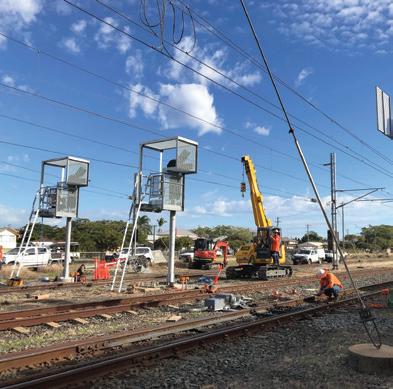
REGULARS
UPGRADING AUSTRALIA’S GEOSPATIAL REFERENCE SYSTEM
While global positioning systems (GPS) can currently provide 5-10m accuracy, more precise positioning is increasingly important for applications in civil engineering, construction, disaster response, flood and storm modelling and more. Here, Nicholas Brown, Director of National Geodesy at Geoscience Australia, talks about the $225 million Positioning Australia program, and upgrades to the Australian Geospatial Reference System.
CRITICAL INFRASTRUCTURE SUMMIT
SAVE THE DATE: CRITICAL INFRASTRUCTURE SUMMIT
CONDITION MONITORING AND MAINTENANCE
NEW ASSET PERFORMANCE CONTRACTS FOR SYDNEY'S ROADS
WORKING TO EQUIP RAIL PASSENGERS WITH INDEPENDENCE
SIGNALLING, TRACKING AND CONTROL SYSTEMS
OVERHAULING BUNDABERG’S
02 EDITOR’S WELCOME
06 CONTRIBUTORS
72 ADVERTISERS’ INDEX
72 FEATURES SCHEDULE NEWS
8 THOUSANDS OF NORTH EAST LINK JOBS UP FOR GRABS AS REGISTRATIONS OPEN
8 WORK RAMPS UP ON SUNSHINE COAST’S NEW RUNWAY
9 $496 MILLION LEVEL CROSSING REMOVAL CONTRACT AWARDED
9 METRONET MORLEY-ELLENBROOK LINE SEEKS CONSTRUCTION CONTRACTOR
10 UNPRECEDENTED ROAD PROJECT PIPELINE UNDERWAY IN QUEENSLAND
10 CEO OF WESTERN SYDNEY AIRPORT TO STEP DOWN
11 CONTRACTORS SHORTLISTED FOR PORT BOTANY FREIGHT CONNECTIONS PROJECTS
12 CONSTRUCTION INDUSTRY SUFFERING FROM WORK STRESS
13 REBUILDING INFRASTRUCTURE FOLLOWING DEVASTATING BUSHFIRES
14 SA–NSW INTERCONNECTOR TO EASE TRANSITION TO RENEWABLES
5 www.infrastructuremagazine.com.au March 2020 // Issue 14 CONTENTS
70
RAIL EQUIPMENT
SIGNALLING SYSTEM 66 58 60 62 SPATIAL & GIS
HEADING
Marion Terrill
Transport and Cities Program Director, Grattan Institute
Preamble
Marion is a leading policy analyst with experience that ranges from authoring parts of the 2010 Henry Tax Review to leading the design and development of the MyGov account. She has provided expert analysis and advice on labour market policy for the Commonwealth Government, the Business Council of Australia and at the Australian National University. She joined the Grattan Institute in April 2015 to establish the Transport Program, and has published on investment in transport infrastructure, cost overruns, value capture, discount rates, adaptive cities and, most recently, on congestion charging.
Contributors

Freptatibus nes ationse aut et aut mo quos aruptatus int, nonsequid magnis nonsedipsunt explitas andi que sandae veles cuptatiis et as ut omnimetur acerum ese eos sit, cus non restrum que nat maximod mi, quia dolupta tustis dent pra prat as sus.

John Kilgour
CEO, Civil Contractors Federation, Victoria
John Kilgour is the Chief Executive Officer for the Civil Contractors Federation Victoria. Known for his strong advocacy work and networks at local and state government levels, he joined CCF in February 2016 from the Committee for Ballarat where he was CEO. Prior to joining the Committee for Ballarat, he had a long and distinguished career in the downstream oil industry with BP. During his 34 years with the BP Group of companies, he delivered major investment projects in the oil and gas, retail, petrol and convenience sectors throughout Australia, New Zealand and South East Asia. In February 2017, he was appointed President of the Victorian Civil Construction Industry Alliance, which CCF is a member.
Marie Lam-Frendo
CEO, Global Infrastructure Hub
Marie was appointed Global Infrastructure Hub CEO in January 2019. Prior to joining the GI Hub, she was the Head of Asia-Pacific for Acuity, the advisory services business of the SNCL group, helping clients in regard to infrastructure project strategy and finance. From 2011 to 2014, Marie headed the Infrastructure Initiatives department of the World Economic Forum, where she led their thought leadership activities, publishing thought leadership reports on best practices in the infrastructure sector. She led the dissemination effort of these best practices to governments and advocated to coalitions such as the B20 and the G20. Before that, Marie worked for European utilities Essent, then RWE, where she drove their business development activities in the Africa and Central Asia region for various commodities, including their equity investment in LNG and hydro power plants. She started her career in 2001, and worked for various engineering consulting firms holding several technical and commercial positions for energy and transport projects in Africa, Middle East and Europe.

6 March 2020 // Issue 14 www.infrastructuremagazine.com.au INFRASTRUCTURE
Contributors
Andrew Meier
Executive Director/Chief Executive Officer, Australasian Centre
for Rail Innovation (ACRI)
Since July 2017, Andrew has overseen the collaborative research program of the Australasian Centre for Rail Innovation (ACRI), leading the delivery of knowledge to further rail industry safety, efficiency, connectivity and sustainability. ACRI’s partners from across the private and government sector pool their resources to achieve economies of scale in the investigation of issues and understanding of emerging opportunities.
Prior to ACRI, Andrew has been a leader of international transport information sharing initiatives, including the first Australian chair of the International Transport Research Documentation (ITRD) Operational Committee which operates under the secretariat of the International Transport Forum/OECD. He was a key participant in facilitating the merger of two international resources to form the TRID database of transport information sources, maintained by the US Transportation Research Board and now attracting almost two million visits annually.
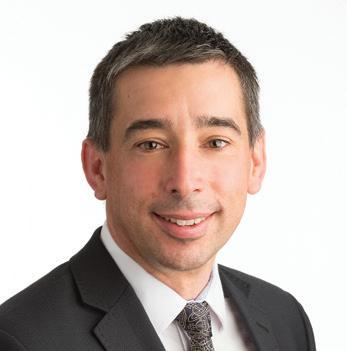

Jo Lomas
Head of Property Management and Operations, Canberra Airport
Jo has over 20 years of property management experience and joined the Capital Airport Group team in 2006. Jo is the Head of Property Management and Operations team and her team of 85 staff oversee the facilities management and operations across the businesses portfolio.
The team is responsible for over 100 commercial, retail, hotel, hangar and residential properties, as well as the maintenance and operations of the Canberra Airport airfield, passenger terminal, retail and the associated car parking.
Matt Sweeting
Director of Project Implementation, Transport for NSW
Matt is a Chartered Engineer with a Masters in Business Administration, and joined Transport for NSW as the Director Project Implementation with responsibility to develop, procure and mobilise new maintenance contracts for the Sydney urban road network.
Prior to joining Transport for NSW, Matt was the General Manager for DM Roads, a road and ITS maintenance business operating in New South Wales, Queensland and Western Australia. He led on all matters including zero harm, operations and securing new work.
Matt spent 18 years working for a major UK client, Highways England, in various positions including Regional Director and National Maintenance Divisional Director. In these roles he developed, implemented and administered a number of different road and ITS maintenance contracts, and chaired the national supply chain community forums.

7 www.infrastructuremagazine.com.au March 2020 // Issue 14 INFRASTRUCTURE
THOUSANDS OF NORTH EAST LINK JOBS UP FOR GRABS AS REGISTRATIONS OPEN

The Victorian Government has created a ‘job bank’ for workers, businesses and companies to help build the North East Link, with more than 10,000 jobs and millions of dollars of contracts up for grabs as part of the $15.8 billion project.
The North East Link is set to carry up to 135,000 vehicles per day, slash travel times by up to 35 minutes and deliver the missing link in Melbourne’s freeway network.
The Victorian Government is encouraging sole traders and small and medium businesses to register their details now for contract opportunities as North East Link is built over the next eight years.
Plumbers, electricians, building trades, roof services, landscapers, form workers, carpenters, bricklayers and concreters are just some of the businesses being encouraged to register their interest.
There will be opportunities for traffic management services, training providers, safety gear suppliers, air conditioning and heating services, surveying and mapping services, engineering design and consulting, architects, office administration, and mechanics.
Manufacturing industries and producers of cement and lime, ready-mixed concrete, asphalt, electric cables and switches are also being sought, as well as businesses who hire out construction-related machinery and equipment.
With builders getting ready to start early works for North East Link soon, there are opportunities for jobs now and for small and medium-sized businesses to get on board. The consortium to be selected by the end of the year to design and build this massive project, will also need to show how it will create local jobs and training opportunities.
Businesses and employees in the Bulleen Industrial Precinct which are impacted by the project will be offered additional reskilling and training opportunities. As part of North East Link’s business support package, businesses will have access to individual support plans, a relocation specialist and marketing assistance.
An employment assistance strategy will also be developed for employees of businesses closing or relocating and they will receive skill assessments, job support, and training and development.
Victorian Minister for Transport Infrastructure, Jacinta Allan, said, “North East Link is a huge project that will change how we move around our city forever – and we need all hands on deck to build it.”
Interested businesses should register their interest at gateway.icn.org.au/project/4055/north-east-link.
WORK RAMPS UP ON SUNSHINE COAST’S NEW RUNWAY
The first layer of asphalt has been laid on Sunshine Coast Airport’s new runway, marking a key milestone for the project.
In the lead up to the opening of the new runway on 21 May 2020, more than 400,000 tonnes – almost eight times the weight of the Sydney Harbour Bridge – of fine crushed rock and 64,000 tonnes of asphalt will be placed on top of a compacted sand embankment.
The project involves the construction of a north-west/southeast runway and associated infrastructure at the existing Sunshine Coast Airport in Marcoola.
Works commenced in March 2019 and the project as a whole is scheduled for completion in late 2020.
The new runway will be bigger, wider and better aligned with prevailing winds.
Sunshine Coast Council Deputy Mayor and Sunshine Coast Airport Expansion Project (SCAEP) Project Control Group Chairman and Finance Portfolio Councillor, Tim Dwyer, said laying the asphalt was an important milestone as the new 2.5km-long runway and 1.2km-long taxiway enter the final phase of construction.
“The new runway has been on planning documents since the 1980s, so to be here where we can see the finishing touches being applied to the runway is a huge achievement,” Cr Dwyer said.
“By Christmas, more than half of the required gravel was in place, as well as the final layers of asphalt on the eastern end of the runway.

“This exciting milestone is only the tip of the iceberg for what is to come in the next few months.”
SCAEP Project Director, Ross Ullman, said paving the runway would continue in early 2020 as well as preparing for new aircraft apron bays, a 5km perimeter road, 7km of drainage channels and installation of 25km of lighting conduits on the new runway and taxiways.
The airport expansion project is the single largest construction project happening on the coast right now.
There are approximately 220 workers onsite each day with more than 200 of those being Sunshine Coast locals. A further 2,230 new full-time direct and indirect jobs will be created by 2040.
NEWS
$496 MILLION LEVEL CROSSING REMOVAL CONTRACT AWARDED
A$496 million contract has been awarded to remove the dangerous and congested level crossings at Manchester Road, Mooroolbark and Maroondah Highway, Lilydale in Victoria.
The contract was awarded to an alliance of Laing O’Rourke, Jacobs and Metro (MTM).
More than 53,000 vehicles use the crossings each day with boom gates down for up to a quarter of the morning peak.

Detailed design work will begin in 2020 to incorporate community feedback into the recently released concept designs.
Local residents will have the opportunity to provide feedback as the designs are further refined.
The removal of the level crossings will involve building new rail bridges and two new stations in order to reduce travel times and improve connectivity across all modes of transport.
A multi-deck carpark will also be built at Mooroolbark Station with up to 450 new and upgraded spaces to increase parking options.
Construction will begin in mid-2020 with works estimated to be completed in 2022.
METRONET MORLEY-ELLENBROOK LINE SEEKS CONSTRUCTION CONTRACTOR
The Western Australian Government has begun its search for a company to design and construct the METRONET Morley-Ellenbrook Line, with the Request for Proposal (RFP) now released to market.
The RFP calls on companies to design, construct and commission the new METRONET rail line under a competitive alliance model.
The main works contract will include the design, construction and commissioning of rail track, systems and five stations. This will include bulk earthworks and retaining, structures, grade separations, roads and drainage.
The two best submissions for the main works will be shortlisted, with the shortlisted consortia required to provide a detailed bid indicating how they plan to deliver the project.
construction starting on Tonkin Gap later this year.

A contract is expected to be awarded later in 2020, with main construction work to start in 2021.
Enabling works for the Morley-Ellenbrook Line have started, with early works already underway at Bayswater Station, and
The 21km Morley-Ellenbrook Line will spur off the Midland Line at Bayswater, run up the middle of Tonkin Highway, through land north of Marshall Road, along the western side of Drumpellier Drive (formerly New Lord Street) and finish in Ellenbrook town centre.
Five stations – Ellenbrook, Whiteman, Malaga, Noranda and Morley – will be built as part of the project, with a futureproofing provision for a sixth station at Bennett Springs East.
The RFP release comes after an industry briefing in December 2019, where over 300 people from construction and related companies attended to hear all about the project and the opportunities it presents.
Local businesses are encouraged to complete the Construction Business Register, which will be provided to shortlisted bidders during the competitive tender phase and again after contract award.
The project definition plan, which outlines the scope and budget for the Morley-Ellenbrook Line, will be completed in mid-2020.
9 www.infrastructuremagazine.com.au March 2020 // Issue 14 NEWS

UNPRECEDENTED ROAD PROJECT PIPELINE UNDERWAY IN QUEENSLAND
Queensland’s largest-ever road upgrade program will commence in 2020, continuing the State Government’s record $23 billion roads and transport rollout.
Visiting the jointly-funded $812 million Bruce Highway upgrade on the Sunshine Coast, Queensland Transport and Main Roads Minister, Mark Bailey, said shovels would hit the ground in 2020 on major projects along the length of the Bruce Highway as part of the upgrade.
This project is among billions of dollars’ worth of upgrades for the M1, Capricorn Highway, Ipswich Motorway and Smithfield Bypass.
“From Weipa to Coolangatta, the outback to the coast, thousands of tradies are getting on with the job of building new roads,” Mr Bailey said.
More than 21,500 jobs will be supported by the $23 billion roads and transport investment, including 13,500 jobs for regional Queensland.
“Queenslanders are already seeing major road projects nearing completion in places like Cairns, Townsville, Mackay, Central Queensland, Wide Bay, the south east and across regional Queensland, but that’s just the tip of the iceberg,” Mr Bailey said.
Major projects getting underway in 2020 include:
♦ $1 billion Bruce Highway upgrade, Cooroy to Curra Section D – 576 jobs
♦ $1 billion M1 upgrade from Varsity Lakes to Tugun near the NSW border – 837 jobs
♦ $662 million Bruce Highway upgrade from Caboolture to Steve Irwin Way – 664 jobs
♦ $481 million Bruce Highway upgrade from Edmonton to Gordonvale in Cairns – 466 jobs
CEO OF WESTERN SYDNEY AIRPORT TO STEP DOWN
Western Sydney Airport CEO, Graham Millett, will step down from his role in June 2020 after more than two years with the company.
Mr Millett said, “After nearly 30 years in the industry, aviation and infrastructure are in my blood and I feel privileged to be a part of such a game changing and inspiring project that will bring so many benefits to Western Sydney.”
Mr Millett leaves Western Sydney Airport with the $5.3 billion project on time and on budget.
Western Sydney Airport Chair, Paul O’Sullivan, said as founding CEO of the project, its success to date is a tribute to Mr Millett and the team he built.
“Graham’s blend of strategic and tactical thinking has ideally positioned the project to take advantage of future opportunities and rise to meet its challenges,” he said.
♦
$749 million M1 and busway upgrade at Logan – 721 jobs
♦ $712 million Gold Coast Light Rail Stage 3A – 760 jobs
♦ $550 million Sunshine Coast rail upgrade – 333 jobs
♦ $301 million Bruce Highway upgrade at Maroochydore Road and Mons Road interchanges – 382 jobs
♦ $110 million Mackay Northern Access upgrade – 154 jobs
♦ $150 million Bruce Highway interchange upgrade at Deception Bay – 270 jobs
♦ $44.5 million Springfield Central park ‘n’ ride upgrade –44 jobs
Major projects already underway include:
♦ $104 million Cairns Southern Access upgrade from Kate Street to Aumuller Street – 113 jobs
♦ $514 million Haughton River Floodplain project at Giru, 40km south of Townsville – 544 jobs
♦ $497 million Mackay Ring Road – 534 jobs
♦ $121 million Rockhampton Northern Access Upgrade –260 jobs
♦ $75 million Capricorn Highway duplication, Gracemere –187 jobs
♦ $812 million Bruce Highway upgrade from Caloundra Road to the Sunshine Motorway – 680 jobs
♦ $400 million Ipswich Motorway upgrade from Rocklea to Darra – 471 jobs
♦ $195 million M1/M3 merge upgrade – 257 jobs
♦ $152 million Smithfield Bypass in Cairns – 115 jobs
♦ $197.5 million M1 upgrade from Mudgeeraba to Varsity Lakes – 257 jobs
♦ $80 million Sumners Road interchange – 105 jobs
♦ Warrego Highway upgrade at the Chinchilla open level crossing
“We thank him for his dedication and leadership.”
Mr Millett will remain in the role until the end of the financial year to ensure a smooth transition to a new CEO.
“Graham will continue to lead the company as we commence the search for the new CEO. His agreement to stay on until next June ensures sufficient time for an effective handover,” Mr O’Sullivan said.
Western Sydney International (Nancy-Bird Walton) Airport is on track to open to passenger and freight operations in 2026.

10 March 2020 // Issue 14 www.infrastructuremagazine.com.au NEWS
CONTRACTORS SHORTLISTED FOR PORT
BOTANY FREIGHT CONNECTIONS PROJECTS
The Australian Rail Track Corporation (ARTC) has shortlisted contractors to design and construct the Botany Rail Duplication and Cabramatta Loop projects in New South Wales.
Three contractors have been shortlisted to bid for the Botany Rail Duplication Project including CPB Contractors, Laing O’Rourke and John Holland. Downer EDI, Fulton Hogan and John Holland have been shortlisted to bid for the Cabramatta Loop Project.
ARTC CEO and Managing Director, John Fullerton, said, “Improving freight performance at Port Botany is critical for the economic growth and prosperity of Sydney, New South Wales and Australia, with the amount of container freight handled by the port set to significantly increase by 77 per cent to 25.5 million tonnes by 2036.
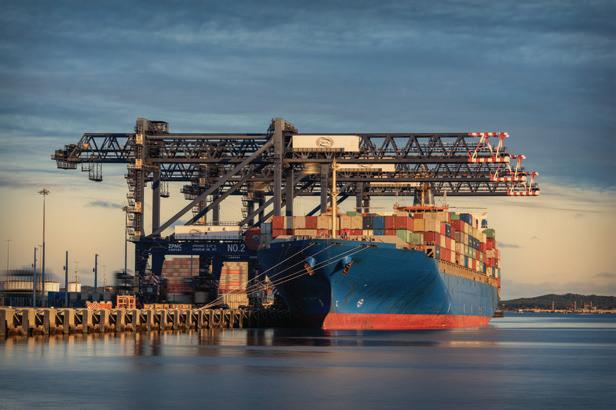
“Each freight train can take up to 54 trucks worth of freight off the road, tackling congestion and improving the everyday commute in Sydney.”
Mr Fullerton said that of the Federal Government’s $400 million committed to meeting future freight demand, the Botany Rail Duplication and new Cabramatta Loop projects had been identified as key projects to enable more freight to be transported by rail from Sydney.

• CANOPY
TUBES
“These two landmark projects will strike the balance between rail and road by duplicating the remaining single freight rail track section of the Botany Line between Mascot and Botany, and constructing a new passing loop on the Southern Sydney Freight Line (SSFL) between Cabramatta Station and Warwick Farm Station to allow for freight trains up to 1,300m in length,” Mr Fullerton said.
“Once completed, the Cabramatta Loop Project will allow freight trains travelling in either direction along the Southern Sydney Freight Line to pass each other and provide additional rail freight capacity for the network.”
The NSW Ports’ 30-year Master Plan shows 80 per cent of containers moving through Port Botany are delivered to locations within a 40km radius of the port, and port rail shuttles are essential to help move more of the freight task to and from outer Western and South Western Sydney freight precincts.
“These major projects aim to improve rail capacity, flexibility and reliability for freight rail customers, encouraging more freight to shift from road to rail, and we are getting on with delivering these massive improvements,” Mr Fullerton said. The formal tender process for both projects will be undertaken in 2020.
133 Bluestone Circuit, Seventeen Mile Rocks, QLD, 4073
Tel: +61 7 3714 5700
Fax: +61 7 3715 8813
Email: info@hmi.com.au
Web: www.hmi.com.au
• BOLTING & TUNNELLING • CUTTER HEAD

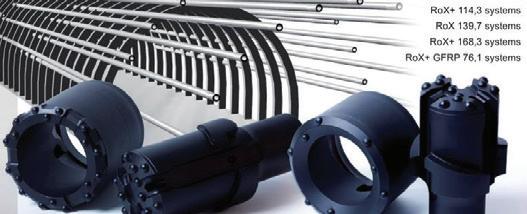

11 www.infrastructuremagazine.com.au March 2020 // Issue 14 NEWS
PO Box 1467, Kenmore, QLD, 4069
CONSTRUCTION INDUSTRY SUFFERING FROM WORK STRESS

Research conducted by Bond University found that work pressures were the main source of stress for construction project managers.
The study, involving 500 participants, revealed that these work-related stresses affected their ability to perform their jobs, while workers across business at large said non-work issues were the greatest contributors to stress.
Report author Alan Patching is calling for systemic change in the Australian construction industry to protect workers’ mental health, saying that a consequence of failing to act included suicide.
Mr Patching, who worked as a project director for the construction of the Sydney Olympic Stadium, said a cut-throat approach to tendering and wafer-thin profit margins were driving the stress epidemic.
“The current most commonly used contracting system effectively often requires tenderers to bid with low or no margin prices and/or to offer reduced
construction time in order to win work,” Mr Patching said.
“That, in turn, requires appointing more experienced and usually already over-committed construction project managers to manage the project in a way that drives some level of profit from it.
“Many of the participants in my research told stories of the impacts of this on their health and on their family life that were disturbing, to say the least, with some reporting having experienced suicide ideation.”
Mr Patching said even those construction companies sensitive to the issue of employee stress tended to deal with it via employee assistance programs after the fact, rather than taking steps to avoid and manage stress before it escalated.
“That’s better than nothing, but it’s often a bit like closing the door after the horse has bolted,” Mr Patching said.
“It would be far better to avoid a lot of stress by ensuring that workloads are appropriate, and prices and schedule
times for projects are reasonable.”
Mr Patching said construction industry culture was a key stumbling block to taking action.
Research from 2009 showed absenteeism due to stress-related illness increased dramatically in every area of business except construction, despite concerning suicide rates among construction workers over the period of the study.
“It was not that construction people were not experiencing stress-related illness, they simply did not report it for fear of appearing weak in an industry reputed for its tough image,” Mr Patching said.
“My research confirmed that this attitude is still very much alive and kicking. It needs to be eradicated.”
Mr Patching said the Federal Government’s recent announcement that it would bring forward $3.8 billion of infrastructure spending was an opportunity to also fast-track mental health initiatives in the industry.
12 March 2020 // Issue 14 www.infrastructuremagazine.com.au NEWS
REBUILDING INFRASTRUCTURE FOLLOWING DEVASTATING BUSHFIRES
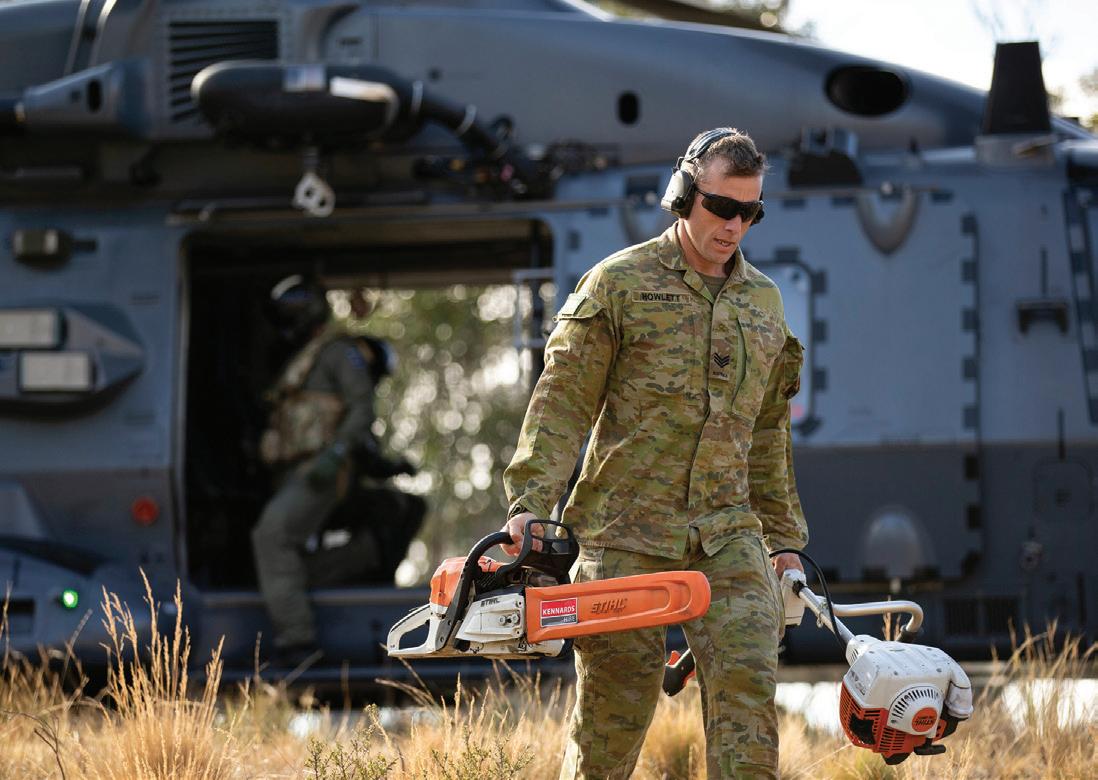
As exhausted firefighters continue to battle blazes across the country, many communities are beginning the long road to recovery following some of the most devastating bushfires in Australia’s history.
As part of the recovery efforts, the Federal and state governments have announced a $2 billion recovery and rebuild package which will go towards direct payments and specialised agencies to aid recovery efforts in fire-ravaged communities and to assist in future disaster management projects.
NEWLY ESTABLISHED NATIONAL BUSHFIRE RECOVERY AGENCY
To coordinate a national recovery effort, the National Bushfire Recovery Agency was established on 6 January with the Federal Government committing an initial $2 billion in funding to assist and coordinate rebuilding communities across Australia.
Treasurer, Josh Frydenberg, said the initial $2 billion investment will help to get communities back on their feet by assisting with restocking and replenishing, rebuilding roads and telecommunications infrastructure, mental health support, attracting tourists back to the regions, and helping restore the local environment and impacted wildlife.
Funding for the agency is in addition to the Natural Disaster Relief and Recovery Arrangements that have been activated in all bushfire-affected areas already with $25 million in Australian Government Disaster Recovery Payment and Disaster Recovery Allowance flowing to communities.
$1 BILLION TO REBUILD VITAL INFRASTRUCTURE
The NSW Government announced $1 billion in funding over the next two years to assist in rebuilding communities impacted by the state’s bushfires.
The funding will prioritise the repair and rebuilding of vital infrastructure, such as roads, rail lines, bridges, schools, health facilities and communications facilities, which have been damaged or destroyed by the bushfires.
The funding will focus on direct payments to individuals, small businesses and local councils to help rebuild and, where appropriate, improve infrastructure.
This funding is in addition to the NSW Government’s disaster assistance funding for the current bushfire season, worth up to $231 million.
This commitment includes $166 million towards firefighting efforts; $25 million to facilitate the clean-up of both insured and uninsured homes; $23 million for grants of up to $15,000 for primary producers and small businesses to assist with cleanup and the replacement of infrastructure; and $11 million to fund the Economic Recovery and Community Resilience Grants Program.
DEDICATED AGENCY TO GUIDE VICTORIA’S RECOVERY
The Victorian Government has established a new recovery agency for the state, Bushfire Recovery Victoria (BRV), which will help local communities impacted by bushfires rebuild and recover.
The agency will be wholly focused on the needs of Victorian communities, working closely with locals to ensure that rehabilitation projects are both locally-driven and locallydelivered.
BVR led recovery efforts are already underway with works extending across a range of priorities from immediate cleanup and ensuring the health and wellbeing of residents and farmers, to longer-term work to help local communities and local economies, like the agricultural and tourism sectors, get back on their feet.
13 www.infrastructuremagazine.com.au March 2020 // Issue 14 NEWS
INTERCONNECTOR TO EASE TRANSITION TO RENEWABLES
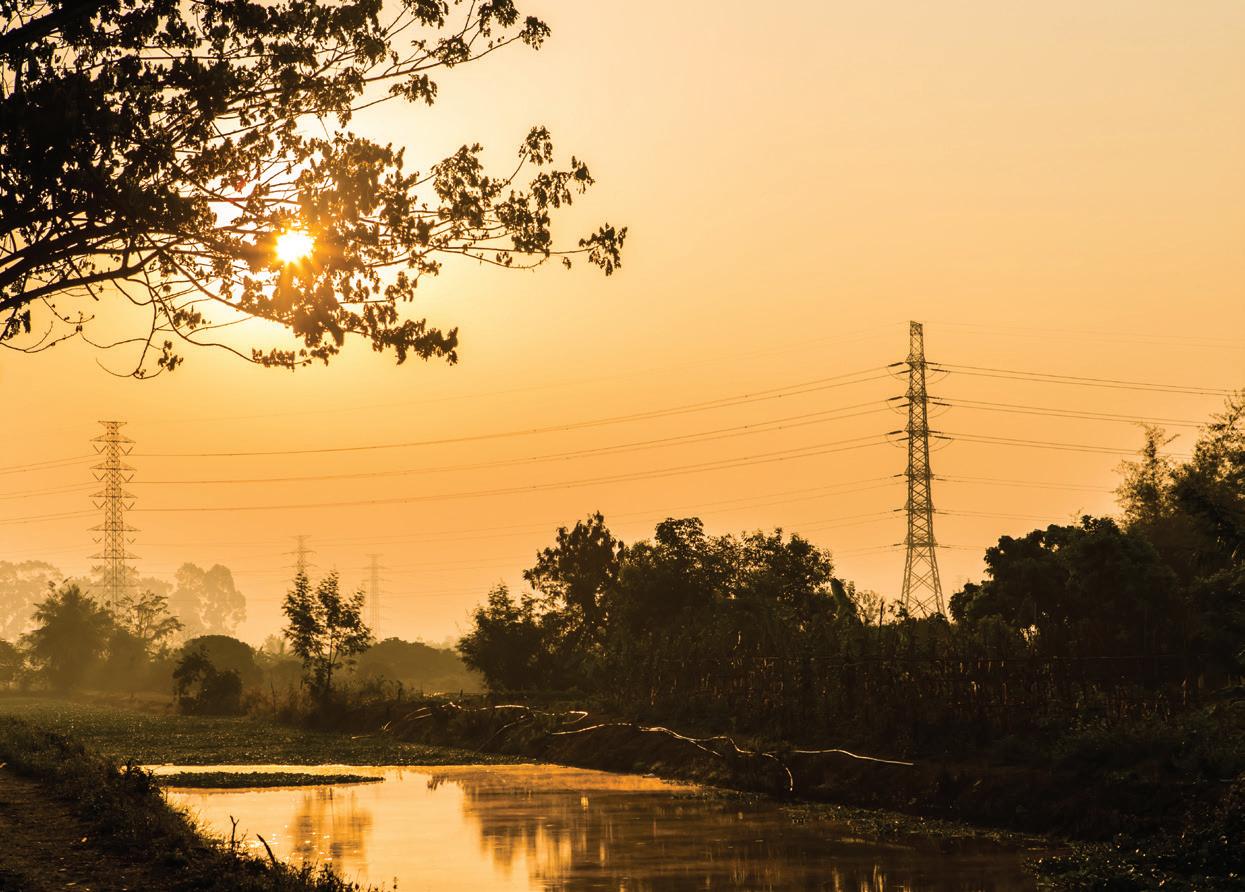
The Australian Energy Regulator (AER) has approved a new interconnector between South Australia and New South Wales designed to increase power system security in SA and facilitate the long-term transition to low emission energy sources.
The Project EnergyConnect transmission line will enable NSW to import cheap renewable electricity from SA when there’s an excess, as well as allowing SA to import more power from NSW and Victoria when there’s not.
ElectraNet was required to submit a Regulatory Investment Test for Transmission (RIT-T) application for the interconnector to proceed, which the AER approved.
AER Chair, Clare Savage, said, “We’re satisfied, on the basis of the information ElectraNet has provided, that the SANSW interconnector is the best option for meeting the needs of consumers when compared to alternative options.
“We’ve tested the reasonableness of ElectraNet’s inputs and assumptions across a range of scenarios and found that the project, as set out in the RIT-T, is robust and will deliver a net economic benefit to Australian energy consumers.”
The Australian Energy Market Operator (AEMO) has identified the SANSW Interconnector as a high priority project in its Integrated System Plan.
The RIT-T process requires the AER to analyse the specifics of transmission proposals to ensure they support affordable and reliable energy for Australian consumers.
Based on construction costs of $1.53 billion, the AER review – which incorporated alternative inputs and assumptions to ElectraNet’s – identified $269 million in likely net benefits from the project against the $924 million estimated by ElectraNet.
“ElectraNet assumed that without the interconnector, substantial gas-fired generation would be needed to keep the lights on in South Australia even with considerable new investment in wind, solar, batteries and synchronous condensers,” Ms Savage said.
“The AER does not think it’s reasonable to assume that such large volumes of gas-fired generation will be required when there are cheaper sources of generation already available.
“We requested ElectraNet update their modelling to reflect AEMO’s system security requirements and to allow
these cheaper sources of generation to compete in the market – this reduced the benefits of the interconnector substantially.
“While the benefits to energy consumers may be smaller than set out in the RIT-T they are still substantial and the interconnector therefore satisfies the requirements of the process.”
The AER said that residential customers in South Australia could expect to pay an extra $9 per annum and NSW customers $5 for the project, but that these costs would be more than offset by the benefits.
Ms Savage said that while large infrastructure projects like the SA-NSW Interconnector will be required as the energy market evolves, it remains critical that consumers pay no more than necessary for safe and reliable energy.
“If there was a material change in the cost of the project such that it was likely to erode the estimated benefits then it would be important for us all to have another look at the viability of this project,” Ms Savage said.
ElectraNet must now make an application to the AER for contingent project funding for the SA-NSW Interconnector.
14 March 2020 // Issue 14 www.infrastructuremagazine.com.au SA–NSW
NEWS

YOU’VE JUST FOUND THEM. LOOKING FOR THE NUMBER ONE MARKETING AGENCY IN THE INFRASTRUCTURE INDUSTRY? Would you like to work with us? Get in touch and we’ll arrange a time to chat. Ph: (03) 9988 4950 Email: info@monkeymedia.com.au www.monkeymedia.com.au CONTENT MARKETING SEO DIGITAL DESIGN SOCIAL MEDIA GOOGLE ADWORDS WE ARE MONKEY MEDIA. Our team uses their industry-specific knowledge to help you reach your target audience. We can help you navigate:
RESILIENCE AND RESPONDING TO CHANGE: ADAPTING TO UNCERTAINTY
 by Romilly Madew AO, CEO, Infrastructure Australia
by Romilly Madew AO, CEO, Infrastructure Australia
The year 2020 marked the dawning of a new decade, a new year, and with it perhaps the makings of a new normal amongst a veil of smoke across Australia.
This summer has seen Australia combat one of the worst bushfire seasons many in this country have ever faced. Given the scale of this disaster and the increased intensity and frequency of extreme weather events, we face a period of growing uncertainty.
The widespread devastation has pushed the resilience of our infrastructure into the spotlight. Throughout the ongoing recovery effort and long-term rebuild, we should all be asking questions of our planning, regulation, building standards, zoning and community education programs.


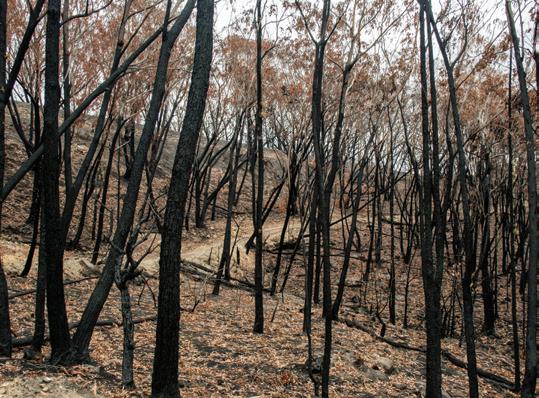

March 2020 // Issue 14 www.infrastructuremagazine.com.au
16 A WORD FROM INFRASTRUCTURE AUSTRALIA
As a result, Australia finds itself at a unique point in its history, with significant implications for how we plan for existing and future infrastructure. Our ability to adapt to new weather patterns and other emergency events, and the way we enhance our resilience, will be crucial as we move into the next decade and beyond
UNPRECEDENTED CHANGE BRINGS UNPRECEDENTED RISKS
Average rainfall in some parts of Australia has declined by 11 per cent since the 1990s, and the average temperature across Australia is expected to rise by 0.6-1.5ºC by 2030. Much of our infrastructure was not designed for such conditions. Higher temperatures, fluctuating seasonal rainfall and water availability, together with more intense bushfires and extreme weather are putting pressure on our buildings and infrastructure, as well as our energy, road, telecommunications and water networks.
The recent bushfire crisis showed us that our power systems are vulnerable to natural disasters. As a result of the bushfires raging through south-east Australia, crucial Snowy Hydro transmission lines connecting NSW to Victoria went down. While authorities managed to contain the damage, the temporary hitch saw energy market operators require emergency reserves, and consumers in NSW were called on to take precautionary measures by reducing their power consumption.
During the same crisis, several Victorian and NSW fires threatened communities which were left without mobile reception or internet access. The reliance on this infrastructure and the time taken to restore connections has left many asking questions about the short and long-term resilience of infrastructure, which is critical to emergency responses and the safety of Australians during a crisis.
A RAPIDLY CHANGING AND GROWING AUSTRALIA COULD BE MORE EXPOSED TO NEW RISKS
While we have experienced profound change before, the scale, pace and interconnected nature of change today, not only from our environment but also our technology, population growth and our economy, are unprecedented.
Our Australian Infrastructure Audit 2019 found that the rapid pace and interconnected nature of change is putting our assets and networks at risk, which is challenging regulators and decision makers to rethink how to plan for the future. However, risk is not only found within our changing environment. Longterm changes in infrastructure use patterns can threaten the operation of our networks as much as the acute shocks of heat waves, floods or bushfires.
As our population and the complexity of our networks grow, so does the potential for failures and disruptions. Even minor incidents can cause large disruptions and be costly for users and taxpayers. For example, in 2018, the disruption caused by a single morning peak hour incident on the Sydney Harbour Bridge was estimated to have had an economic cost of $5-10 million.
The introduction of technology also poses risks. For example, a large-scale adoption of electrified vehicles will increase the demands placed on our energy grid and, if not well-managed, could pose new risks to our energy distribution. Decisions made today will need to consider the range of future scenarios.
EVOLVING THE WAY WE BUILD IN RESILIENCE
Australia’s infrastructure sector needs clearer, publicly available guidance on how to manage risk and plan for greater resilience in the future. Currently, many asset management plans do not reflect the whole-of-lifecycle benefits and costs of managing risks to balance appropriate levels of risk and cost. This can lead to inappropriate designs, specification and operating procedures. Instead, planning for resilience requires a full understanding of the risks, their likelihood, impact and costs – whether that’s economic, social or environmental.
To better plan for change, the Audit embraces a new methodology of foresighting, examining the external influences likely to impact our sector over the coming decades and considers the likelihood of a range of impacts. This requires planners to clearly articulate their future vision, and to then plan for and test pathways to achieve that vision. By doing so, jurisdictions can identify opportunities to work together to create shared value and better resilience strategies.
We know that timely access to data and evidence can help us to build resilience into our design, maintenance and operation of infrastructure.
The work undertaken by Geoscience Australia is a good example of this. Part of its work is to produce publicaly available data about coastal erosion which can help individuals, asset managers, governments and businesses plan for how assets and their communities may be affected in the future, and in turn, help to minimise disruption caused by extreme events.
The Audit found there is an opportunity for government and industry to work together to share data as well as to develop publicly available guidelines on risk and resilience planning. There is already work underway. Both Sydney and Melbourne are members of the 100 Resilient Cities program aiming to build the capacity for cities around the world to plan for and adapt to a changing world whilst also maintaining and enhancing city liveability, social cohesion and economic productivity.
We have also seen the Smart Cities Council establish a Global Resiliency Network to help cities embed resiliency into their planning and project implementation, but there is much more to be done.
As the rising bill left behind from this summer’s unprecedented bushfires underscores – it is often more cost effective to build with resilience in mind, rather than retrofit down the track. Delays in preparing networks for the impacts of external conditions could expose the economy to higher costs.
However, an excessively risk-averse approach could overestimate the probability or severity of risks, resulting in over investment in assets. This could result in the costs of mitigation exceeding an efficient and balanced approach. Infrastructure users and taxpayers would wear the costs of unnecessary investments. A balanced approach will require a focus on measures that minimise the effects of extreme weather, while considering the costs of providing additional infrastructure.
The time is right to reconsider how we deliver and operate infrastructure, and how we can adapt existing networks to our changing user needs. The Australian Infrastructure Audit can be a starting point for this process.
www.infrastructuremagazine.com.au March 2020 // Issue 14 17 A WORD FROM INFRASTRUCTURE AUSTRALIA

IS CONGESTION CHARGING THE ANSWER TO PEAK HOUR?
There may not be many topics on which the New South Wales, Victorian and Australian Governments agree furiously, but congestion charging is one.
March 2020 // Issue 14 www.infrastructuremagazine.com.au 18 INDUSTRY INSIGHTS


www.infrastructuremagazine.com.au March 2020 // Issue 14 19 INDUSTRY INSIGHTS
by Marion Terrill, Transport and Cities Program Director, Grattan Institute
“People are already paying the cost of going on the road because of the congestion they are facing”; there are “no plans and the government does not support a congestion tax”; in fact, “it’s not going to happen…you don’t need to introduce a congestion tax”.
Instead, governments of all persuasions continue to reach for expensive roads and more public transport as the answer. But it hasn’t worked. Just look around – we’re still stuck in traffic.
There’s really only one way to get congestion under control, and that’s congestion charging. We should pay to use our busiest roads at peak times.
HOW CONGESTION CHARGING WOULD WORK
Grattan Institute’s recent report shows how a congestion charge could work in Sydney and Melbourne. The same approach can be tailored to any large city – wherever peak periods bring excessive congestion.
In the case of Sydney, we recommend the State Government throw a ‘cordon’ around the inner city, taking in the area west of the Domain, north of Central Station and east of Pyrmont. Drivers would pay $5 to enter the cordon during the weekday morning peak, or $3 in the
Drivers
half hour either side of the peak, and the same on their way out during the afternoon peak or shoulder period.
Large trucks would pay a higher charge because they take up more space. Tradies and delivery drivers coming into the city would all be equally affected, and so could pass the cost on to their customers. And there’d be no charge outside of the weekday peak and shoulder periods.
There’d also be minimum hassle for drivers, with the charge enforced by automatic number plate recognition technology. This means no paper tickets or e-tags.
CONGESTION CHARGING WOULD BE VERY EFFECTIVE
Modelling by Veitch Lister Consulting for our report shows the charge could be expected to take about 3,000 cars off Sydney’s roads at peak times, with 40 per cent fewer cars entering the CBD in the morning peak. This would make a real difference to traffic, with increases in speed in the morning peak of 11 per cent in the CBD and up to 20 per cent on sections of the major roads leading to it. This is great news for tens of thousands of bus passengers, many of whom find just getting through the CBD the most delayed and frustrating part of their commute.
Across the whole city, the charge would improve speed at peak times by about one per cent – not much of a change, but it’s a bargain compared to the $17 billion WestConnex project that will only improve speeds across the whole city by three per cent at most.
But isn’t this just revenue raising in disguise? Aren’t we already paying enough in tolls, rego and fuel tax? Is this fair on poor people? What pollie would be crazy enough to introduce this?
But all these fears are overblown –here’s why.
A congestion charge is not about raising revenue – in fact, the CBD cordon charge we recommend would add only a modest amount to the state’s coffers.
Yes, many of us pay quite a bit of money to be on the road. But we also pay with something else valuable – our time. Congestion charging will help us get some of that time back. And, further down the track, we might be able to use congestion charging to replace the blunt and unfair charges we pay today, such as rego and fuel tax.
People on lower incomes won’t be unfairly burdened. Most people who commute to the CBD already take public transport. Those who do drive tend to be richer not poorer; more than half of them earn a six-figure salary. In Sydney, the typical full-time worker who drives to a CBD job earns $2,500 a week – that’s


March 2020 // Issue 14 www.infrastructuremagazine.com.au 20 INDUSTRY INSIGHTS
1
to the CBD are overwhelmingly higher-income and tend to live in the inner or middle suburbs Note: Data is for full-time workers commuting to the CBD by private vehicle. Line height is to scale – the highest income bracket ($3,000 or more) is the most commonly reported income for those who commute to the CBD by private vehicle, representing around 38% these people. The lowest income bracket represents just 3%. Source: Grattan analysis of ABS (Census, 2017). Distribution of commute distances to the CBD within each personal weekly income bracket reported on the 2016 Census
Drivers
to the Sydney CBD
overwhelmingly higher-income
tend to live
inner
middle
are
and
in the
or
suburbs

$1,000 a week more than the typical fulltime worker across the city as a whole.
Most people will have options to avoid the charge, by driving at a different time or by a different route, or leaving the car at home or at the station and taking public transport. And congestion charging should come with a safety net; there should be discounts for low-income people with impaired mobility who need to get to the CBD in peak periods.
So that leaves the million-dollar question: would our politicians ever go for this?
Not so far; it’s more a case of ‘no new taxes on my watch!’. But how can they keep a straight face saying this when their usual response to congestion is to build a new road with a toll on it? Or spend our taxpayer dollars on infrastructure that might not have been needed if we were smarter in using what we already have?
The same old attempts at busting congestion aren’t working. It’s time for a new approach. Congestion charging might be a bitter pill to swallow for some. But without it, we may as well get used to being stuck in traffic.
Marion Terrill is the Transport and Cities Program Director at the Grattan Institute. Her recent reports, Why it's time for congestion charging: better ways to manage busy urban roads and Right time, right place, right price: a practical plan for congestion charging in Sydney and Melbourne, are available at grattan.edu.au.
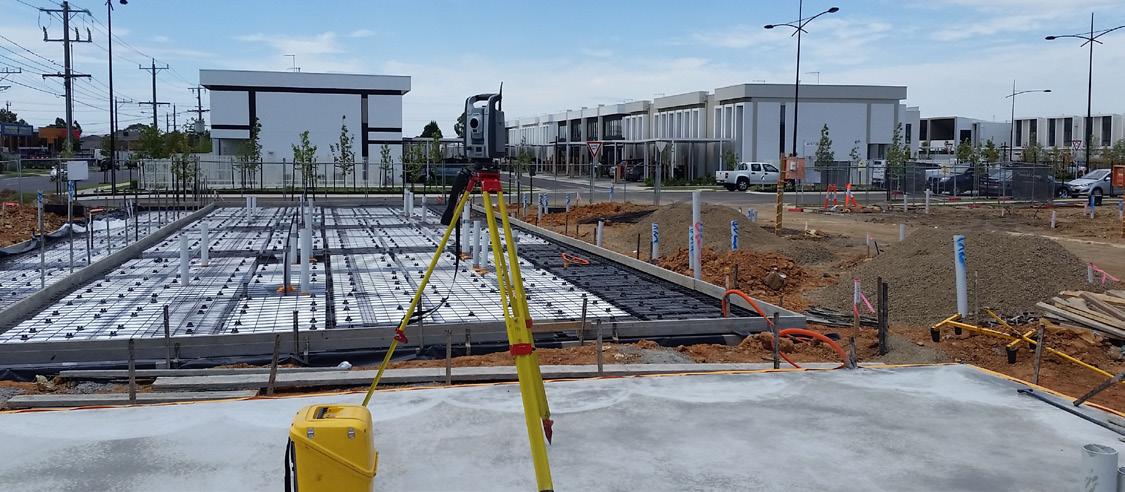
Mobile Laser Scanning
• Terrestrial Laser Scanning
• 3D Modelling and BIM
• Drone mapping
• Z boat hydrographic surveys
• Virtual and Augmented Reality Solutions
• TIMMS (Trimble Indoor Mobile Mapping System)
preliminary development estimates
• servicing advice on master planning
• roads, earthworks, drainage, sewer and water main design
• water quality modelling
• construction surveillance, field audits
• site and environmental management plans
www.infrastructuremagazine.com.au March 2020 // Issue 14 21 INDUSTRY INSIGHTS
For your turn-key spatial solution visit www.taylorsds.com.au
GLOBAL INFRASTRUCTURE SECTOR NEEDS A SHAKE UP
 by Rhianna King, Content Specialist, Infrastructure magazine
by Rhianna King, Content Specialist, Infrastructure magazine
March 2020 // Issue 14 www.infrastructuremagazine.com.au 22 INDUSTRY INSIGHTS
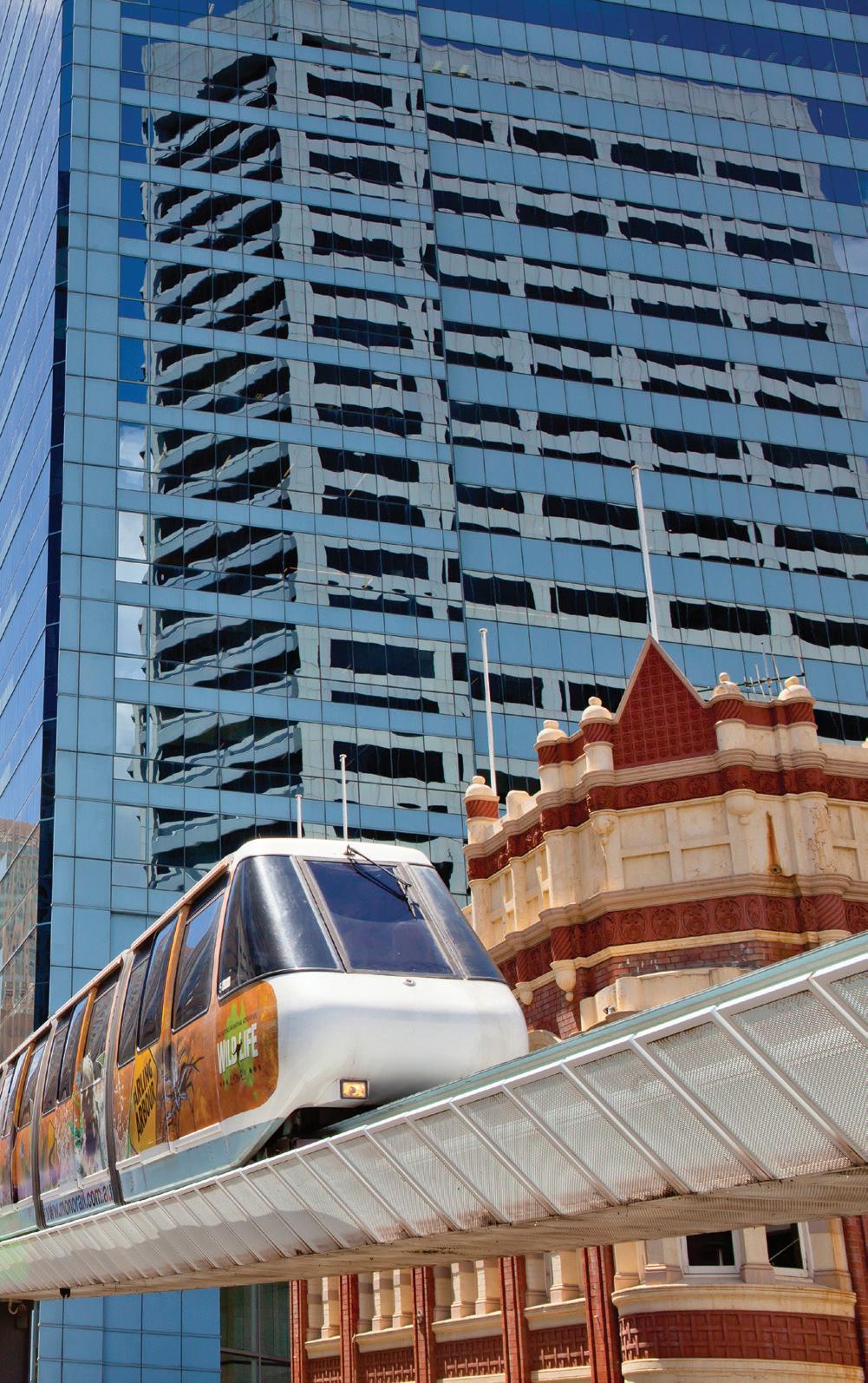
As megatrends such as urbanisation, population growth and climate change put increased pressure on our infrastructure, innovation will be the key to bridging the gap between what is needed and how much is actually invested. CEO of the Global Infrastructure (GI) Hub, Marie Lam-Frendo, has worked in emerging markets in Asia, Africa and the Middle East as well as with the World Economic Forum. Here she speaks with Infrastructure about how Australia can plan for, and achieve, infrastructure that will serve us into the future, and the role of digital solutions.

Marie Lam-Frendo
You don’t need to delve deep into statistics to see that the world’s infrastructure is groaning under the pressure of a burgeoning population. Most days you just need to drive on a freeway during peak hour, or board a train in a bustling capital city.
More than half of the world’s 7.7 billion people live in urban areas and, according to GI Hub – an independent organisation established by the G20 to facilitate and connect the global infrastructure community – there is a AU$21.9 trillion gap between what is currently invested (AU$115 trillion) in infrastructure, and what is actually needed (AU$137 trillion).
The GI Hub predicts that by 2040, 9.141 billion people will call Earth home (of whom 60 per cent are likely to live in urban areas), and how much is expected to be invested globally (AU$5,568 trillion) will fall well short of the AU$6,764 trillion required to support the population.
PLUGGING THE INVESTMENT GAP
The GI Hub forecasts that Asia Pacific has the world’s greatest need for infrastructure investment, and predicts that Australia’s investment gap could reach AU$230 billion by 2040.
Infrastructure Australia’s 2019 Australian Infrastructure Audit reported that, in the four years since the last audit, progress had been made in investing in infrastructure, which it describes as “central to our quality of life”. However, it identified that the infrastructure of tomorrow will look very different to what it is today, and warned that we must plan for the challenges of the future.
GI Hub CEO, Marie Lam-Frendo, has worked extensively
www.infrastructuremagazine.com.au March 2020 // Issue 14 23 INDUSTRY INSIGHTS

on developing, funding and managing strategic programs throughout the world. She was named CEO of GI Hub in February 2019 after spending three years as Head of APAC at Atkins Acuity in Singapore and four years as Head of Infrastructure Initiatives at the World Economic Forum in Geneva.
Ms Lam-Frendo said the impact of megatrends such as urbanisation, climate change and increasing population are being felt at a much faster pace than we could have ever imagined, and Australia and the rest of the world must act now to meet the challenges.
“We have a very slow infrastructure sector because of the complexity of the projects and, frankly, the lack of political will and lack of sustained political will into projects,” Ms Lam-Frendo said.
“This will be even more hindered by the pace at which these trends are heating up.”
Ms Lam-Frendo said the magnitude of these trends had also surpassed predictions.
“Here we’re talking about a global population growth and the shift to
cities; 60 per cent of people will be living in cities by 2023, so a lot of the infrastructure we’ve built is not futureproof. Even ones we have in the pipeline, there’s a big question about whether they answer the needs of tomorrow.”
Ms Lam-Frendo said infrastructure is viewed as a commodity, so is driven by price, and addressing these trends often causes the price of projects to rise. In Asia, for example, building infrastructure that is climate change resilient creates a gap of US$7 trillion between infrastructure ‘need’ and ‘investment’.
“Ultimately that’s a big gap; so we have to take this into account more proactively in the planning, and also with the budgeting attached to that,” Ms Lam-Frendo said.
Ms Lam-Frendo has spent much of her career working in emerging markets to bridge the gap between the public and private. She said the private and public sectors need to work together to ensure that parties that are interested or involved in infrastructure projects can achieve a greater repartition of risk.
“Dialogue is necessary because there is often a misalignment of language and
expectations on both sides,” Ms LamFrendo said.
“There needs to be discussions to achieve a clear view of risk allocation to determine what risk will actually be tolerable on both sides.”
As part of this, the GI Hub has developed a public–private partnership (PPP) tool, which aims to provide governments looking to use PPP approaches to fund public infrastructure projects with practical information to deliver the right outcomes for all parties.
POWERING UP INNOVATION
Ms Lam-Frendo said innovation would be a key part of addressing the megatrends relating to urbanisation, population growth and climate change, but would also help cater to other emerging trends, including addressing changing mobility and the increasing use of automated vehicles.
“Our industry has been very slow to digitise; data shows that we are one of the less digitised industries ever,” Ms Lam-Frendo said.
“A lot of the communities between infrastructure and technology are not
March 2020 // Issue 14 www.infrastructuremagazine.com.au 24 INDUSTRY INSIGHTS
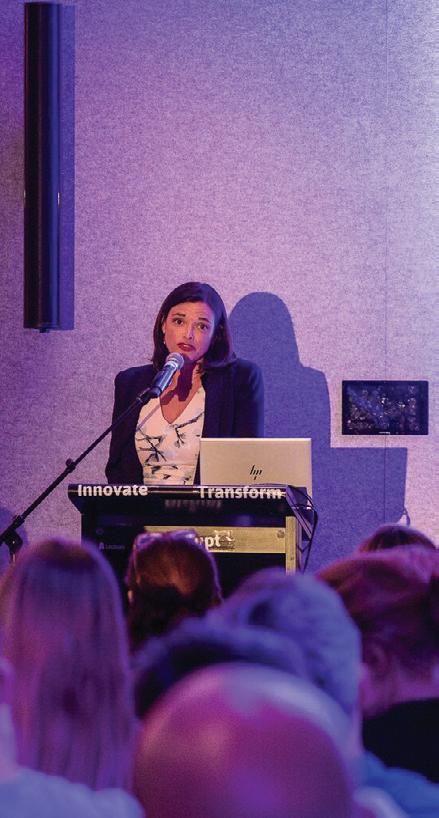

very well connected. There’s an appetite, because we see emerging infra–tech funds, so it’s the right time to look at that.
“But it’s not only about new technologies. It’s great to have new technologies, we certainly support that. But it’s also thinking about new approaches and new business models.”
CALLING ALL INNOVATORS
As part of its efforts to encourage innovation, the GI Hub launched a worldwide competition in November 2019 to find new ideas that “innovate, disrupt and transform” the infrastructure sector.
The InfraChallenge invites applicants from around the world to submit ideas that will drive digital transformation to solve economic or social infrastructure issues and find ways for building better infrastructure.
Applicants are invited to submit entries that address transport, energy, telecommunications, water and sanitation, and social infrastructure. The GI Hub will select 20 first round finalists in March 2020 to receive eight weeks of
mentoring. Ten second round finalists will be announced in May 2020 to receive an additional six weeks of mentoring, and the winner will be determined in June. The winning project will receive $50,000 and support from the GI Hub and the Massachusetts Institute of Technology (MIT) Solve, and exposure to the G20 infrastructure working group.
“The InfraChallenge was a call for a renewed international focus on digital solutions and they’re importance in tackling the big challenges ahead of us,” Ms Lam-Frendo said.
“We kept it as broad as possible, so we can really shake up the industry and ensure that the different players within the infrastructure value chain could look into various types of innovation, such as new technology, new approaches or new business models.”
Ms Lam-Frendo said there were plans to make the competition an annual event.
“I’m pretty sure that this will lead to some very innovative solutions and approaches for the infrastructure industry.”
ANCOR LOC AUSTRALIA works in the field of earth anchoring solutions with an outstanding reputation for product quality and customer service. We offer a complete line of mechanical ground anchors designed for temporary or permanent use.
NO DIGGING, NO EXCAVATION, NO SOIL DISTURBANCE
SAVE TIME AND LABOR
With fast and easy installation, the patented DUCKBILL®, MANTA RAY® and STING RAY® Anchors work like toggle bolts in the soil.
NO HOLES, NO DIGGING AND NO CONCRETE
Anchors are driven into the ground and provide a safe and environmentally sensitive installation.
PERPENDICULAR “LOAD LOCK” IN UNDISTURBED SOIL
An outward pull on the tendon rotates the anchor into position.
SAFE, STRONG, LIGHTWEIGHT AND ECONOMICAL
Our anchor systems offer an effective and easy way to install solution to earth anchoring systems. Anchors can be load tested immediately after installation to exact holding capacity.
IDEAL FOR:
• Demountable buildings
• Cyclone-prone areas
• Containers
• Retaining block and gabion walls
• Playground equipment
• Scaffolding
• Revetment mats
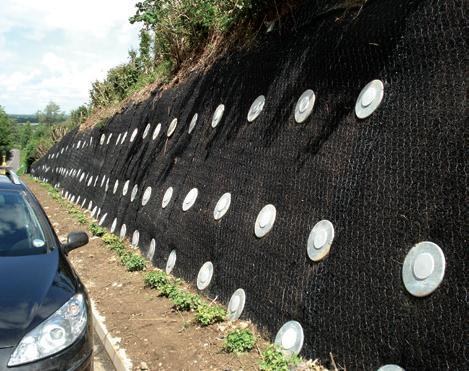



www.infrastructuremagazine.com.au March 2020 // Issue 14 25 INDUSTRY INSIGHTS
www.ancorloc.com.au / 03 9585 6808 / info@ancorloc.com.au
HOW AIRPORT INFRASTRUCTURE IS SUPPORTING THE
Emergency services took to smoke-filled skies over the summer months to fight some of the most catastrophic bushfires on Australian record. However, it was the efforts on the ground, accommodated by airports and their existing infrastructure, that facilitated fire retardant and water to land on the most heavily impacted areas.
With an extensive area of land impacted across New South Wales, the Australian Capital Territory and Victoria from late spring into summer, portable firefighting bases were set up by state emergency services agencies to assist with aircraft refuelling, water-bombing and surveillance activities. Small-scale bases were set up at airports in Coffs Harbour, Albury and the Shoalhaven, with Canberra Airport operating not only as a major hub for aerial firefighting in the area, but also as the largest domestic airport base in the country.
Jo Lomas, Head of Property Management and Operations at Canberra Airport, said this is the second time that the ACT Emergency Services Agency has operated a portable firefighting base at Canberra Airport.
“We made the arrangements for the 2018/19 season and when they took the base away at the end of the 2019 season, the agreement was put in place for the 2019/20 fire season,” Ms Lomas said.
The agreement was made under the pretense of the hot, dry conditions anticipated for the 2019/20 bushfire season and the base was created in early October to allow preparations to take place.
BECOMING A PORTABLE BASE
One of the most efficient ways for emergency services to manage large-scale operations is to utilise existing infrastructure such as that at Canberra Airport; however, the right infrastructure needs to fulfill a variety of important requirements to be utilised in a bushfire emergency.
First and foremost, the airport’s location was taken into consideration.
“It was identified as a bit of a black spot by the Emergency Services Agency because the nearest firefighting setups are in the south of Sydney and also in Victoria, so our base here in Canberra helps southern NSW and Victoria as well,” Ms Lomas said.

Alongside location, the ACT Emergency Services Agency was looking for a site with the capacity to facilitate its operations. Initially, the site needed to house four 20,000L tanks filled with water and powdered fire retardant; however, this amount has since increased with the severity of the fires.
“We’ve recently increased the capacity of the portable air base to 160,000L of mixed retardant which is ready to load into an aircraft. Then there’s a 40,000L water storage tank as well,” Ms Lomas said.
These tanks of water and retardant, along with equipment for lifting, a pump and mixing equipment for the powdered fire retardant, were housed in a vacant hangar provided by Canberra Airport. The airport also provided apron space and parking for extra aircraft.
“We were chosen because we had the storage facility and ability to provide a base. Other than that we had to fulfil our normal requirements and operations with regards to aviation safety, security and environmental.
“We have worked very closely with the relevant government authorities for their approval
26
INDUSTRY INSIGHTS
INFRASTRUCTURE BUSHFIRE EFFORT

but it’s been a great relationship and everyone’s worked together to get this across the line for the emergency services,” Ms Lomas said.

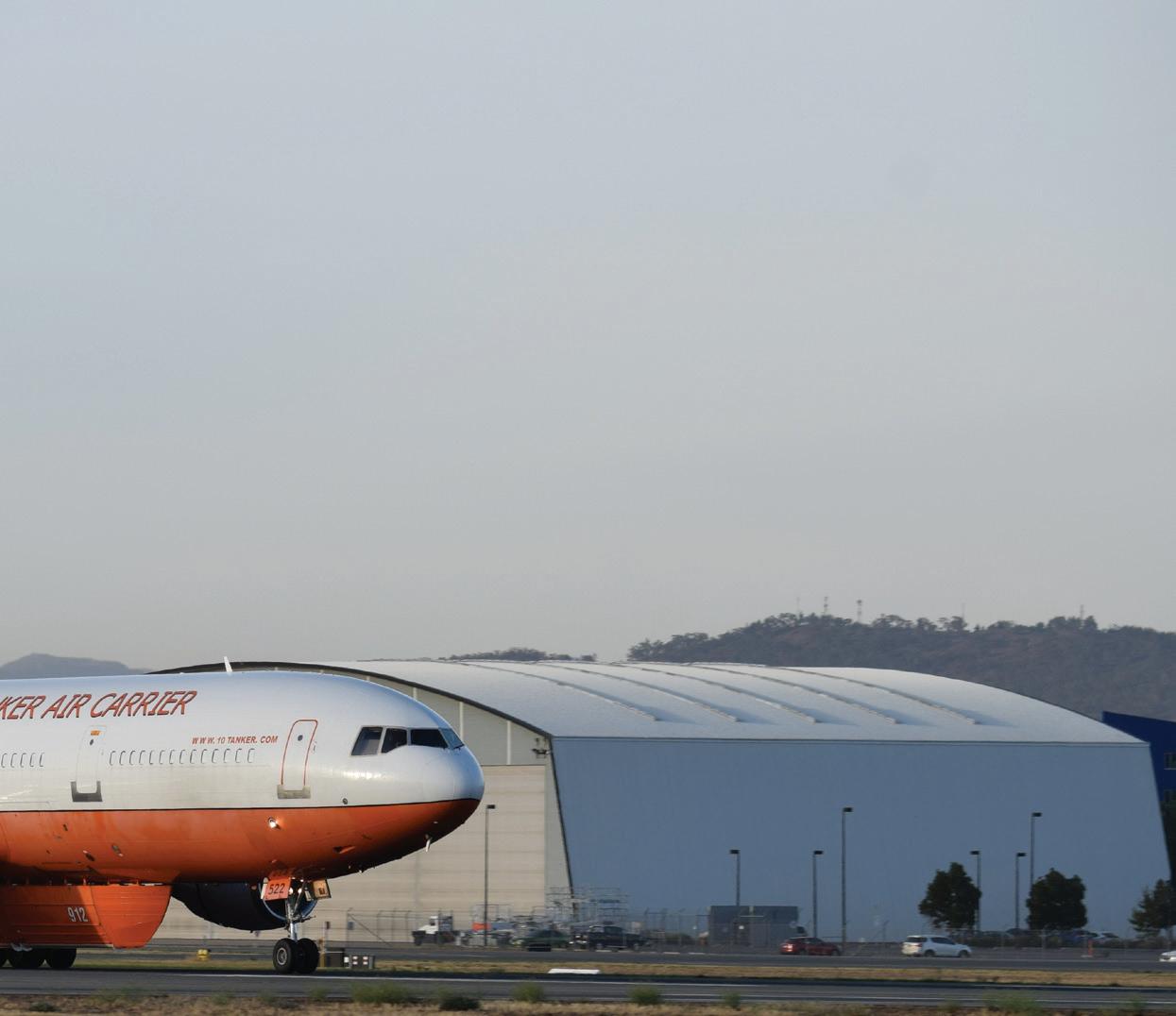
One of the factors that makes Canberra Airport suitable for a base such as this, is that it is the only curfew free airport between Melbourne and Brisbane.
“That means the aircraft can operate uninterrupted,” Ms Lomas explained.
Aircraft frequenting Canberra Airport for firefighting operations range from large air tankers to Boeing 737s, and C17 Globemasters to an RJ85 Fire Bomber and Australian Navy helicopters.
With some of these aircraft being quite large, the length of the runway was an important factor in Canberra Airport’s ability to perform for this purpose.
“It’s crucial for us to be able to take these larger tankers. It means we can take supplies to the firefighting tankers and allow them to take off fully laden, and that really adds to the capability of our airport to serve the region,” Ms Lomas said.
MAKING PROVISIONS
Ms Lomas said that Canberra Airport was well prepared to take on the base; however, some provisions did need to be made.
While the hangar was partially vacant before the agreement was made with the ACT Emergency Services Agency, work to clear it out needed to be undertaken for the airport to accommodate the equipment required for the base.
“They’re operating out of our Fairbairn apron which is separate to our RPT apron, so there’s really been no impact,” Ms Lomas said.
While the firefighting effort across the country has been faced with numerous significant challenges, the planning and management that has gone into the base at Canberra Airport has helped facilitate smooth and successful operations.
“There haven’t been any challenges actually, it’s been great to see. We’re a fairly small community here at Canberra Airport when it comes to aviation, and we’ve all come together and worked really well. It’s actually been quite rewarding,” Ms Lomas said.
27
INDUSTRY INSIGHTS
Jo Lomas, Head of Property Management and Operations at Canberra Airport.
INFRASTRUCTURE OUTLOOK: 2020 AND BEYOND
by Adrian Hart, Associate Director,
BIS Oxford Economics
It’s a new year and a new decade. For infrastructure, the 2020s offer substantial growth opportunities and challenges after a bumpy 2019.
Economic infrastructure (or engineering) construction activity – measured as the sum of transport, utilities, mining and heavy industry construction – declined in 2018/19. Some of this decline was expected, particularly in mining and heavy industry, where oil and gas activity normalised following a burst of completion works on LNG projects the year before. But there were also some surprises.
Road construction activity fell earlier than anticipated as major projects that were started soon after the resources investment bust began to wind down without being completely replaced by new projects. Rail activity grew marginally, after nearly doubling in the previous three years. Conversely, publicly funded NBN-related works reached a new peak, but privately funded telecommunications investment fell away. All in all, total engineering construction work done fell to $88.5 billion in 2018/19 (in constant 2017/18 prices), the lowest level since 2007/08.
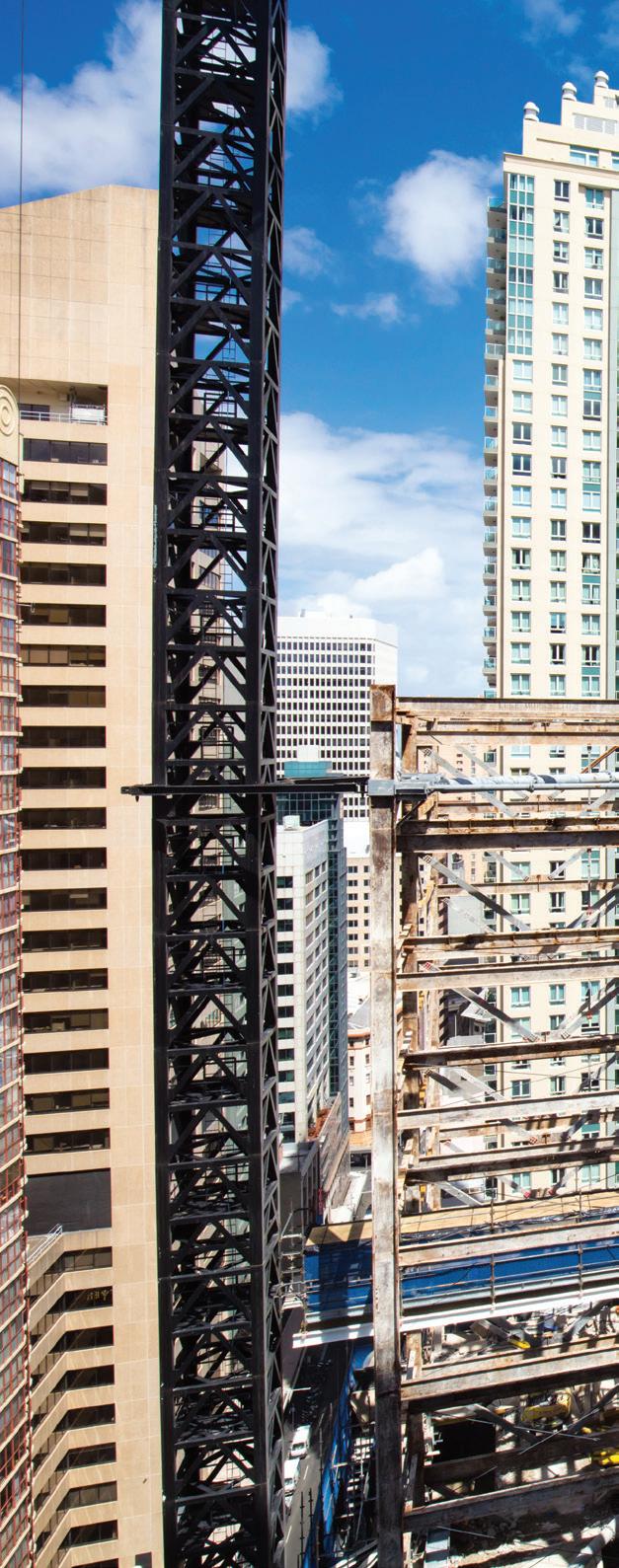
March 2020 // Issue 14 www.infrastructuremagazine.com.au
28
CIVIL CONSTRUCTION

www.infrastructuremagazine.com.au March 2020 // Issue 14 29 CIVIL CONSTRUCTION

So what does 2020 and beyond hold for infrastructure activity? At BIS Oxford Economics we use a mixture of detailed bottom up (project-by-project) analysis as well as top down (macroeconomic) drivers to establish our infrastructure activity forecasts for every segment and state, as well as who delivers or funds the work (public/private sectors).
While there may yet be more surprises in store, I’d like to point out some of the bigger trends we have identified and what this means for businesses (and government agencies) that operate in the infrastructure market.
TOP FIVE FUTURE TRENDS
1. ENGINEERING CONSTRUCTION ACTIVITY IS PICKING UP AGAIN
The latest available ABS data shows that activity fell over the first half of 2019 before a small increase in the September quarter. However, over the year to the September quarter, activity was still 11 per cent lower than the previous year. Overall, we believe activity picked up further in the December quarter and we are forecasting total activity to rise through 2020 and the subsequent few years, with both private and public sector investment contributing.
2. TRANSPORT AND RESOURCES ACTIVITY THE KEY GROWTH DRIVERS
As shown in Figure 1, there is still a significant wave of major transport infrastructure being rolled out across most states and territories that will likely drive higher levels of road and rail construction. It may not end sharply later in the decade either as this is just the projects which are known now, but more are likely to emerge in coming years. The biggest risk to this pipeline is not funding or finance but, rather, industry and government capacity, and the capability to procure and deliver megaprojects simultaneously. Meanwhile, rising minerals investment (the value of coal and other minerals commencements rose 37 per cent to $18.5 billion in the first
half of 2019) will also drive higher engineering activity and add to this capacity/capability challenge. By contrast, telecoms is likely to be one of the worst performers as NBN activity (Australia’s largest public investment project) starts to wind down from peak construction levels.
3. GROWTH REORIENTING TOWARDS WESTERN AUSTRALIA AND QUEENSLAND
While NSW and Victoria have been the ‘boom’ states for growth in engineering construction activity over the past few years, Western Australia is expected to see the strongest growth in work done during 2019/20. Both Western Australia and Queensland are expected to be the strongest performers in growth terms over the next three years. This reflects both the high levels of activity already occurring in NSW and Victoria (which is not expected to ease), but also a recovery in private (i.e. mining-related) and public investment in the ‘resource’ states.
4. DROUGHTS AND BUSHFIRES PRESENT SHORT-TERM AND LONG-TERM IMPACTS FOR INFRASTRUCTURE
The worsening drought and bushfire conditions saw 2019 end – and 2020 begin – on a terrible note, with regional communities and towns devastated, and lives and property lost. In the immediate term this is having a negative impact on infrastructure and economic activity. But, as any economist (‘dismal scientist’) will tell you, disasters are usually followed by a pickup in economic activity as rebuilding eventually gets underway.
Already, Federal and state governments have committed billions of dollars for reconstruction in affected regions, with fire-damaged roads, rail, electricity and telecommunications infrastructure (along with residential and non-residential buildings) the most likely target in 2020. The increasing severity of the drought can also be expected to drive stronger investment in water infrastructure, including rebuilt or new
30 CIVIL CONSTRUCTION
on major
and
projects
AU$2
March 2020 // Issue 14 www.infrastructuremagazine.com.au
Figure
1. Work done
road
rail
over
billion
reservoirs, weirs and dams, pipelines and network fixes, and expanded desalination capacity in coastal cities.
But there could also be positive longer term infrastructure and economic impacts if we get the policy right. Increasingly, there is a need for governments to recognise how climate change is affecting the frequency and intensity of drought and bushfire events, and how we respond in ensuring safe, resilient communities and a sustainable economy. Energy policies consistent with greenhouse gas emissions targets that prevent dangerous climate change are likely to open up a swathe of new investment in renewable generation and storage (which will be required in any case to meet future closures in coal-fired generation capacity).
The National Electricity Market will require greater flexibility to deal with increasing risks by installing more interconnectors between regions and generally strengthening the transmission network in regional areas – which will also provide the capacity required for investment in regional generation projects. Climate change considerations should also drive a rethink of our long-term investment choices in transport, water, communications and buildings to foster a transition to more resilient and less carbon-intensive systems and assets, offering further economic and social benefits.
5. LONGER TERM CAPACITY AND CAPABILITY CHALLENGES REMAIN
While a correction in residential building is expected to play out across 2020 and 2021, all construction segments are likely to be in ‘growth mode’ again by 2021/22, as shown in Figure 2.
ambitious education, training and upskilling goals at the project and industry level so that local job opportunities, and a skills legacy for future infrastructure development, are maximised. It also means being aware of risks in terms of costs and cost escalation for other construction inputs. Governments and industry need to be better at forecasting cost growth and input risks to avoid project cost blowouts or failures. Given the long lead time needed to establish new capacity (whether in skills or other inputs), strategic decisions need to be made now to plan and build capacity and capability to meet what is likely to be a ‘new normal’ in infrastructure investment. Finally, governments will need to think outside the box in terms of how infrastructure is funded, financed and procured over the long term, and how the infrastructure pipeline is managed.
In all of this, there are several positive policy developments that indicate that leaders in government and industry understand the nature of the challenge.
Success, however, may lie in the execution.
About the
author

CAPACITY AND CAPABILITY CHALLENGES
Recent work by BIS Oxford Economics for government agencies and the private sector indicate that this synchronised upswing in construction activity will present serious challenges for capacity and capability. For some sectors, such as rail, skills shortages for key occupations are already critical and this will become worse as construction activity rises sharply over the next few years. STEM skills shortages are likely to worsen across a range of sectors including mining, energy, transport and defence as new investment – and the ongoing maintenance and operations task – continues to rise. Meanwhile, risks are also rising for the availability and/or cost of construction materials and equipment.
This means that businesses and governments at all levels need to look to securing the skills needed to deliver as conditions improve through the 2020s. This involves setting
Adrian Hart has 20 years of economic analysis and consulting experience with BIS Oxford Economics, focusing on the infrastructure, building, maintenance and mining industries. Adrian has undertaken a wide range of consultancy projects for the public and private sector based on his detailed understanding of construction, mining and maintenance markets; their drivers and outlooks; the range of organisations operating in this space and the issues they face. This work includes deeper industry liaison, contractor and competitive analysis, pipeline analysis, demand and cost escalation forecasting, and capacity and capability projects for the public and private sectors. He also undertakes briefings and workshops for senior management, board members and industry associations, and facilitates and chairs roundtables between government and industry. Adrian holds a first class Honours degree in Economics from the University of Sydney.
31 CIVIL CONSTRUCTION
0 50 100 150 200 250 0 50 100 150 200 250 2006 2008 2010 2012 2014 2016 2018 2020 2022 2024 Year ended June Oi and Gas Engineer ng Construc ion Non O and Gas Engineering Construction Non-Res dent a Bui ding Resident al Bu ld ng Source: BIS Oxford Economics ABS $ Bil ion Forecast www.infrastructuremagazine.com.au March 2020 // Issue 14
Figure 2. Construction sector work done by segment
SELECTING THE RIGHT SOLUTION
Excavators are often the go-to piece of equipment for traditional excavation work, and some contractors wouldn’t think of using anything else when it comes to digging trenches and holes. However, implementing a quality piece of purpose-built machinery such as a trencher is often beneficial, leading to greater efficiency, cost savings and safety outcomes.
Excavators have a variety of applications, from material handling and demolition, to dredging and digging trenches. But while a multi-use piece of heavy machinery can certainly come in handy on some job sites, excavators’ awkward size and lack of accuracy for specific tasks can leave contractors needing something more. While excavators are widely used and have their place for some construction applications, it is crucial for organisations to consider the impact that alternate machinery, such as a trencher, could have on project outcomes.
With walk-behind, ride-on and track trenchers available, trenchers suit a wide variety of sites and tasks. According to Vermeer Australia’s General Manager of Sales, Jeff Lawson, choosing a trencher over an excavator for site work can have significant advantages, providing stability and accuracy that generally excavators cannot offer.
CONSIDER YOUR TERRAIN
The ability to handle different types of terrain and materials is one major reason that a trencher may be preferable to an excavator. Trenchers are capable of working with rock or tightly cemented soils in deeper trenches and can accurately cut through terrain, leaving smooth edges that are important for wall stability.

“With a trencher, the width of a trench is always consistent. It moves less material than an excavator due to the width of the trench, but this also means it can be more accurate and leave walls that are cleanly cut,” Mr Lawson said.
This type of accuracy and stability is crucial to large-scale projects such as Australia’s major pipeline networks. Vermeer’s track trencher technology has been used on these pipelines, cutting through hard rock to prepare for installation, with machines such as the T755 Commander 3 trencher offering an accurate and efficient trenching solution.
“The T755 is built for long distances and heavy rock conditions, and stands firm with up to 27,215 kilos of tractive force on the ground. It also has an optional sectionalised boom with less tooth wear and reduced vibrations,” Mr Lawson said.
Ride-on trenchers can also be a good option for cutting through tough rock and concrete. These are usually trencher attachments for ride-on utility tractors, making it the perfect solution for challenging ground conditions.
“Vermeer’s rockwheels cut through rock, concrete and other tough surfaces easily, giving you clean, straight-sided trenches. The versatility of these machines is second to none, which is enhanced further with the addition of diverse attachments such as backhoes and backfill blades,” Mr Lawson said.
32 CIVIL CONSTRUCTION // PARTNER SOLUTIONS
RIGHT TRENCHING
“Our ride-on trenchers have proven invaluable in mid-sized utility installations, as well as for large irrigation installation projects.”
Selecting quality machinery that ultimately offers lower lifecycle costs will provide greater peace of mind for the operator and enhance the contractor’s reputation, while helping organisations deliver projects on time and to budget by minimising downtime.
“Vermeer’s quality, purpose-built trenchers are built to last, utilising more than 70 years of engineering experience. Our dealer network also offers Australia-wide support for trenchers when it comes to parts and servicing, and is unmatched in the region,” Mr Lawson said.
“And the recent incorporation of Vermeer Australia into RDO Australia Group represents a significant expansion of our dealer network, with a growing list of branches that now number 18 nationally.”
The three core brands under the RDO Australia Group umbrella are Vermeer Australia, RDO Equipment and Vanderfield.
RDO Equipment was appointed John Deere Construction and Forestry dealer for all Australian states apart from Western Australia in 2019, while Vanderfield is a dealership group
operating in Queensland and Northern Australia that offers John Deere’s range of agricultural and turf products, as well as Hino Trucks.
IDENTIFY HEALTH AND SAFETY RISKS
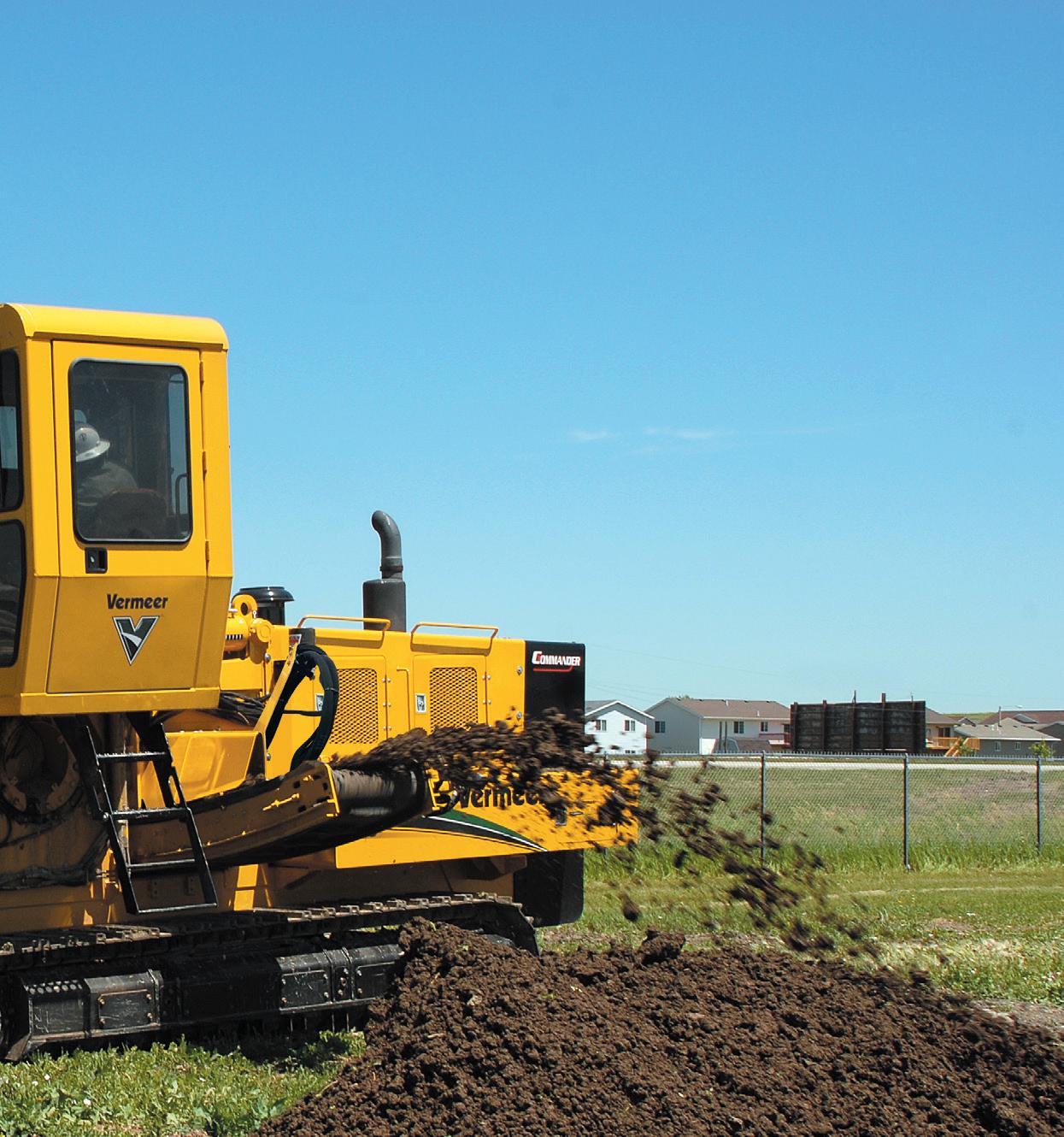
One important consideration in selecting the right piece of machinery for a job is site access. Large-scale heavy machinery such as excavators can be difficult to manoeuvre into tight spaces, making trenchers a more viable option at times.
“Walk-behind trenchers such as Vermeer’s RTX130, RTX200 and RTX250 pedestrian trenchers are the perfect solution for tight spaces. They make a great option for small-scale utility installations and irrigation projects where job site access is restricted,” Mr Lawson said.
According to Safe Work Australia, there are several risks associated with excavation work, making it critical to select the right machinery for the job. Health and safety risks associated with excavation work include falling on uneven surfaces or the fall or dislodgement of earth or rock. Excavating equipment is known to create rough walls and debris that can pose these kinds of risks to workers onsite.
Unlike excavators, Vermeer’s range of trenchers create smooth, sturdy walls, and spoil is stacked consistently and away from the edge of the trench, reducing the risks associated with uneven or weak ground surfaces near the trench walls.
Sourcing equipment that fits the bill can be challenging, and requires the right information and insights. Vermeer’s team of product specialists have the industry knowledge and practical application experience to assist you. Visit vermeer.com.au or call 1300VERMEER to learn more about its range of trenchers or to speak with a product specialist about the unique needs of your operation.
33 CIVIL CONSTRUCTION // PARTNER SOLUTIONS
CHANGES TO WORKPLACE MANSLAUGHTER LEGISLATION
IN VICTORIA
 Oby John Kilgour, CEO, Civil Contractors Federation Victoria
Oby John Kilgour, CEO, Civil Contractors Federation Victoria
From 2020, businesses and officers in Victoria whose negligent conduct causes a workplace death may be guilty of workplace manslaughter under sweeping new legislation introduced by the Andrews Labor Government. Here, the CCF takes a closer look at how this change could impact civil construction businesses, and provide a rundown of what you need to know.
n 26 November 2019, the Victorian Parliament passed the Workplace Safety Legislation Amendment (Workplace Manslaughter and Other Matters) Bill 2019 (WM Bill), which will amend the Occupational Health and Safety Act 2004 (Vic) (OHS Act) and introduce the workplace manslaughter offences.
In Victoria, both businesses and officers can be charged with workplace manslaughter. Where a business – which includes companies, associations and partnerships – is found guilty, they could face fines of up to AU$16.5 million. Individuals who conduct a business (but not a volunteer), together with officers, could face up to 20 years jail if found guilty.
While no commencement date has been announced for the workplace manslaughter offence, it is expected that it will apply to any negligent conduct occurring on or after 1 July 2020.
It is important to appreciate that not every act or omission causing a workplace death will amount to workplace manslaughter. The act or omission must involve criminal negligence. This requires “a great falling short of the standard of care that would have been undertaken by a reasonable person in the circumstances” where there is a high risk of death, serious injury or serious illness (section 39E of the WM Bill). This is an emotional issue and there are community expectations that the new offence will lead to prosecutions and jail terms.
CCF’S VIEW ON THE NEW OFFENCES
A person will be guilty of workplace manslaughter where they:
1. Engage in negligent conduct, and
2. That conduct amounts to a breach of the OHS duty owed to another person; and
3. That conduct causes the death of the other person (section 39G (1) of the WM Bill)
Section 39G (2) of the WM Bill creates a similar offence where it is an officer’s negligent conduct that causes the person's death.
The Victorian Government hopes that the deterrent of workplace manslaughter, together with the threat of imprisonment, will provide a greater incentive for businesses to improve workplace safety and help stem the number of workplace deaths. While any workplace death is lamentable, it is CCF’s held view that the introduction of this offence won’t enhance safety outcomes, but will deny fair legal process, and have detrimental effects on investment and employment in our industry.
CCF made a series of representations and engaged extensively with other membership bodies, the State Opposition and Crossbench members, seeking amendments to the proposed Bill in our push for a better, fairer and, above all, safer industry in this state. CCF and other industry groups had significant concerns about the content of the proposed
March 2020 // Issue 14 www.infrastructuremagazine.com.au
34 CIVIL CONSTRUCTION
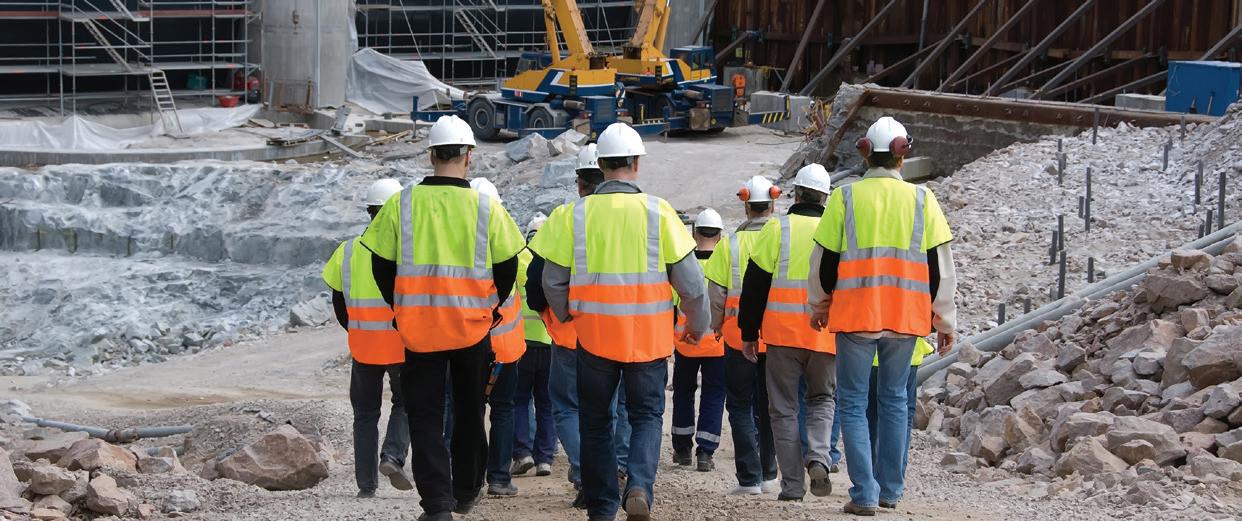
Bill and the approach taken by government in its engagement with industry. The offence excludes most employees, which is inconsistent with the spirit of the OHS Act, where workplace health and safety is the duty and responsibility of all parties.
PARLIAMENTARY DEBATE
Representations made by CCF were referenced during parliamentary debate by the Shadow Minister for Industrial Relations & Workplace Safety, the Hon Nick Wakeling, including the:
♦ Decision to carve out employees in the offence
♦ Lack of engagement with industry by the State Government where CCF was not extended the courtesy of a response to our concerns, and
♦ Placement of the offence in the OHS Act, with individual privilege against self-incrimination compromised by the obligation to produce documents when questioned during a workplace incident investigation
CCF seeks to work with all sides of government in an effort to deliver safer outcomes in the workplace. We believe there is a strong argument for re-drafting or amending this Bill regarding the application of the Victorian Charter of Human Rights to the proposed workplace manslaughter offence.
We are encouraged by the tabling of this draft amendment that our voice is being heard and that the proposed redrafting of the Bill will ensure that these laws are fair and equitable, and deliver improved workplace safety outcomes.
PREPARATORY MEASURES YOU CAN TAKE
With the introduction of this offence, it is important that we keep calm and carry on with business. That said, as
business owners and leaders, there are steps you can take in preparing your business for the introduction of the workplace manslaughter offence.
1. Ensure that your business and officers understand the critical health and safety risks in operation and have verified that controls for those critical hazards and risks are implemented and working effectively.
Prosecutions will result in a failure to consult, coordinate or co-operate on health and safety matters with other duty holders.
2. Update your business incident investigation protocols to increase focus on investigating serious near miss incidents.
The timely close out of investigation action items for potentially fatal near misses is critical to preventing the next fatality from occurring.
3. Establish fatal incident response protocols in your business.
This includes conducting incident response training and emergency drills so that you and your personnel are prepared for complying with your legal obligations in the events following a notifiable incident.
During 2020, CCF will be conducting a series of workplace manslaughter workshops with its legal advisors, Lander & Rogers, in preparation for the introduction of this new offence. For more information on this subject or the upcoming workshop series, please contact the CCF team on 1300 DIAL CCF or email support@ccfvic.com.au.
About Civil Contractors Federation (CCF)
Civil Contractors Federation (CCF) is the peak industry body representing Australia’s civil construction industry with more than 2,000 contractor and associate members nationally and over 520 of these based in Victoria.
CCF members are responsible for the construction and maintenance of Australia’s infrastructure, including roads, bridges, pipelines, drainage, ports and utilities. Its members also play a vital role in the residential and commercial building industry by providing earthmoving and land development services including the provision of power, water, communications and gas.

www.infrastructuremagazine.com.au March 2020 // Issue 14 35 CIVIL CONSTRUCTION
GRADER MACHINE CONTROL TECHNOLOGY FOR THE FINAL TRIM
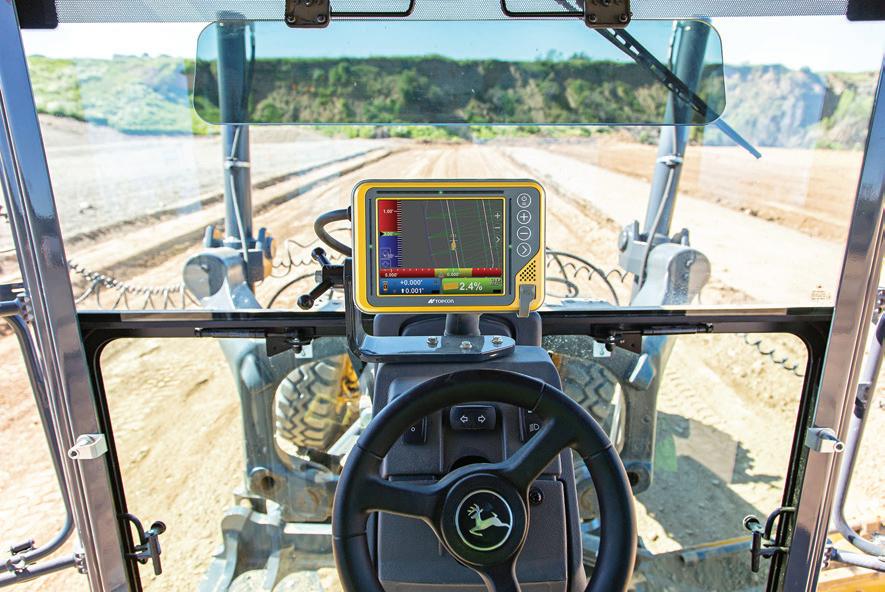
Topcon machine control technology provides the flexibility to mix and match your grader solution to suit different applications at different stages of the project you’re working on.
Many of the new graders in Australia arrive from the factory or dealer with the option of an integrated system and basic machine control technology already installed. So it is now more important than ever to ensure you have the best solution on your grader that will not only suit your current needs but can also grow with your business.
If you rely on a factory fitted system, you may be limited by the fact that these systems are often not upgradeable or transferable between machines. If you need a more sophisticated solution it can be difficult to proceed without starting again with a different option, and this can be needlessly expensive and time consuming.
Ensuring you have the best machine control solution is arguably even more important on your grader because if fine tolerances are not achieved consistently across the site, it will result in rework and extra materials, increasing costs and decreasing efficiencies.
Ideally, you need to get the grade right the first time and Topcon machine control can ensure you do.
A CUSTOMISABLE SOLUTION IS ESSENTIAL
“The machine control technology available from Topcon is compatible across all machine types, makes and models. This makes it a highly flexible and customisable solution,” Josh Allan, Construction Business Manager – Australia, Position Partners, said.
“A GNSS machine control system can be adapted with a high precision laser transmitter that combined will deliver millimetre vertical precision for fine grading tasks – a technology unique to Topcon.”
Topcon machine control technology is the most flexible on the market, so you can mix and match your solutions to suit whatever job you’re working on. All contractors can attest that every job is different and you often need more than one
machine control system configuration to complete the range of tasks you work on to the tolerance you require.
For example, across one project, the best solution may need GNSS/GPS in open sky, fine tolerance achieved with mmGPS including a high precision laser transmission, LPS (total station) technology when working in built up areas or dense tree coverage, and have the ability to include a sonic tracker to follow the kerb.
Topcon has the technology and the flexibility to ensure you’re working seamlessly across every application at every stage of the job.
LOOK FOR SCALABLE AND FLEXIBLE
OPTIONS
Topcon grader machine control gives you the option to:
♦ Easily swap machine control technology between machines – so you can stretch your machine control system across a range of machines
♦ Scale up or scale down to suit the job – for example, you might box out a subdivision with GPS/GNSS but then you can switch to a sonic tracker to follow the kerb. Topcon lets you work with 2D or 3D technology without having to install a whole new system
♦ Combine GPS/GNSS with other technology, including laser or prisms with a total station, to increase accuracy even further for final trim work
“Topcon has the grader machine control technology you need for final trim, its flexibility and precision is second to none,” Mr Allan said.
“Topcon machine control technology gives you the option to start with an entry level system, then upgrade and adapt that system by renting, purchasing or swapping components. This means that you can customise the solution to suit you and what you need on the project without having to go out and purchase a whole new system.”
March 2020 // Issue 14 www.infrastructuremagazine.com.au 36 CIVIL CONSTRUCTION // PARTNER SOLUTIONS

Growing infrastructure demands around the world are creating tremendous challenges and opportunities.
Topcon works to stay a step ahead, by creating solutions that incorporate technology advancements into the way you work today and tomorrow, transforming the way infrastructure is built.
Our integration of high-accuracy positioning, high-speed imaging, cloud-based information management and down-to-earth simplicity creates higher productivity, enhanced quality and improved sustainability. With Topcon, you can stay ahead of your competition and meet the challenges of Infrastructure growth.
Watch Topcon Positoning Systems President and CEO Ray O’Connor’s Bloomberg “NEXT INFRASTRUCTURE” interview: www.topconpositioning.com/Infrastructure.
Let’s discuss your next project: 1300 867 266 | www.positionpartners.com.au
The Intersection of Infrastructure and Technology
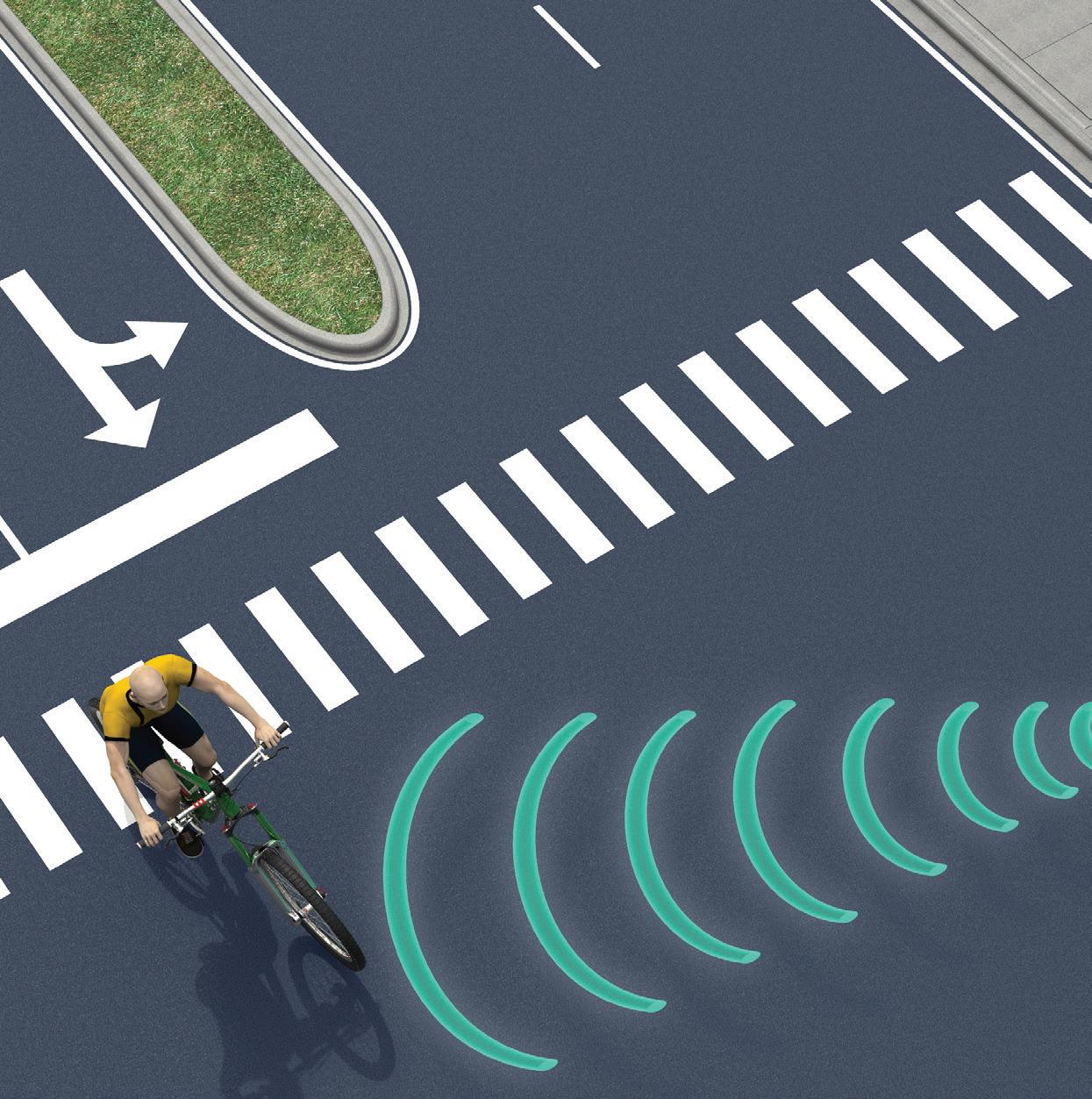
USING LIDAR IN AUSTRALIAN-FIRST
ROAD SAFETY
Currently, around one third of lives lost and 44 per cent of serious injuries on Victorian roads happen at intersections. VicRoads is currently trialling groundbreaking new technology that will be able to predict crashes and near misses at intersections – and tell us how to prevent them.
by Imogen Hartmann, Journalist, Infrastructure magazine
Imagine if every time a road crash occurred, you could go back and see exactly what went wrong and how you could stop it from happening in the future. Better yet, imagine if you had a warning to avoid it happening all together.
This is the idea behind Omni-Aware, VicRoads’ Australian-first trial of LIDAR technology currently being tested at a Melbourne high-crash intersection. Following a successful off-road trial in September 2019, the intersection of Williamstown Road and Somerville Road in Yarraville was fitted with four
LIDAR sensors and four cameras to detect and map the movement of all road users through the intersection. The system aims to detect all crashes and near misses in real time, and in the future could send warning messages to connected vehicles. The research will also provide significant insight to inform the way intersections are designed in the future.
Member for Williamstown, Melissa Horne, said, “This technology will play a key role in keeping Victorians safe on our roads – that’s why we’re investing in it and beginning the roll out on our roads.”
38
SOFTWARE, COMMUNICATIONS AND CONNECTIVITY
March 2020 // Issue 14 www.infrastructuremagazine.com.au

TECHNOLOGY
GOVERNMENT AND INDUSTRY SUPPORT
Delivering the trial is the Omni-Aware team – a consortium of specialist technology companies including Intelligent Transport Services, TransOptim Consulting and IBIS Computer.
Funding was provided through the Victorian Government’s $9 million Connected and Automated Vehicle Trial Grants Program. The grant program is managed by the Victorian Department of Transport and funded by the Transport Accident Commission (TAC) and the
Department of Transport through the Towards Zero Action Plan which supports a range of initiatives to improve road safety across Victoria.
Head of Road Safety Victoria, Robyn Seymour, said that the life-saving potential of the Omni-Aware trial was a big factor in the program’s selection as part of the Victorian Government’s grants program.
“That’s why our Omni-Aware trial is focused on understanding these crashes and how they may be prevented into the future,” Ms Seymour said.
“We’ll be monitoring crashes and near misses to inform future intersection design and see how we can use LIDAR technology to alert drivers when a crash is imminent.”
ADVANCED SENSOR TECHNOLOGY
LIDAR is an active sensor that emits light photons which are reflected off objects and back to the receiver. LIDAR provides precise position data for objects and does not rely on light in the environment to function, like cameras do.
39 SOFTWARE, COMMUNICATIONS AND CONNECTIVITY
www.infrastructuremagazine.com.au March 2020 // Issue 14


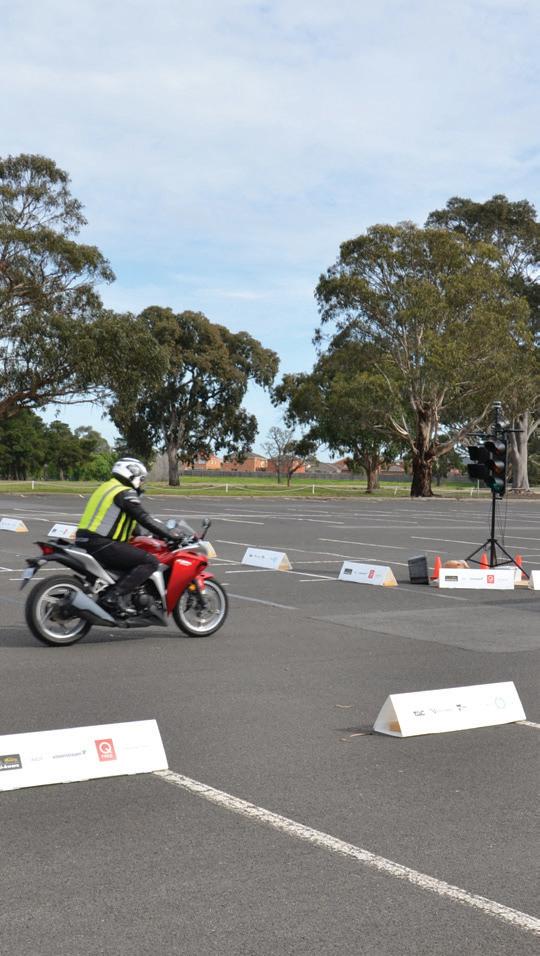
SOFTWARE, COMMUNICATIONS AND CONNECTIVITY March 2020 // Issue 14 www.infrastructuremagazine.com.au 40

The LIDAR data is processed to record an accurate position, direction, speed and acceleration ten times each second for each road user travelling through the intersection.
The real-time merging of data from four LIDAR sensors at the corners of the intersection is a point of difference to how the sensors are used on automated vehicles, which detect the 360 degree surroundings of the vehicle.
The cameras at the intersection also de-identify all personal information such as number plates and faces before it is used for research.
ON-ROAD APPLICATION
The off-road trial in September 2019 demonstrated the technology’s capability to detect hazards in real time and send warning messages to connected vehicles travelling through the mock intersection. It has since been fitted to the intersection in Yarraville and will be collecting data for six months. This intersection was chosen as it has a
mix of different road users and is representative of many intersections across metropolitan Melbourne in terms of road users and intersection layout.
The project will assess the extent to which deploying automated vehicle technology on roads will allow more road users to benefit from the technology sooner.
The next stages of the trial will involve continuing to collect and de-identify data. The Department of Transport will securely store and manage the data collected during the trial. Victoria’s road safety partners – including TAC and Road Safety Victoria – will closely analyse any crashes and near misses to determine causal factors and assist in making roads safer in the future.
Victorian Minister for Roads, Roads Safety and the TAC, Jaala Pulford, said, “Victoria has always led the way in connected and automated vehicle technology, this is another way we’re making our infrastructure and policies support the uptake of this life-saving technology.”





SOFTWARE, COMMUNICATIONS AND CONNECTIVITY www.infrastructuremagazine.com.au March 2020 // Issue 14 41
3D MODELLING OF HEADSTOCKS FOR ELEVATED FLINDERS LINK PROJECT
A complex headstock design has been brought to life with InfraBuild's 3D modelling software. The result is a support structure enabling a sweeping rail extension connecting Adelaide’s Tonsley Precinct with the Flinders Medical Centre.
Aseries of nine headstocks have been built to create the supporting structure for a 650m extension of the Flinders Link rail line, allowing a single track to be elevated over a series of roads and linking the passenger rail network to the new Flinders Station.
THE REINFORCING STEEL CHALLENGE: MULTI-RADIUS HEADSTOCK REQUIRED COMPLEX REINFORCING DESIGN
The original design of the headstock included bars that incorporated compound radii and straight ends with hooks all on the same bar. These bars could not be manufactured on machinery that currently exists, so each individual bar had to be analysed and amended to suit what was both achievable and still within the design parameters.
Furthermore, there was no room for error as the steel fixers had to assemble these headstocks onsite and the placement of each bar was dependent on the position of the bar placed before it.
Matt Bell from InfraBuild Construction Solutions, said, “We weren’t prefabricating it in a controlled environment – we were supplying the bars directly to site. There was no room for error.”
3D MODELLING ALLOWED DETAILED ANALYSIS OF EACH INDIVIDUAL BAR SHAPE
InfraBuild Construction Solutions in Port Adelaide took the basic headstock model and then recreated it as a detailed 3D model. Remodelling the headstock allowed for clashes to be identified and all the bar shapes to be redesigned and then manufactured.
The state-of-the-art 3D modelling machine, the only one used in the InfraBuild group, also helped to facilitate complex compound angles. Its value to the project was that it maintained tight tolerances and maximised efficiencies by eliminating any secondary operation.
“A lot of work was done analysing each individual bar shape as they varied one to the next,” Mr Bell said.
“We ended up creating a full size template for each bar. Once they were made, we’d sit the bar in the template and see if it needed tweaking. That way we knew exactly what we were sending to the site was going to work.”
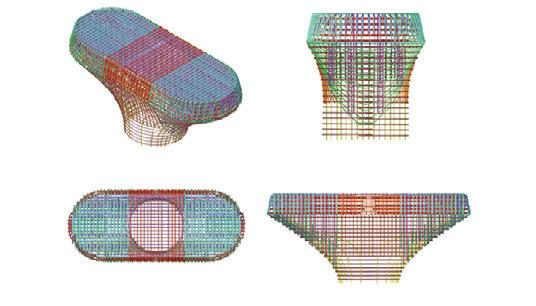


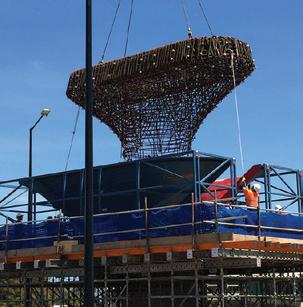
Flinders Link in a nutshell: Improving public transport and pedestrian access to medical hub
» Flinders Link will improve public transport, cycling and walking connectivity between the Tonsley Precinct and the Flinders medical hub
» The completed project will allow connections to the broader Adelaide rail network
» An integrated shared pedestrian/cycle path will be added adjacent to the rail line from the new ramp located at the corner of Sturt Road and Birch Crescent to the new Flinders Station
» The expected completion date is the second half of 2020
March 2020 // Issue 14 www.infrastructuremagazine.com.au
42
SOFTWARE, COMMUNICATIONS AND CONNECTIVITY // PARTNER SOLUTIONS
InfraBuild's precision 3D modelling software ensured tight tolerances were adhered to.
Scan to read more on this project.
We are on a mission to inspire and drive nation-building infrastructure and the construction of Australia’s tomorrow using local resources, sustainable solutions, new technology and big thinking. InfraBuild. Building Possibilities. For all your steel, reinforcing and metals recycling needs

www.infrabuild.com
a company of Formerly
smarter Making ticketing tech
Queensland's Palaszczuk Government is outlaying $371 million to invest in Smart Ticketing – to design, develop and implement one of the most advanced ticketing solutions in the world.
Brisbane's Central Station is the busiest public transport hub in Queensland – accounting for more than 11 million customers each year. The morning peak hour hustle sees more than 23,000 commuters rush their way out of trains and through the ticketing gates into Brisbane's CBD each weekday.
At the end of 2019, it was also the location of a four week trial designed to assist the public to move through the gates more easily and faster than they have before. Four "Express Lanes" were trialled at the Edward Street exit from 7–9am on weekdays – all part of the Palaszczuk Government's Smart Ticketing project.
The trial – focused more on encouraging greater efficiencies in changing commuter behaviour – is designed to see customers slip through the gates swiftly with limited or no wait time.
The Smart Ticketing team is eagerly awaiting an academic report on the Express Lanes trial, but it's just one piece in the bigger puzzle.
The wider project, costing $371 million in total, will use the most advanced global ticketing technology to deliver a more personalised public transport experience for Queensland's commuters and visitors.
"Ultimately, Smart Ticketing will transform how Queenslanders plan, catch and pay for public transport," Transport and Main Roads Minister, Mark Bailey, said.
"It will be one of the most advanced ticketing systems in the world, joining the likes of New York, Boston, London and Chicago on the global stage."
A WORLD-LEADING DIGITAL EXPERIENCE
Mr Bailey said Smart Ticketing will not only provide customers with more choice in paying their fares, but will also deliver upgraded ticketing equipment, an improved mobile app and website, and faster gates at busy stations such as Central.
"It’s a significant innovation investment for Queensland that will see us deliver a world-leading digital experience to public transport users," he said.
Among the most progressive changes by TransLink, Queensland's public transport agency, is the introduction of new ways for customers to pay, including debit and credit cards, smartphones and wearable devices such as smart watches.
It's the biggest shake-up in the management of public transport in the state since the go card was launched in 2008 – stepping away from the traditional paper tickets. Ticketing technologies have developed quickly since and the transport sector has experienced resulting disruption.
"The go card has been very good to us and continues to keep Queensland moving," Mr Bailey said. "However, that system is now more than ten years old.
"As with all technology, it has an expiry date and doesn’t have the capability to keep up with our rapidly-evolving customer needs and expectations.
"With Smart Ticketing you can genuinely pay as you go. You can use whichever payment method you have on hand.
"No longer will you need to remember to have your go card on you.
"If you only take your phone with you on a night out, you have your mobile wallet to catch the bus into town."
REAL-TIME TECHNOLOGY TRIAL
Smart Ticketing's account-based model offers flexibility to implement new technology in a phased approach at a time when Queensland is delivering the $5.4 billion Cross River Rail project.
"It’s a big job as it involves the replacement of more than 1,200 fixed devices at stations and 12,000 on-board devices over the next four years to enable the new technology," Mr Bailey said.
It is also planned to improve customer experience through the delivery of a new, intuitive customer mobile app, website and access to real-time service information.
It’s a four-year program with a phased approach to both testing and delivery to ensure optimal customer experience and a seamless transition.
"We have one shot at this project and it’s important we take the time to deliver a product that delivers benefits for our customers – and that means future-proofing it too," Mr Bailey said.
"We have to take time to get it right for Queensland – a state that is nearly five times the size of Japan, seven times the size of Great Britain and two-and-a-half times the size of Texas."
Trialling began in October with five regional centres selected to introduce new ticketing hardware that up until then only printed paper tickets.
March 2020 // Issue 14 www.infrastructuremagazine.com.au
44
SOFTWARE, COMMUNICATIONS AND CONNECTIVITY


The tropical towns of Innisfail and Bowen as well as holiday spot Hervey Bay, nearby Maryborough and Minjerribah (North Stradbroke Island) were the first to test TransLink's equipment in different climatic and geographical conditions, before taking on board real-time technology.
The real-time technology already enables live tracking of any service and allows customers to know where it is and when it will arrive. The Express Gates trial was run during the same period, with the results to be published in a Queensland University of Technology study, which is due in late February 2020.
Greg Ellis, TransLink Ticketing's Program Director, pointed out the Central Station trial was the first customer-facing element for the Smart Ticketing project.

"The trial provided valuable insight into how our customers use the gates and how we can make them more efficient," Mr Ellis said.
Among the investigation was 'eye line' market research which recorded and analysed the emotional response that individual customers had when using the express lanes.
Mr Ellis said the equipment worked well with initial feedback showing customers supported the speedier gates but wanted more assurances they had touched on/off correctly.
"TransLink will be considering larger display screens for the new system that are easier to read and give a clearer signal you've paid, in addition to an audio prompt."
www.infrastructuremagazine.com.au March 2020 // Issue 14 45 SOFTWARE, COMMUNICATIONS AND CONNECTIVITY
Commuters make their way through the Express Lanes gates at Brisbane’s Central Station.
Minister for Transport and Main Roads, Mark Bailey.
(left to right) Minister Bailey, TransLink General Manager (Passenger Transport Strategy & Technology) Martin Bradshaw and Cubic Transportation Systems’ Basil Kypriadakis.
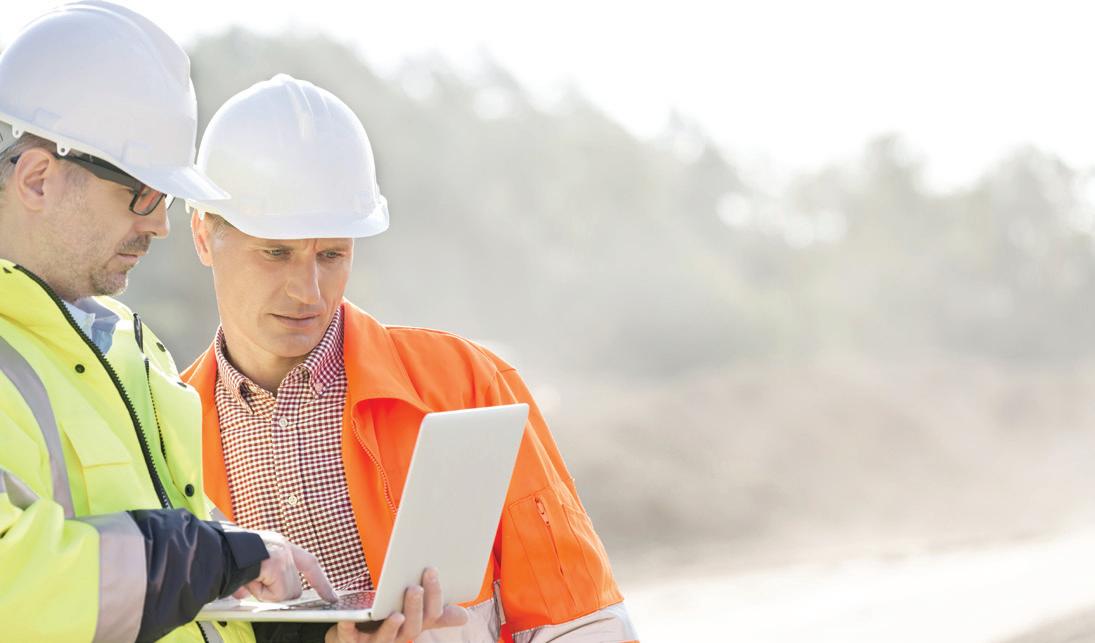
LEVERAGING DIGITAL TRANSFORMATION: INSIGHTS FROM CONSTRUCTION, ENGINEERING AND INDUSTRIAL
Digital technologies are redefining businesses and operating models globally. Both private and public entities are developing and deploying next generation digital technologies to stay relevant and competitive.
For engineering, construction and industrial firms, the search for fresh ways to ensure competitive advantage, meet customer expectations, attract the right skill sets and improve profit margins (aka adopt key digital transformation initiatives) has taken on a greater sense of urgency than at any other time in the past.
Hexagon PPM recently partnered with global research and consulting firm, Frost & Sullivan, to conduct a survey of key operational personnel and senior management within the construction, engineering and industrial sectors in the Asia Pacific region, in an effort to uncover the challenges, expectations and digital adoption rate amongst some of today’s biggest organisations.
The report found that based on those surveyed in the engineering and construction industry, the level of digital maturity scored 6.6 out of 10 (where 10 indicates a highly integrated business ecosystem).
Whilst there have been numerous technologies such as 5D Building Information Modelling (BIM), mobility, GPS, wearables, smart devices and drones to improve safety, communication and reduce delays, there is still significant potential to raise the bar on the leveraging of digital tools and removing siloed operations.
Moreover, the report highlights key challenges faced by the industry that are limiting digital adoption. These include a shortage of capital due to an increase in unplanned expenditure (unplanned shutdown, maintenance, labour issues etc.), lack of internal technical expertise (as Industry
4.0 is a fairly new domain), high price or unclear ROI – mainly due to lack of successful case studies of implementation, and resistance to change from the workforce.
To address these challenges, project owners and construction contractors need to work together to develop digital roadmaps and mandate digital data delivery as a part of the contract. In addition, technology partner selection and engagement are critical success factors for any transforming business.
Who has the right tools and expertise?
While product/functionality related questions are generally obvious and well covered, equally critical are questions relating to the technology partner, for example:
» Does the partner have the expertise to support across all phases of projects?
» Is the system and service range able to cover all or most operational requirements?
» Does the partner show longevity in the industry and have established upgrade paths for their products?
» Does the partner adopt a holistic and structured approach to understanding and meeting customer requirements, and does this inform the roadmap for transformation?
» Does the partner demonstrate the use of best practice standards for project implementation and support?
According to the Frost & Sullivan report, the winners of the future will be the digitally bold companies who can adapt and thrive in the new digital ecosystem through a thorough understanding and adoption of the fundamental shifts and technologies available on the market.
To read the full report and find out how engineering and construction compared to other industries such as oil and gas, mining, chemicals, energy and utilities, visit https://connect.hexagonppm.com/leveraging-digital-transformation-for-growth/Infra
March 2020 // Issue 14 www.infrastructuremagazine.com.au
46
SOFTWARE, COMMUNICATIONS AND CONNECTIVITY // PARTNER SOLUTIONS

Hexagon PPM helps the world work smarter. Our solutions for construction & infrastructure are designed to tackle today’s project complexity, deliver business returns and ensure safety through reliable, efficient operations.
• Enterprise Project Performance
• Front End Engineering and Design (FEED)
• Procurement and Materials Management
• Construction
• Fabrication
• Completions & Handover
• Operations and Maintenance
• Mobile Workforce Visit hexagonppm.com or call +61 3 9856 1943 to find out how partnering with us will digitally transform your business and give you the competitive advantage to thrive in the Australian infrastructure sector.


Your partner in digital transformation.
AUSTRALIA’S SMART CITIES AND COMMUNITIES LEADERS TO GATHER IN MELBOURNE
This May, leaders from Australia and around the world in the field of smart cities and communities will gather in Melbourne for Smart Cities 2020, a two-day conference and exhibition designed to connect, inform and educate our city and place makers about the communities of the future.
Infrastructure publisher Monkey Media, along with the Australian Smart Communities Association (ASCA), will host the event, which is taking place at the Pullman Albert Park from 28–29 May.
The 2020 event will build on the success of Smart Cities 2019, the inaugural smart cities event hosted by Infrastructure and Monkey Media by combining forces with ASCA, Australia’s leading organisation empowering liveable, sustainable and workable smart communities.
Combining local and international keynotes, panel sessions, presenters looking at both the big picture and practical implementation, the popular speed networking, an expo showcase, and a gala dinner and awards night, there is no better place to bring yourself up to date with the latest thinking and technology from this rapidly evolving industry.
HIGHLIGHTS FOR SMART CITIES 2020
At Smart Cities 2020, we'll have a number of key focus areas, which include:
♦ Smart sustainability and the circular economy
♦ City data and infrastructure
♦ Smart cities for all
♦ Future mobility
♦ Smart communities in 2025 Highlights for the event will include:
♦ Industry panels and extensive council case studies
♦ Dedicated topic streams
♦ Multiple speed networking sessions
♦ An exhibition showcase
♦ And, returning in 2020, the Smart Cities Gala Awards and Dinner
WHY SHOULD I ATTEND?
Right now, we stand at a critical juncture when it comes to the development of our future cities, communities and places. We have access to incredible technologies, which can give us the kind of insights and interconnection in cities we’ve never seen before.
But with great technological power comes great responsibility. In the smart cities space, we need to review and understand the technologies available to us; and we need to consider them through the lens of how they will actually improve the lives of the people who call our cities home.
At Smart Cities 2020, we’ll help you approach the smart city in a conscious way, and give you the tools to develop cities and places that are efficient, highly-functioning, healthy and happy places to be.
The event will bring together the pillars of our cities –representatives from federal, state and local government, as well as the buildings, urban design, utilities and critical infrastructure industries – to educate you on the latest developments that are improving the ways our cities, towns and suburbs operate.
Monkey Media and ASCA both have a proven track record in delivering smart cities events. Monkey Media’s 2019 Smart Cities event attracted more than 100 professionals involved in planning, creating and delivering the cities of the future. More than 75 per cent of delegates said they were likely to return for future Smart Cities events.
ASCA has delivered national conferences that have attracted more than 300 members and delegates to learn about the latest thinking, technology and products when it comes to delivering the smart cities and communities of the future.
WHERE CAN I LEARN MORE?
To learn more about the event, and to book your tickets, head to www.smart-cities.com.au/event
We’ll be announcing more details very soon, including our local and international speakers, as well as our full lineup of session presenters for the event.
And to stay up to date with all of the latest smart cities news from Australia and around the world, head to our smart cities news site, smart-cities.com.au, and join our e-newsletter mailing list.
Interested in being a sponsor?
We have created a range of opportunities that give forward-looking companies the chance to really stand out from the crowd at Smart Cities 2020, including:
» Sponsored speaking opportunities
» Session stream sponsors and chairing opportunities
» Round Tables
» The Leader’s Lunch
» Opportunities to connect with delegates before and after the event
» Custom options taking advantage of our comprehensive digital networks through Smart Cities News
» The ever-popular coffee, satchel and other collateral options
» Exhibition booths
Options are starting to sell fast, so if you are looking to position your company as a leading supplier in the digital space, download the prospectus on the website or contact nicholas.damilatis@monkeymedia.net.au to reserve your options.
March 2020 // Issue 14 www.infrastructuremagazine.com.au
48
SOFTWARE, COMMUNICATIONS AND CONNECTIVITY

Pre-sale tickets now available Head to smart-cities.com.au/event/buy-tickets tosaveupto$1000! smart-cities.com.au/event 28–29 May 2020 Pullman Hotel, Albert Park Melbourne Multiple speed networking sessions Exhibition showcase Smart Cities Awards Gala Cocktail Party Industry panels and council case studies Dedicated topic streams
RAPID DEPLOYMENT
CAMERAS ENABLE MONITORING OF REMOTE SITES

With its vast land mass, Australia has no shortage of remote sites without access to power or communications. These sites are often difficult to monitor, especially during extreme weather events, which demand immediate visibility of a specific area. A new rapid deployment camera provides dependable monitoring on even the most remote sites.
Reliable and secure monitoring is vital in minimising risk during one-time or temporary events – extreme weather, popular public events, construction sites and roadworks at high-risk intersections.
However, often the cost of getting power and communications to these remote sites can be prohibitively expensive, particularly if the area only needs to be monitored for a limited period of time.
RAPID DEPLOYMENT AND EASY USE
Madison Technologies’ mRDC Dome is a rapid deployment camera that provides cost-effective remote site monitoring with no power or communications required.
With its own battery system, the mRDC can be charged and powered via solar input or mains power supply. When connected to an optional solar kit, it achieves complete autonomous operation.
The unit’s integrated communications provide 3G/4G and Wi-Fi connectivity, which are easily configured. Remote access is possible utilising the built-in VPN support.
The mRDC’s bracket deployment system is designed so one person can swiftly mount it onto any surface. The brackets can be installed permanently across multiple locations, allowing the cameras to be moved between brackets as needed for multi-site security.
The mRDC is equipped with a Mobotix camera encompassing day/night lenses for high-quality footage in almost any environment, and a built-in web interface allows users to monitor the unit’s settings, status and power consumption.
The mRDC has been deployed in a vast variety of applications. Following a successful trial in July 2013, Gold Coast City Council began using the mRDC across black spot locations to curb hooning behaviour, and Logan City Council has deployed the camera for crime prevention.
During the floods across Far North Queensland in early 2019, a rail authority used the mRDC to monitor a particularly floodprone section of the Mt Isa Line. Assessing the images helped inform personnel to stow an 80-wagon-long train scheduled to pass along it.
Other applications span industries such as mining, water utilities, renewables, education, public health, and community and religious institutions.
IN-BUILT INNOVATION
The mRDC Dome was developed by Madison Technologies, one of many in the company’s impressive suite. Far more than a ‘box dropper’ distributor, Madison is a passionate champion of solutions through innovative technology.
This ethos gave rise to an internal technical services team, Madison Techlab, which operates as a specialist innovations hub. When customers have a unique challenge, Madison collaborates with them to provide innovative technologybased solutions – which often involves combining products from a number of brands it represents to develop the best possible solution.
Just like the mRDC Dome, Madison will go where others can’t, to help companies stay well connected.
March 2020 // Issue 14 www.infrastructuremagazine.com.au 50 SOFTWARE, COMMUNICATIONS AND CONNECTIVITY // PARTNER SOLUTIONS
Madison Technologies is a B2B distributor of technology for commercial and industrial applications. For more information, visit madison.tech/brands/mrdc/.




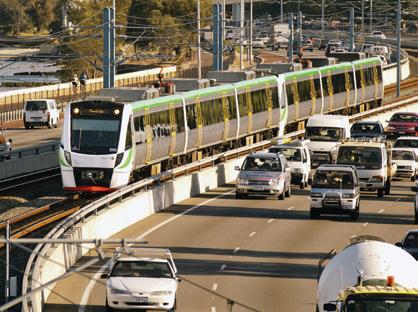


Platinum Sponsors Keynote Speakers include: Anne O’Neil, P.E., CSEP Systems Engineering Catalyst and Industry Advisor, Anne O’Neil Consultants Founding Chief Systems Engineer, MTA New York City Transit Early Bird Registration Closes: 17 Feb 2020 Supported by Aurizon Adventurers Club Creche and Parents Room New to CORE 2020 Register online at www.core2020.org.au
TRAINING THE NEXT GENERATION OF RAIL PROFESSIONALS
by Kim Ho, Assistant Editor, Infrastructure magazine
With the huge pipeline of rail projects around Australia showing no sign of slowing, the sector must act fast if it is to build its workforce and meet growing demand. In December 2019, Infrastructure Assistant Editor, Kim Ho, attended the Australasian Railway Association’s Young Professionals Forum to hear from the industry’s current and future leaders on the challenges and opportunities awaiting rail.
The rail sector is facing a massive pipeline of work over the next 15 years. Governments have come to see passenger heavy and light rail as the ‘spine’ of their integrated transport solutions, connecting with buses and ferries. Faster rail is key to the Federal Government’s plans to open up Australia’s regions. Freight rail, including major projects like Inland Rail, will provide the backbone for the national freight supply chain, creating an integrated rail and road solution.
NEW OPPORTUNITIES BRING NEW CHALLENGES
While current unprecedented government and private investments have increased demand for new skills and opportunities for young professionals, the size of the rail industry’s workforce is set to shrink, not grow, creating a fast-developing workforce gap in the industry.
In May 2018, the Australasian Railway Association (ARA) engaged BIS Oxford Economics to conduct a skills analysis of the rail sector over the next decade. The report indicated that over 20 per cent of the existing workforce – approximately 40,000 workers out of 200,000 – were likely to retire by 2028. By this time, the total workforce gap for rail operations and maintenance is expected to rise to 12,300 workers, or approximately 22 per cent of the available workforce.
For Danny Broad, former CEO and newly-appointed Chair of ARA, it’s clear the solution lies in rail’s future leaders.
“We need to bring a much younger, more diverse workforce on board – not only attract them, but retain them long term,” Mr Broad said.
Concurrently, the rapid pace of technological advances has increased demand for workers with the most up-to-date training. For Mr Broad, fresh graduates “will bring a lot of the new technology skills that they’re learning at school and university that no one in the industry actually knows about. And by the time they’re in the industry for three or four years, new technologies will arrive, so continual updating of skills and knowledge will be needed”.
LEADING FROM THE TOP, BUILDING FROM THE BOTTOM
For its part, the ARA is working hard to provide resources, events and career development opportunities for current and future young rail professionals. It launched the Young Leaders Advisory Board (Y-LAB) in 2019 to give young rail professionals
an opportunity to influence decisions by the ARA Board. The ARA Future Leaders Program brings emerging leaders together and develops their skills through group projects.
Professional pitching competitions give the younger generation a platform to present their ideas and the ARA allows finalists to pitch at major conferences such as AusRail Young professionals can also apply for numerous scholarships and paid travel opportunities.
Since 2017, the ARA has also joined forces with its member partners to hold Young Rail Professional Forums. By combining a panel session of guest speakers with informal networking drinks, the forums are designed to spark debate, stoke curiosity and foster communication across all levels and areas of expertise.
And it’s working; more than 200 young professionals gathered at the latest forum, held on 12 December at Arup’s Sky Park office in Melbourne. Speaking with them, the positive side of the workforce shortage became apparent –unprecedented opportunities for young professionals. Put simply, the industry is their oyster.
HUGE VARIETY OF OPPORTUNITIES IN RAIL
Speakers at the forum agreed that it’s the perfect time to be in rail, as professionals at all levels stand to benefit from the career and financial opportunities springing from the $150 billion pipeline of projects. The sheer number and scale of projects is also expanding the range of jobs within the sector.
“The plus is with all of these projects, there’s such a variety of jobs that it provides all those options,” Mr Broad said. “You can work over here for a consultant for a while, and then for a contractor on a major project, and then on the conceptual design of a new project. It’s really important for younger people to get an understanding of that broad spectrum available.”
However, this message does not seem to have reached enough young people. Forum attendees unanimously agreed that the majority of the sector’s workforce had ‘fallen into’ rail from another industry. Some estimated this figure could be as high as 80 per cent.
While these inadvertent paths into the industry will assist in its diversification of skills, they suggest that official strategies for attracting and retaining workers are falling short.
March 2020 // Issue 14 www.infrastructuremagazine.com.au
52 TRAINING AND SKILLS

DOES RAIL HAVE AN IMAGE ISSUE?
One of the issues at play might be rail’s image – the way it portrays itself as an industry, both to society and especially to potential future professionals.
Jane Gillespie, Senior Consultant at Arup and member of Y-LAB, said, “I think we’re just very inward-looking. We need to start talking about the great work we do more widely.”
For example, Miss Gillespie notes a stark contrast in how the rail industry markets itself versus medicine, which attracts a lot of young people. Medicine asks potential students; ‘Do you want to change the world by improving people’s health?’ Whereas rail asks; ‘Do you want to study physics and maths for eight years?’. If rail wants to grow both in numbers and diversity, rail needs to send a similar message to our young people that emphasises the positive outcomes of rail to our health, happiness and safety.
For Miss Gillespie, universities are key to solving the workforce gap, as they act as “gatekeepers” to the industry.
“Ultimately, it’s about getting that message out there: this industry is well paid, there’s lots of investment, there’s global opportunities. Rail is a dynamic industry and we need to collectively brand it that way.”
While she believes that educational institutions’ focus on STEM subjects is important, it only represents a fraction of the skills needed in rail.
“Like me, you don’t have to be technical to work in rail, I have had so many interesting experiences and I get to work with clients on projects that will shape the future of our rail network and cities,” she said.
WORDS OF WISDOM FROM OLD HANDS TO FUTURE LEADERS
This urgent need to communicate the many opportunities in rail is why outreach events like the ARA’s Young Professionals Forum are important. The panellists at the December forum encouraged attendees to take advantage of exciting changes ahead.
Here is some of the key advice given at the forum to young rail professionals:
Zoe Eather, Senior Consultant, Smart Regions and Mobility,


Arup, recommended young professionals seek work outside of capital cities. Projects in regional areas often see workers involved across every part of the process – a challenging but worthwhile learning experience.
Similarly, being open to overseas opportunities would bring insights from developments happening in rail globally, alongside potential job opportunities abroad.
Emilie van de Graaff, Director, Passenger and Network Innovation, Yarra Trams, emphasised the importance of participating in community consultation throughout one’s career, at any level of experience or seniority. Understanding the nature of serving the public, young rail professionals will learn to see different points of view.
She also suggested speaking to a variety of people in rail and asking what they do, in order to better understand other roles across industry.
Nicole Stoddart, Executive General Manager, Rail and Infrastructure Delivery, Suburban Rail Loop Authority, highlighted the need for young professionals to explore the sector to find the role that suits them best.
“If you haven’t found it yet, there’s so much out there. And there is plenty of opportunity to grow throughout a project’s timeline,” she said.
Mr Broad added that with rapid changes occurring, it always pays to stay on good terms with others within the industry.
“Network, and don’t burn bridges,” he said. “One day you might be working with a contractor, and the next day they might be your customer!”
Nick Morris OAM, Accredited Accessibility Consultant and Director, Morris Goding Accessibility Consulting (MGAC), encouraged attendees to explore possibilities and push boundaries.
“Listen, experiment, fail, have a go, repeat,” he said. “And when you’re told no, ask: But why can’t I? Why can’t we?”
Ultimately, as the industry evolves, young rail professionals are faced with the challenge and the freedom to take control of their own careers. Today more than ever, there’s no such thing as a traditional path into the industry. It’s up to each young professional to create their own.
www.infrastructuremagazine.com.au March 2020 // Issue 14 53 TRAINING AND SKILLS
Jane Gillespie, Senior Consultant, Arup
Danny Broad, Chair, ARA

SHAKING UP CONTINUING PROFESSIONAL DEVELOPMENT IN CONSTRUCTION
The Building Confidence Report that was handed down by Professor Peter Shergold and Bronwyn Weir last year, delivered a damning assessment of public confidence in the building and construction sector. Regulation and industry-leading Continuing Professional Development (CPD) is key to rebuilding confidence and increasing efficiency in the sector.
In the report, the authors noted that they, “have heard suggestions that large numbers of practitioners operating in the industry…lack competence”, that public confidence in the sector had plummeted and, “until relatively recently, there has been almost no effective regulatory oversight of the commercial building industry by regulators”.
The strength of the sector lies in effective regulation. Robust regulation improves our ability to compete and prosper economically; ineffective or costly regulation handicaps performance and results in further diminished consumer confidence.
UPSKILLING THE WORKFORCE AND BUILDING CONFIDENCE
The Royal Institution of Chartered Surveyors (RICS) has a unique position in the industry, delivering assurance to the market through its standards and regulatory frameworks, and its commitment to delivering globally-recognised, industryleading CPD.
One of the key findings from the Building Confidence Report was the critical role that CPD plays in both upskilling the workforce and ensuring confidence in them. This highlights the primary reason why CPD requirements are a fundamental element of a RICS membership.
CPD is becoming more important across the commercial real estate, valuation and building and construction sectors. It is an increasingly critical part of a professional career and is needed
to meet the continuous and advancing changes in technology and regulations, increasing specialisation, and the complexity and integration of the supply network.
While CPD needs to remain both critical and comprehensive, it doesn’t have to be a chore. All RICS CPD offerings are designed to be as both informative and engaging as possible, but now they will go a step further, taking the advice from professionals across the sector who agree that training is most beneficial when it is collaborative, practical and relevant.
A NEW TRAINING CONCEPT
This is why RICS is launching its inaugural CPD Days. Through this innovative concept, it is shaking up the way it offers professional development and networking opportunities by combining the two in an entertaining and innovative new format.
The unique program goes beyond its traditional CPD event offerings by featuring three separate conferences – focusing on quantity surveying and construction, commercial real estate and valuation – taking place concurrently in the one location, followed by cross-industry networking drinks.
The events will be held in Sydney and Melbourne and will feature a range of Australia’s most experienced industry professionals. This provides a rare opportunity to not only learn from the best, but to also engage with your peers, getting the best of both worlds.
March 2020 // Issue 14 www.infrastructuremagazine.com.au 54 TRAINING AND SKILLS // PARTNER SOLUTIONS
For more information on the Royal Institution of Chartered Surveyors (RICS) CPD Days, please visit rics.org/yourcpdday
Maximise opportunity across the construction sector
Australian Construction Sector Training Program launched
The RICS Construction and Infrastructure Surveys show that construction and infrastructure workloads continue to increase across Australia, however, acute skills and labour shortages persist. To meet the growing demand for skills and ensure the industry is prepared for what the future will bring, industry professionals must play their part in developing and upskilling their workforce.
Quantity surveying and construction professionals can adapt and remain proactive in this market by attending this new suite of training. Gain the critical knowledge and skills required to build commercial expertise, reduce risk, increase capacity and maximise opportunity across the construction sector.
For more information, visit rics.org/constructionsectorau


rics.org
EPIC OPPORTUNITIES IN RAIL FOR REFUGEE ENGINEERS
The Level Crossing Removal Project has created a new program providing job opportunities for engineers from refugee or disadvantaged backgrounds. The Engineering Pathways Industry Cadetship (EPIC) will not only provide support for highly skilled workers needing more local experience, but also help fill current gaps in workforce capability.
With a once-in-a-generation infrastructure build underway in Victoria, the next two decades will see state-shaping infrastructure projects that will have positive and long-term benefits for all Victorians. These projects will stimulate economic growth, create jobs and ensure Victorian communities maintain a high standard of living.
However, without a well-trained and highly skilled workforce, the infrastructure vision for Victoria will not be possible. The Training for the Future initiative led by Level Crossing Removal Project (LXRP) is providing programs that do just that. Training for the Future has been developed to respond to modern-day rail industry skill needs. It prepares and provides the necessary workforce to deliver an unprecedented amount of work on our rail networks.
Using best practice, this program delivers a new generation of rail talent for Victoria. It also offers opportunities to re-skill people with relevant experience from industries in decline, as well as training people from refugee and disadvantaged communities.
DIVERSE BACKGROUNDS HELPING TO SUPPORT DEMAND
One of the program’s key initiatives has seen the creation of the Engineering Pathways Industry Cadetship, known as the EPIC program, as a response to the industry’s ongoing demand for entry level site engineers.
Angela Brown, Manager, Industry Capability and Development at LXRP and one of the developers of the EPIC program, said EPIC finds and recruits qualified engineers from diverse backgrounds and assists them to start a career in major transport infrastructure projects.
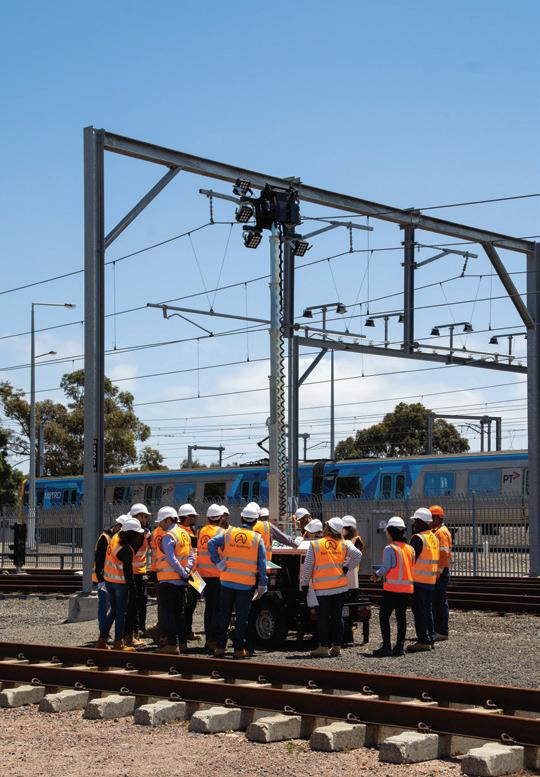

56 TRAINING AND SKILLS
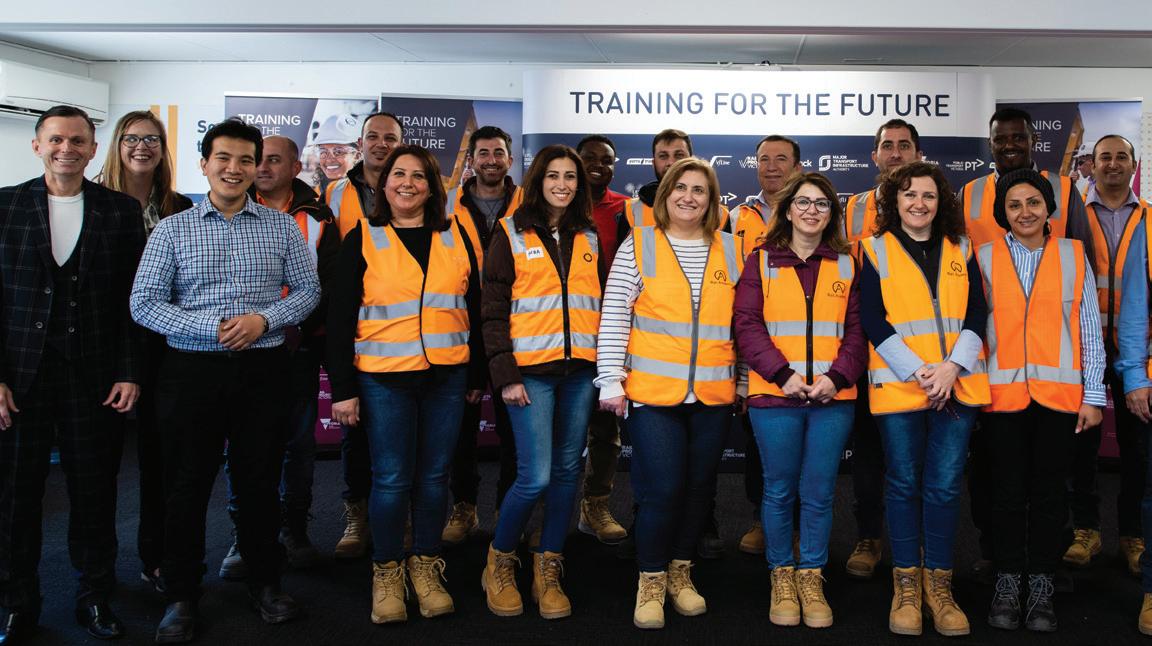

“EPIC provides the double benefit of giving people from diverse backgrounds the opportunity to use their skills. The pilot program sees engineering cadets complete the program over 18 months to receive a Graduate Certificate in Engineering through Swinburne University,” Ms Brown said.
“Equally as important, the initiative drives greater social equality outcomes on our transport infrastructure projects.
“All our programs are geared towards future-proofing and ensuring the necessary skills set to deliver on the next two decades of vital transport work.”
SUPPORTING QUALIFIED WORKERS
Joseph, a qualified civil engineer and a Syrian refugee with over 20 years’ experience sent out over 200 applications in two years before the EPIC program helped him find a role as an engineer with contractor, CPB on the North East Link Project.
He said after arriving in Australia in 2016, it was very disheartening spending time at home and not being able to work to support his family, especially as he had spent years at university and working as an engineer. His lack of local
experience was a major obstacle, despite his seniority in his field.
“The EPIC program has been so good for me. I have been able to get local experience with local companies, which helped me get my job,” Joseph said.
“It gave me the opportunity to get interviews as well as local experience by working for six months, and studying and getting local qualifications. I’ve received so much support.”
The pilot sees up to 30 engineering cadets complete the program over 18 months to receive a Graduate Certificate in Infrastructure Engineering. This accredited qualification is customised to the requirements of transport infrastructure.
Department of Transport agencies, transport operators, project contractors and industry partners are some of the wide range of program partners taking part by employing EPIC cadets.
For more information on the Engineering Pathways Industry Cadetship visit: railacademy.vic.gov.au/news-and-events/ be-a-part-of-the-epic-solution
57 TRAINING AND SKILLS
Left to right: From the Industry Capability and Inclusion team at LXRP, Director, Bradley Giddins; Manager, Angela Brown; Senior Project Officer Duy Le; and in high vis vests, participants of the EPIC program.

GEOSPATIAL REF UPGRADING
While global positioning systems (GPS) can currently provide 5-10m accuracy, more precise positioning is increasingly important for applications in civil engineering, construction, disaster response, flood and storm modelling, and more. Here, Nicholas Brown, Director of National Geodesy at Geoscience Australia, talks about the $225 million Positioning Australia program, and upgrades to the Australian Geospatial Reference System.
According to Mr Brown, the majority of growth in Global Navigation Satellite System (GNSS) sales is within emerging markets such as locationbased services, intelligent transport and Internet of Things (IoT) devices.
The Positioning Australia program will provide accurate and reliable positioning for everyone. The aim is to accelerate the adoption and development of location-based technology and applications.
“In anticipation for the growing use and reliance on precise positioning technology, the Permanent Committee on Geodesy is leading the upgrade of a number of elements of Australia’s Geospatial Reference System including the static datum, the introduction of a time-dependent reference frame, improved geodetic infrastructure, and standards development to improve access and efficiency of geodetic data,” Mr Brown said.
The introduction of the Australian Terrestrial Reference Frame (ATRF) and the Australian Vertical Working Surface (AVWS) from 1 January 2020 will have a significant impact on the delivery of projects and operations involving precise spatial and positional data, improving accuracy, efficiency and safety.
AUSTRALIAN TERRESTRIAL REFERENCE FRAME
The Geocentric Datum of Australia 2020 (GDA2020) is a static datum, which means that the coordinates of features (e.g. roads, buildings and property boundaries), do not change with time despite the ongoing changes in the Earth’s surface.
This is beneficial for applications where it is easier if the coordinates of features do not change (e.g. a major road development project).
In contrast, GNSS base their coordinates on a framework that is fixed to the centre of the earth around which satellites are orbiting.
These frameworks are called ‘timedependent reference frames’ in which the positions of features change with time due to plate tectonic motion.
The ATRF is a time-dependent reference frame that means the positions of features will change with time due to plate tectonic motion, which equates to approximately 7cm per year in Australia.
“Users of ATRF are expected to be predominantly from the areas of intelligent transport services and location-based services,” Mr Brown explained.
For example, in the future, driverless cars will be receiving positioning information from GNSS satellites in ATRF and cars will be automatically requesting and receiving updated map information in ATRF to align with the car’s position.”
In 2020, Australia will adopt this two-frame approach, enabling users to work with a static datum, GDA2020, or with the ATRF.
March 2020 // Issue 14 www.infrastructuremagazine.com.au
58 SPATIAL & GIS

ERENCE SYSTEM AUSTRALIA’S
Given the diverse range of user requirements in Australia, the choice of which reference frame to use (GDA2020 or ATRF) will remain with the user for the foreseeable future.
AUSTRALIAN VERTICAL WORKING SURFACE
For all the benefits of GDA2020 and ATRF, these upgrades only provide GNSS users with the ability to compute their position and align spatial data accurately with respect to the ellipsoid – a simplified mathematical representation of the Earth’s surface.
Nonetheless, water flows in accordance with gravity, not according to the ellipsoid.
“For this reason, the ellipsoid is not an appropriate reference surface for height applications relating to water flow,” Mr Brown said.
“We use the Australian Height Datum (AHD) and a model known as AUSGeoid to convert ellipsoidal heights to AHD heights, which is roughly equivalent to the mean sea level of the ocean around Australia.
“However, AHD has its own problems which mean GNSS users are only capable of deriving AHD heights with an accuracy of 6-13cm across Australia. This is not suitable for some users.”
The AVWS on the other hand is accurate to 4-8cm and its much
smoother surface doesn’t suffer from some of the problems associated with the AHD.
“Some of the biggest beneficiaries of AVWS are expected to be those who are working on projects that require modelling or mapping water flow over areas greater than 10km,” Mr Brown said.
“This is because the AHD has a number of distortions in it which appear as steps or bumps in the datum at distances beyond about 10km.”
THE FOUNDATION TO DATA-DRIVEN DECISION-MAKING
The main challenge that comes with greater accuracy is that there are new considerations – with professionals from the spatial industry being the bridge between the complexities of geodesy and user requirements.
“For example, when attempting to measure something at the millimetre level compared to the centimetre level, geodesists need more stable site foundations, more expensive receivers, geodetic style antennas and better atmospheric models,” Mr Brown said.
“Many users will have precise positioning technology in their hand but it will be up to the spatial industry to deliver data to the user which is aligned with the user’s position and in the user’s datum.”
Mr Brown likened Australia’s Geospatial Reference System to the foundations of a house, providing a stable, accurate and reliable frame on which accurate measurements can be made and connected together.
“The importance of Geospatial Reference Systems was recognised by the United Nations in 2015 with the adoption of a General Assembly Resolution promoting the importance of an accurate, sustainable and accessible Global Geodetic Reference Frame to support science and society,” Mr Brown said.
“A Geospatial Reference System underpins the collection, management and alignment of spatial information and enables us to monitor the dynamic Earth as it breathes.
“In addition to the traditional survey, mapping and navigation fields, spatial information is increasingly critical for civil engineering, industrial automation, agriculture, construction, mining, recreation, intelligent transport systems, land use planning and administration, construction and hazard assessment, disaster response and emergency management, environmental studies, and scientific research.
“The Geospatial Reference System is the glue that allows us to align this spatial data to make better decisions.”
www.infrastructuremagazine.com.au March 2020 // Issue 14
59 SPATIAL & GIS
CRITICAL INFRASTRUCTURE SUMMIT
2–3 September 2020 | Brisbane
Industry leaders from the whole infrastructure cycle will come together 2–3 September at the Hilton Hotel in Brisbane for The Critical Infrastructure Summit – the premier event for construction, asset management and disaster resilience in Australia.
Over the last few years, Australia’s infrastructure industry has experienced significant growth with billions in funding and new projects underway and planned across road, rail, airports, ports, urban development and utilities.
We’re no longer in an infrastructure ‘boom’ – this trend is now the new normal level of infrastructure activity needed to cater for an increasing population, aging assets and innovative new technologies. However, with new projects and opportunities come new challenges, meaning it’s critical to stay informed on the latest updates in the industry.
The Critical Infrastructure Summit will be the industry event for all stages of an asset’s lifecycle, from project construction, management and maintenance, through to how to prepare, survive and thrive in the face of major disaster events.
Brought to you by the team behind Infrastructure, Energy and Utility magazines, the summit comprises three co-located events under the one roof:
1. Critical Infrastructure: Asset Management
2. Critical Infrastructure: Disaster Management
3. Critical Infrastructure: Construct
THE
WHOLE INFRASTRUCTURE
LIFECYCLE ACROSS MULTIPLE SECTORS UNDER ONE ROOF
Critical Infrastructure: Asset Management is the new iteration of the premier industry event Asset Management for Critical Infrastructure, which has been running for four years. Delegates can expect the same high-quality speakers and program as previous years, with the added bonus of two co-located events.
This will also be the second time running Critical Infrastructure: Disaster Management, with the inaugural conference in November 2019. Critical Infrastructure: Construct is a brand new event bringing together the industry leaders, leading companies and hot topics seen in Infrastructure magazine.
This isn’t one event with multiple streams, it is three full industry conferences co-located in the same building, and for the price of one registration, delegates will have access to all three events.
Organisations can send their asset management teams to Asset Management, Resilience Officers to Disaster Management, and Project Managers to Construct, or delegates can duck in and out of all three events for different sessions.
Event highlights
» Expert speaker presentations and industry panel sessions
» Unparalleled networking opportunities
» Access to all three events for the price of one registration
» Major exhibition showcase across all three events
» The inaugural Critical Infrastructure Awards – to be awarded at a Cocktail Gala Party on Day 1
WHAT THE INDUSTRY IS TALKING ABOUT
The expert speaker lineup across all three events features senior leaders from infrastructure asset owners, utilities, government, industry associations and consultancies.
Delegates will hear from those who are implementing emerging technologies; creating new processes and cultures to significantly improve the management of their critical assets; organisations that have survived their own disaster events and emerged as stronger, more capable businesses; and those who are leading the construction of some of Australia’s biggest infrastructure projects.
It is the only Australian infrastructure event bringing together the road, rail, airport, port, urban and utility sectors to share learnings about the entire infrastructure lifecycle.
The Summit will provide a forum for the industry to share each other’s successes and learn from their mistakes. The presentations and panel sessions will provide delegates with practical solutions to improve the way critical assets are constructed, managed and protected, as well as highlighting where future infrastructure opportunities may lie.
March 2020 // Issue 14 www.infrastructuremagazine.com.au
60 CRITICAL INFRASTRUCTURE SUMMIT
assetmanagement FOR CRITICAL INFRASTRUCTURE
ASSET MANAGEMENT
♦ Developing strategic asset management plans
♦ Tools to optimise asset management decision-making
♦ The role of machine learning, digital twins and artificial intelligence
♦ How ISO 550001 can fit into your organisation’s plans
♦ Balancing stakeholder requirements with keeping costs down
♦ Dealing with aging assets
♦ Building and leading a forwardthinking asset management team
♦ Harnessing the constant evolution of technology, from automation to IoT, and data analytics
WHO SHOULD ATTEND THE CRITICAL INFRASTRUCTURE SUMMIT?
Keeping up to date on the latest in infrastructure construction, asset management and disaster resilience is essential in all aspects of an organisation that has critical assets.
Previous Asset Management for Critical Infrastructure and Disaster Management events saw delegates from organisations such as:
♦ Infrastructure Australia
♦ Sydney Water
♦ Ausgrid
♦ Infrastructure NSW
♦ V/Line
♦ Queensland Urban Utilities
♦ Powerlink

DISASTER MANAGEMENT
♦ Disaster prevention
♦ Identifying and preparing for strategic risks
♦ Real-time response
♦ Management and leadership in crisis
♦ Restoring services
♦ Managing the recovery period
♦ Building resilient communities
CONSTRUCT
♦ Case studies of major projects across all sectors – rail, airports, road, utilities etc.
♦ The circular economy
♦ Construction in the face of climate change
♦ Skills and training
♦ How current projects are using new technologies
♦ Diversity in the construction
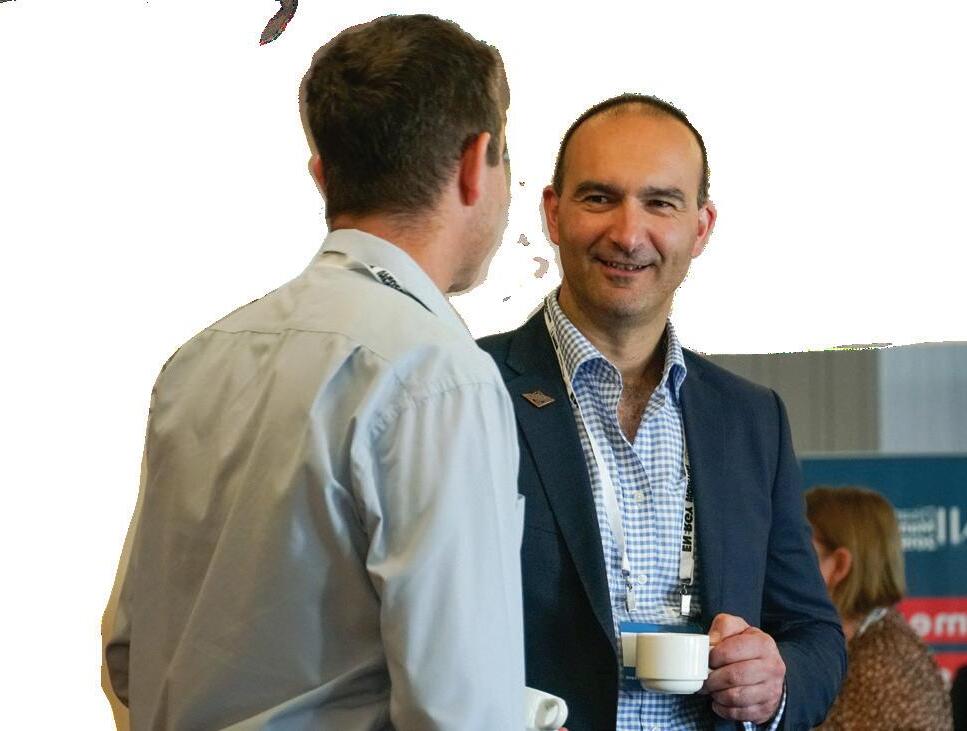
♦ Transport for NSW
♦ Jemena
♦ Port Authority NSW
♦ Energy Queensland
♦ Pacific National
♦ Essential Energy
♦ Sunwater
♦ City West Water
♦ Origin Energy
♦ SA Water
♦ Port of Melbourne
♦ KPMG
♦ TransGrid
♦ WaterNSW
♦ nbn co
♦ And more
REACH INFRASTRUCTURE DECISION MAKERS
The Critical Infrastructure Summit 2020 is the best place to directly reach senior decision makers in the infrastructure and utility sectors as they’ll all be in the one location.
If your business is in the construction, infrastructure, asset management or disaster resilience space, get noticed by sponsoring the event. There are several sponsorship opportunities available – with some including speaking spots and exhibition booths.
If you are interested in being involved in the event or would like more information, please email events@monkeymedia.com.au.
www.infrastructuremagazine.com.au March 2020 // Issue 14 61 CRITICAL INFRASTRUCTURE SUMMIT For more information about The Critical Infrastructure Summit or its events: Asset Management, Disaster Management and Construct, please visit critical-infrastructure.com.au. CO-LOCATED EVENTS
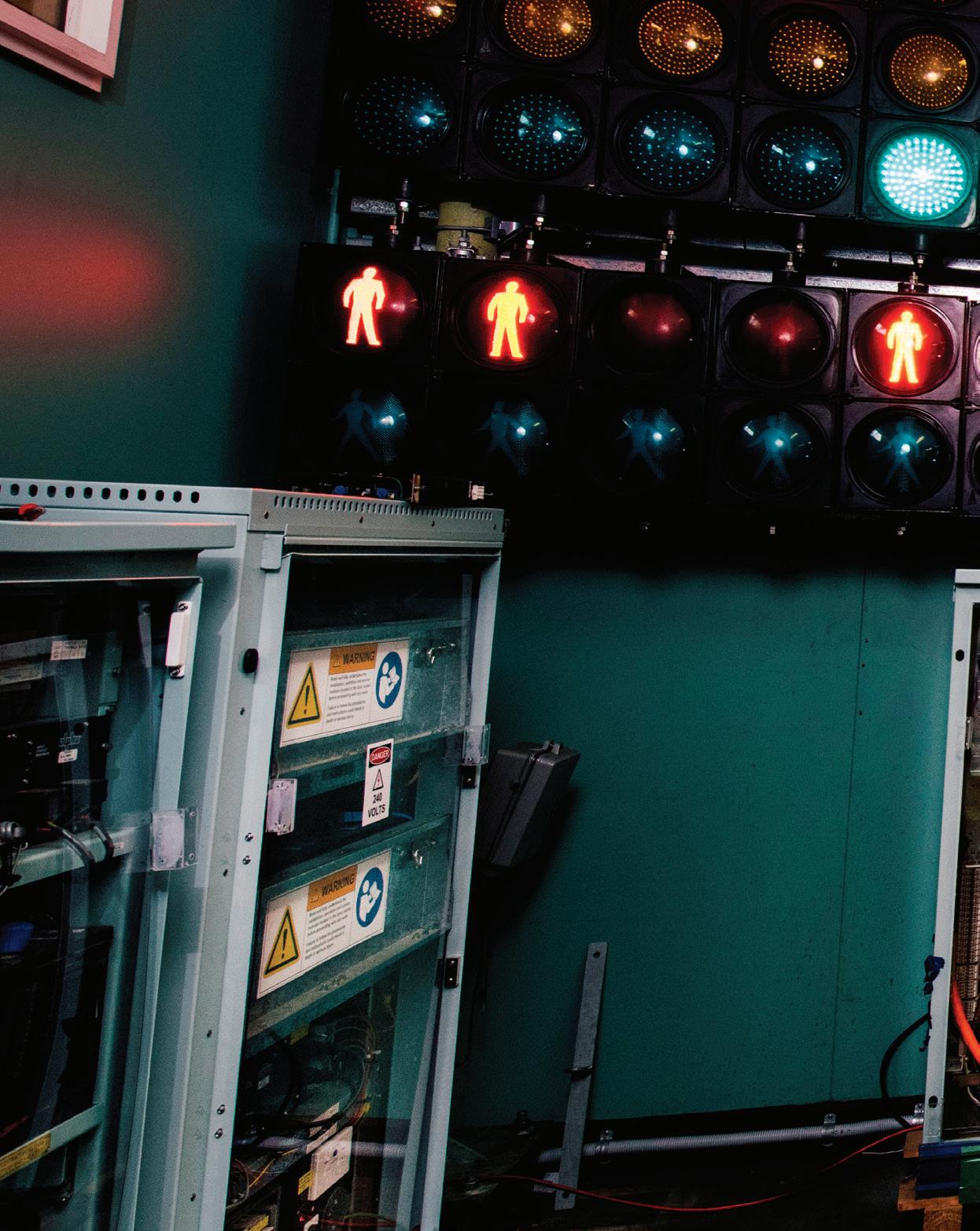
NEW ASSET PERFORMANCE CONTRACTS FOR SYDNEY'S ROADS
by Matt Sweeting, Director of Project Implementation, Transport for NSW
Transport for NSW’s current road maintenance contracts for Sydney will come to an end in mid-2021, with new contracts set to be awarded before the end of this year. Here’s what TfNSW is looking for to ensure the city's road asset maintenance services are part of a holistic networkbased approach.
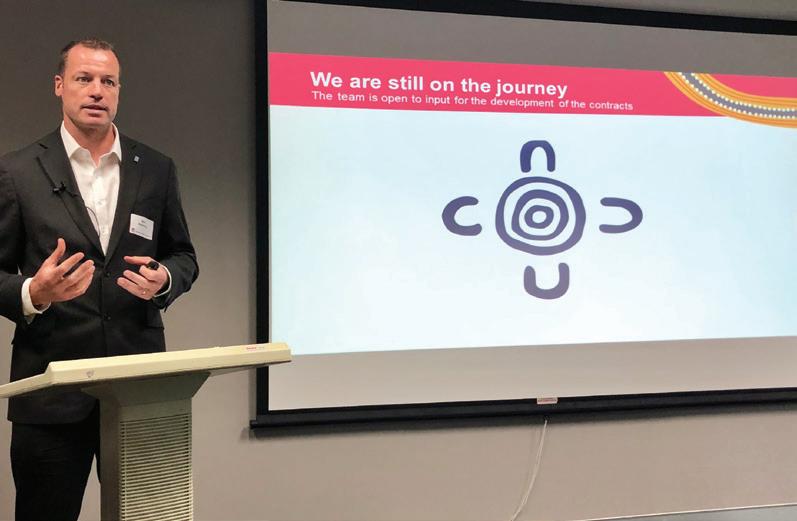
62
CONDITION MONITORING AND MAINTENANCE
March 2020 // Issue 14 www.infrastructuremagazine.com.au
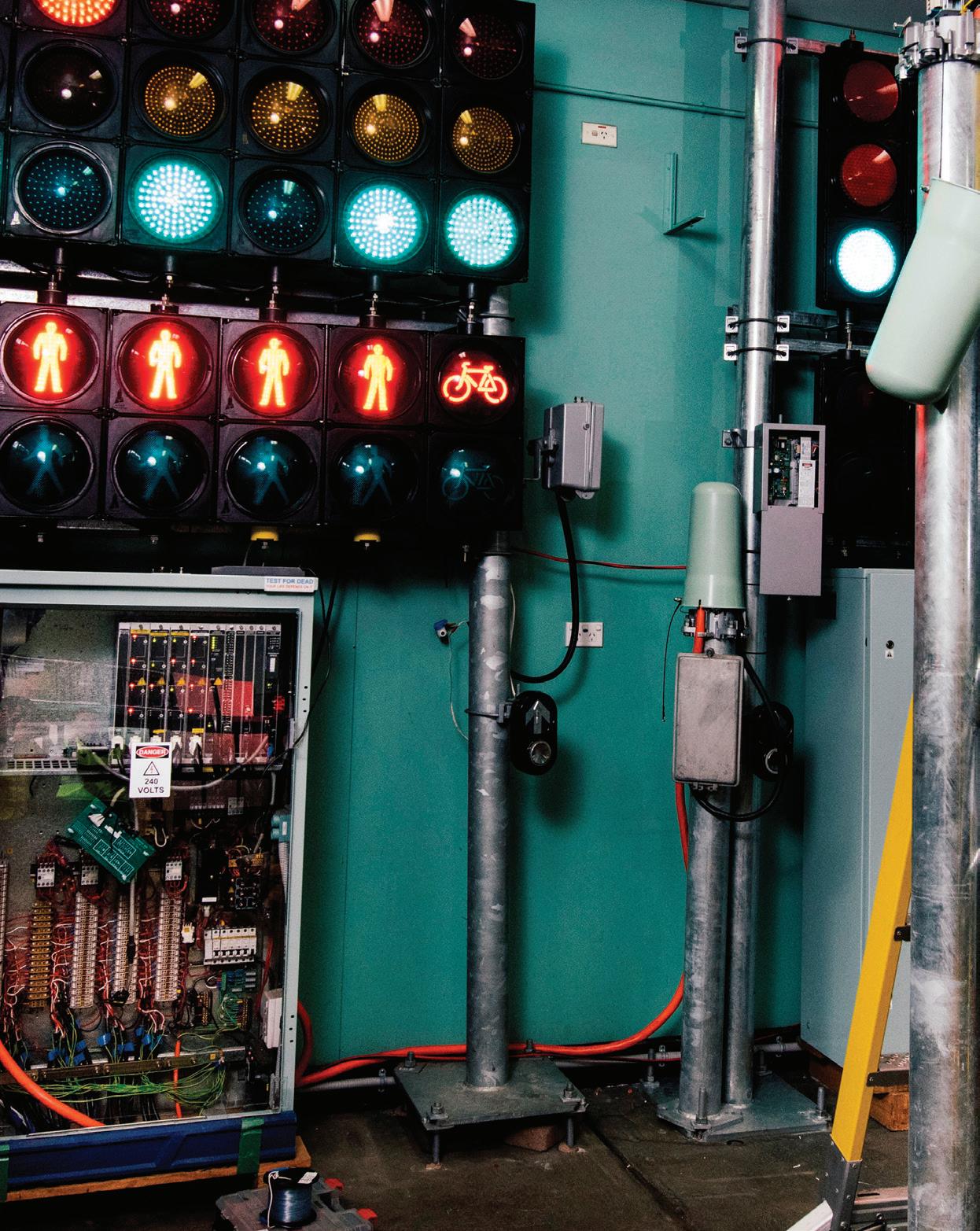
This is an exciting time to be involved in transport infrastructure across Australia and in NSW. The next edition of the Sydney road maintenance contracts is fixed squarely in that bold landscape.
The contracts, known as the Sydney Roads Asset Performance Contracts, are designed to be forward-thinking, innovative and with a strong focus on the customer.
The vision challenges proponents to adapt to the demands of maintaining thousands of kilometres of state roads, bridges and other assets across Sydney with a set of objectives that help deliver economic growth and sustainability.
It’s very much an evolution, rather than a revolution, on the strong contracts and results from recent years.
Overall customer satisfaction with the road network has remained around 85 per cent for private motor vehicles since the Stewardship Maintenance Contracts were progressively introduced in 2013 and 2014, with the aim of delivering better value for money and improved services for customers.
Efficiencies driven by our contracts have seen savings of more than five per cent and, as part of the contracts, the NSW Government directly or indirectly employs more than 2,000 people.
THE JOURNEY CONTINUES
With the current contracts coming to an end in mid-2021, the next 12 months are critical as Transport for NSW looks to get the contracts awarded before Christmas 2020.
Early on in 2020, organisations can express their interest in being a part of the process. The NSW Government will produce a shortlist of proponents and then issue those shortlisted with requests for tenders.
That means mobilisation of the contracts can start in January 2021, giving service providers six months to prepare to hit the ground running on day one.
But before any of that happens, it’s been important to allow industry to have their say and provide input as part of a conversation. Engagement sessions have been carried out as an opportunity to present the vision for these contracts to industry, and respond to a whole range of questions on how the process will work.
A NETWORK-BASED APPROACH
Ultimately, the contracts will be part of a holistic networkbased approach aimed at improving connectivity, integrating services and making better use of capacity.
The contracts have a central focus on the needs and expectations of customers. Work under the contract should ensure assets operate effectively for the customer and align with the community use of that part of the network.
For example, in a place where people like spending their leisure time, it’s important to focus on the amenity aspects such as grass cutting and graffiti removal. As Transport for NSW addresses how to develop enjoyable places, our maintenance contracts will too.
Contractors will have freedom to innovate within clear guidelines and service standards to ensure the best minds and ideas from government and across industry are applied to our Sydney roads network.
The contracts will encourage innovation – they’re specifically set up to allow more creativity and new ideas – to achieve the strategic outcomes we’ve identified. This will result in intelligence from the private sector benefiting customers, road users and Transport for NSW.
63 CONDITION MONITORING AND MAINTENANCE
www.infrastructuremagazine.com.au March 2020 // Issue 14

March 2020 // Issue 14 www.infrastructuremagazine.com.au 64 CONDITION MONITORING AND MAINTENANCE
The Concept of Operations for the Greater Sydney Road Network supports a pivot from “road network owner or operator” to an integrated provider of “transport as a service” considering all users and modes of transport.
It establishes customer-focused performance standards for our road network by corridor type (network function), mode, time of day, and day of the week. Every road corridor within Greater Sydney will be classified by its desired or required function by time of day and day of the week.
GLOBAL, LOCAL, PAST AND FUTURE
The vision of the new contracts outline is consistent with the UN Sustainable Development Goals – making the best use of available resources and assets, and ensuring a resilient transport system that contributes to the NSW Government's objective of net-zero emissions by 2050.
The goals also inspire the contracts to promote reduced consumption, better environmental outcomes and innovation to deliver asset maintenance services in a sustainable manner. That includes an integrated approach to addressing issues such as diversity and inclusion, equal opportunities and reduced inequalities.
Transport for NSW also recognises that industry has a role to play in broadening opportunities for Aboriginal people, including through the supply chain of NSW Government contracts.
Under the Aboriginal Participation in Construction policy, a minimum of 1.5 per cent of project spend must be dedicated

to Aboriginal participation for construction contracts worth more than $1 million. There are also mandatory Aboriginal participation requirements to deliver increased employment opportunities for Aboriginal individuals and improved engagement opportunities for Aboriginal businesses.
Effective contract management also relies on good communication based on mutual respect, trust, understanding, openness and accountability. For example, keeping the relationship between you and your supplier open and constructive, resolving or easing tensions and identifying issues early.
Key values include fairness, integrity, transparency, impartiality, confidentiality, value for money and equality.
DRIVING IT HOME
The new Service Providers will be asked to produce Tactical Asset Management Plans detailing their routine, pavement, ITS, corridor, bridge and tunnel maintenance works for the next three years.
In developing these tactical plans they will need to use the Concept of Operations to ensure that the works and their outcomes meet social and place-making requirements for the network.
An Industry Briefing was also held on 5 February 2020 –another key part of securing effective Sydney Roads Asset Performance Contracts into the future. With an important 12 months coming up, Transport for NSW would like to thank everyone involved in the process so far.
For more information, and a video interview with Matt Sweeting, visit the website https://www.rms.nsw.gov.au/srapc
www.infrastructuremagazine.com.au March 2020 // Issue 14 CONDITION MONITORING AND MAINTENANCE 65
WORKING TO EQUIP RAIL PASSENGERS WITH INDEPENDENCE

 by Andrew Meier, Executive Director/Chief Executive Officer, Australasian Centre for Rail Innovation (ACRI)
by Andrew Meier, Executive Director/Chief Executive Officer, Australasian Centre for Rail Innovation (ACRI)
66 RAIL EQUIPMENT

Accessing the built environment, and the services offered within infrastructure, is a constant challenge for people with a disability. These challenges are not just with physical structures and include barriers encountered with areas such as information access and staff training levels.
67 RAIL EQUIPMENT

Barriers for people with a disability can also mean the end of a journey; to quote the late Stella Young, “No amount of smiling at a flight of stairs has ever made it turn into a ramp”.
This is obviously an issue for rail operators. It does, however, also present an opportunity to look widely and beyond the sector for innovations that would enhance the rail passenger experience for people with a disability.
The Australasian Centre for Rail Innovation (ACRI) is a collaboration of private and government sector bodies who pool their resources to cooperatively investigate issues and opportunities of mutual interest. ACRI recently partnered with the Rail Industry Safety Standards Board (RISSB) in the United Kingdom on a horizon scan, searching globally to identify countries leading in accessibility, particularly for service innovations being deployed in the wider transport sector, hospitality and retail.
Acknowledging the current review of the Disability Standards for Accessible Public Transport (DSAPT), ACRI’s work in this area seeks to highlight the breadth of opportunity to continually work towards a universal travel experience.
WHAT RAIL CAN LEARN FROM OTHER SECTOR INNOVATIONS
The availability of accurate information on infrastructure accessibility, and the contribution of technology to the collection and dissemination of that data, emerged as a key element from the horizon scan. Crowd sourcing and online sharing by the disability community of access details (e.g. routes through a city with presence of lifts and ramps) is enabling more informed navigation of urban environments. Importantly, this information is then widely available to transport operators to aid infrastructure investment decisions and also for app development.
The scan was deliberately inclusive of a broad range of disabilities and did not focus solely on physical access. Innovations identified in the transport sector (and in this case also already deployed in sporting stadiums in Australia) include quiet rooms designed to aid the travel experience of people on the autism spectrum and those accompanying them. These areas acknowledge that noise and activity levels in some environments can be overwhelming.
In Pittsburgh International Airport in the United States, ‘Presley’s Place’ not only offers a quiet space, but also
incorporates a mockup of an aircraft interior, enabling socialisation with the plane environment before boarding. The benefits of facilities like Presley’s Place also extend beyond those directly using the space, positively impacting passengers and staff within that transport environment.
The scan also identified initiatives in the retail sector to improve service provision to people with dementia. This includes both design enhancements for retail spaces and awareness training for staff. This holistic approach was also evident in the hospitality industry. A Swedish hotel chain has applied universal design and service principles to its properties, including fabric selections made with guidance from asthma experts and walking stick holders at reception counters. These and other accessibility elements are publicised online to highlight their universal approach to customer service.
NOTHING FOR US WITHOUT US – ENGAGEMENT IS ESSENTIAL
What was regularly confirmed throughout the scan was that advancing accessibility has universal community benefits. Naturally, there are also benefits for those with temporary disabilities, but increased accessibility for tourists, who are both infrequent users and potentially transporting luggage, is a further example.
ACRI is now following the horizon scan with a systematic review that may identify any further innovations, and then a series of workshops to explore those with potential for pilot trial. These workshops are planned to include representatives from rail operators, assistive technology professionals and, most importantly, transport accessibility user groups.
Evident throughout the scan was the significance of engaging people with a disability in the selection, design and implementation of accessibility enhancements. “Nothing for us without us” is not only inclusionary, but harnessing the specific knowledge of needs and experiences that people with disability have within the planning process leads to improved in-service outcomes.
Equipping rail transport for accessibility greatly benefits from a universal approach to knowledge and in turn, results in universal benefits.
March 2020 // Issue 14 www.infrastructuremagazine.com.au 68 RAIL EQUIPMENT
Rail travel and disability: An international perspective on accessibility can be freely downloaded from the ACRI website at acri.net.au/acri-research-projects/.
Image credit: Pittsburgh Airport.

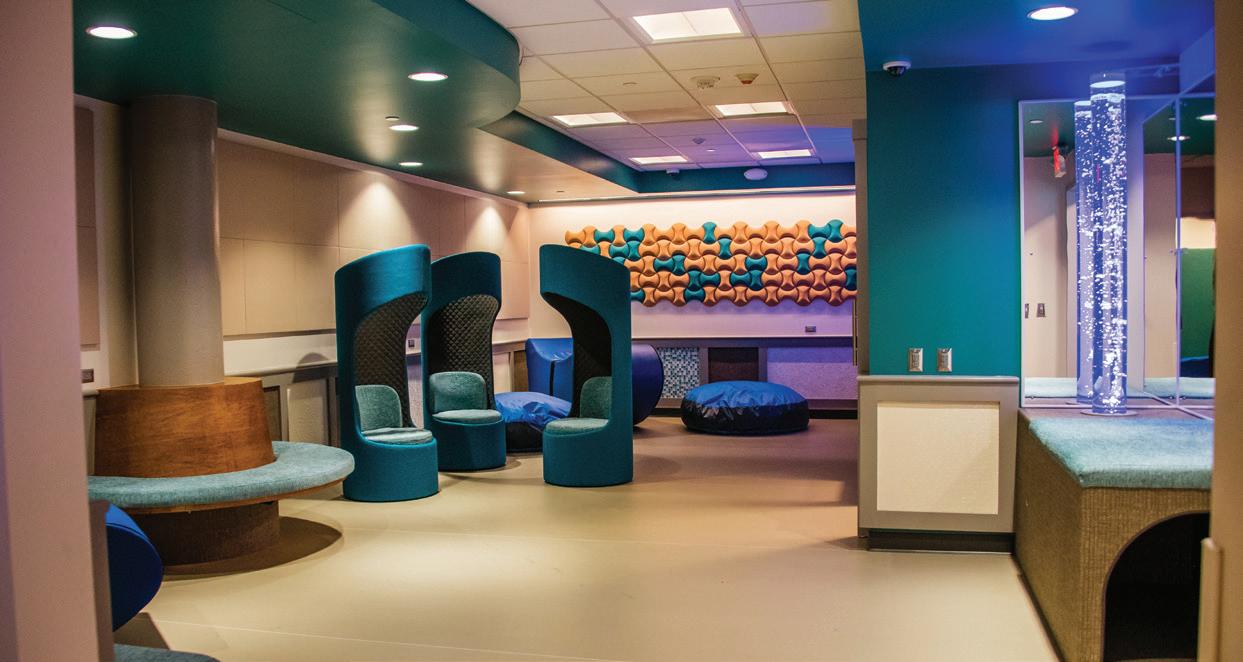
www.infrastructuremagazine.com.au March 2020 // Issue 14 69 RAIL EQUIPMENT
Image credit: Pittsburgh Airport.
Image credit: Pittsburgh Airport.
OVERHAULING BUNDABERG’S SIGNALLING SYSTEM
Queensland Rail has completed a $21.8 million project to upgrade the city of Bundaberg’s rail signalling system and seven level crossings. Here, Infrastructure speaks to Queensland Rail Signalling Delivery Manager, Yuliya Piper, about the process involved in the multi-million dollar project, including the benefits of unlinking the new system.
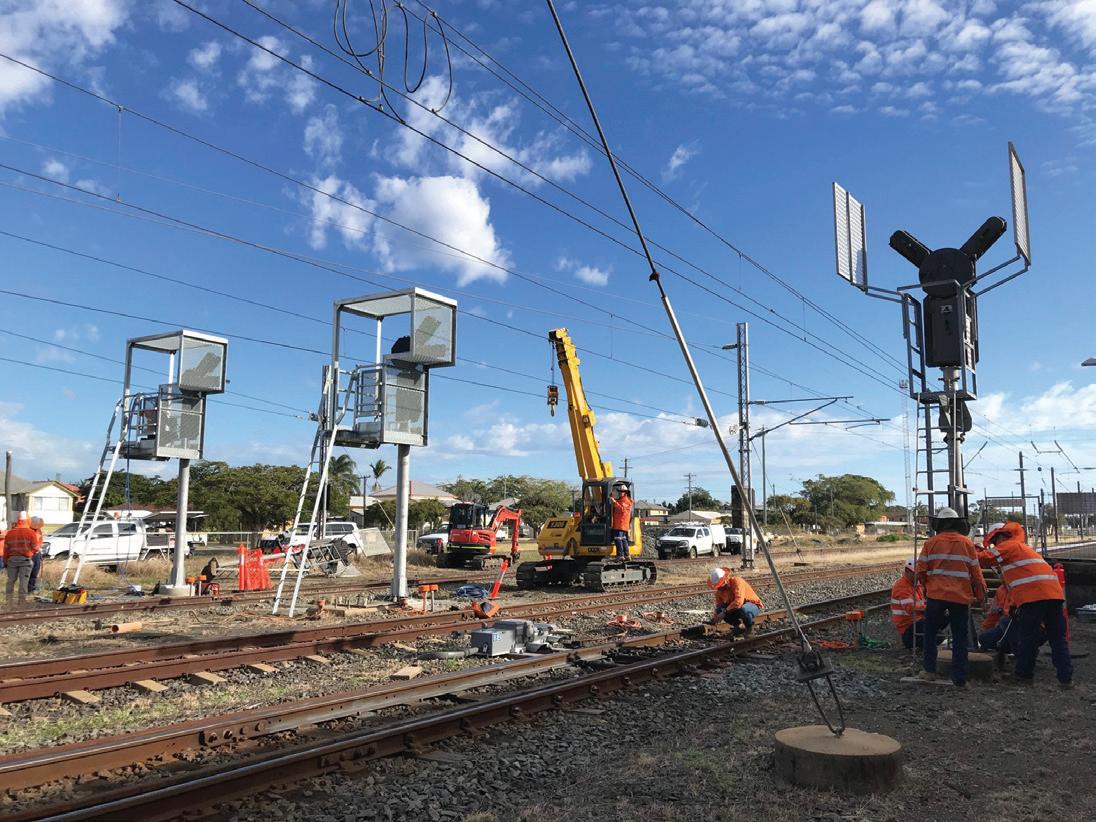
The 12-month project replaced the region’s signalling system with a more reliable system designed to effectively facilitate safe train movements and be easier to maintain.
Bundaberg’s previous rail signalling system was linked, meaning that when there was a fault, all rail crossings in the area were activated as a safety precaution, with the potential to cause widespread traffic impacts.
The brand new signals isolate unplanned incidents on train lines, unlike the old system which would leave local traffic at a standstill by shutting all of the city’s boom gates.
March 2020 // Issue 14 www.infrastructuremagazine.com.au
70
SIGNALLING, TRACKING AND CONTROL SYSTEMS
The project was delivered by Queensland Rail staff as well as Siemens Mobility, Bundaberg Refrigeration and Electrical, DIX Manufacturing, Forgacs Constructions, AUSCO, TPS and other local and Brisbane-based contractors.
YULIYA, CAN YOU PLEASE PROVIDE A TECHNICAL RUNDOWN OF HOW THE NEW SIGNALLING TECHNOLOGY WORKS AND WHAT IMPROVEMENTS HAVE BEEN MADE?
The new Bundaberg signalling system has replaced the three previous operating systems at Bundaberg, Bundaberg North and Gooburrum, with one modern signalling interlocking system.
The system includes a new power equipment room with a backup uninterrupted power supply as well as a distributed signalling system, ensuring dual redundancy for power, network and location critical modules.
This allows the continuous operation of the system when a fault occurs, with automatic alarms sent to Queensland Rail’s Regional Control Centre.
The modules are “hot-swappable” meaning faulty modules can be replaced while in operation, with no interruption to the working system.
Unlike the old system, which was first commissioned in 1983, both vital and non-vital logic are combined, minimising cross-boundary complications and allowing for a much faster processing time.
Additionally, all 12km of existing underground power, multicore and fibre-optic cables were upgraded to provide spare capacity as well as fibre optic communication and signalling system vital redundancy. In line with industry best practices, a brand new four-conduit cable route was installed to house the new cables, providing the opportunity for cost-effective maintenance and repairs.
BUNDABERG’S OLD RAIL SIGNALLING SYSTEM WAS LINKED, HOW MUCH OF AN ISSUE WAS THIS CAUSING TO THE COMMUNITY AND HOW IS THE NEW SYSTEM DIFFERENT?
The previous system controlled six out of seven level crossings from one centralised point, powered by one power supply with a backup generator.
As a result, when a fault occurred, all crossings would be activated.
The level crossings at Maynard Road, Thabeban Road, Verdant Siding Road, Perry Street, Hanbury Street, Bourbong Street and Walker Street were upgraded to the latest technology as part of the project. They now have isolated power supplies, with a diverse backup. Additionally, delinking from the interlocking means when a fault occurs, only the associated crossing is activated, reducing the risk of disruption to the public.
WHAT SORT OF ASSET MANAGEMENT WILL BE INVOLVED IN THE NEW SYSTEM GOING FORWARD? WILL IT BE EASIER TO MAINTAIN THAN THE OLD SYSTEM?
With the remote monitoring and double redundancy, the system has a proven record of being highly-reliable and easy to maintain. Now that the system has been added to Queensland Rail Enterprise Asset Management System (EAMS), the routine remote scheduled diagnostic will be carried out periodically.
WHAT RESULTS HAS THE REGION SEEN SINCE THE PROJECT
WAS COMPLETED?
The project implementation was delivered in 12 stages to minimise disruption to the public and train operations. The Power Equipment Room (PER) was replaced during the first stage commissioning in March 2018, and since the final commissioning in September 2019, there has not been a single failure recorded in the area.
The added benefit is being able to change the application logic software in-house.
IS THIS SIGNALLING TECHNOLOGY BEING USED ELSEWHERE?
This new signalling technology is currently in operation in two areas of South East Queensland including Wulkuraka and Banyo.

www.infrastructuremagazine.com.au SIGNALLING, TRACKING AND CONTROL SYSTEMS
FEATURES SCHEDULE
72
INDEX
cities Earthmoving outlook Noise and vibration Ports Bridges Automated and electric vehicles
development Intelligent Transport Systems (ITS)
surfacing and design, and flexible pavements DISTRIBUTION SMART CITIES 2020 THE ITS ASIA PACIFIC FORUM
2021 Deadline: TBC Signalling, tracking and control systems Condition monitoring and maintenance Software, communications and connectivity Spatial & GIS Rail Equipment Training and skills DISTRIBUTION SMART CITIES 2021 June 2020 Deadline: 10 April 2020
ADVERTISERS’
Smart
Urban
Road
March
Ancor Loc 25 CORE 2020 51 Hard Metal Industries 11 Hexagon PPM 47 InfraBuild 43 17th ITS Asia Pacific Forum IBC Madison Technologies OBC Position Partners 37 Pyrotek 3 RICS 55 Taylors 21 TM Stagetec Systems 41 Vermeer IFC - 1
2020 Deadline: 25 September 2020
IoT & cloud communication
Disaster management Corrosion Landscaping and vegetation management
learning Recycling and waste management DISTRIBUTION AUSRAIL AUSTRALIAN AIRPORTS ASSOCIATION CONFERENCE 2020 OCEANIA DAMAGE PREVENTION CONFERENCE
2020 Deadline: 3 July 2020 Road and traffic Concrete Tunnels Safety and risk management Cranes & heavy lifting Sustainability Freight and logistics Asset inspection & drones/UAVS Asset management Security and critical infrastructure Mobility as a Service DISTRIBUTION CRITICAL INFRASTRUCTURE SUMMIT MOBILITY AS A SERVICE 2020 March 2020 // Issue 14 www.infrastructuremagazine.com.au
November
AusRail
Airports
Machine
September

REGISTRATION NOW OPEN!




Hosted by Program themes ITS Innovation Creating Liveable Communities Mobility as a Service, People and Environmental Sustainability Data Analytics and Artificial Intelligence in Transport Connected and Automated Vehicles, Vehicle and Network Safety, Internet of Things in Transport Transport Pricing, Tolling and Charging Freight and Logistics, including Aviation and Maritime Policy, Standards and Harmonisation Intelligent Transport = Accessible Transport
For the Asia Pacific Forum for Intelligent Transport Systems 2020 Over 1,250 attendees and 90 exhibitors from Asia Pacific and surrounds itsap2020.com
Defend your industrial networks.

Strengthen industrial cybersecurity without compromising efficiency.
As industrial devices become more connected through the Industrial Internet of Things (IIoT) there is not only great potential for businesses to optimise operations, there is also a significant challenge – cybersecurity. Moxa’s range of robust network devices meet the technical security requirements of the globally recognised IEC 62443 standard, which ensures your industrial control systems are well protected against network intrusions or attacks.
Connect with confidence.
Madison Technologies has been distributing Moxa’s reliable networking infrastructure Australia wide for more than 14 years. Our team is dedicated to ensuring our Moxa portfolio is fully supported with an extensive range held locally across our national supply chain, and a team of Moxa certificated sales and technical support engineers.
Sales Enquiries 1800 72 79 79 www.madison.tech




































 by Romilly Madew AO, CEO, Infrastructure Australia
by Romilly Madew AO, CEO, Infrastructure Australia










 by Rhianna King, Content Specialist, Infrastructure magazine
by Rhianna King, Content Specialist, Infrastructure magazine


















 Oby John Kilgour, CEO, Civil Contractors Federation Victoria
Oby John Kilgour, CEO, Civil Contractors Federation Victoria























































 by Andrew Meier, Executive Director/Chief Executive Officer, Australasian Centre for Rail Innovation (ACRI)
by Andrew Meier, Executive Director/Chief Executive Officer, Australasian Centre for Rail Innovation (ACRI)











